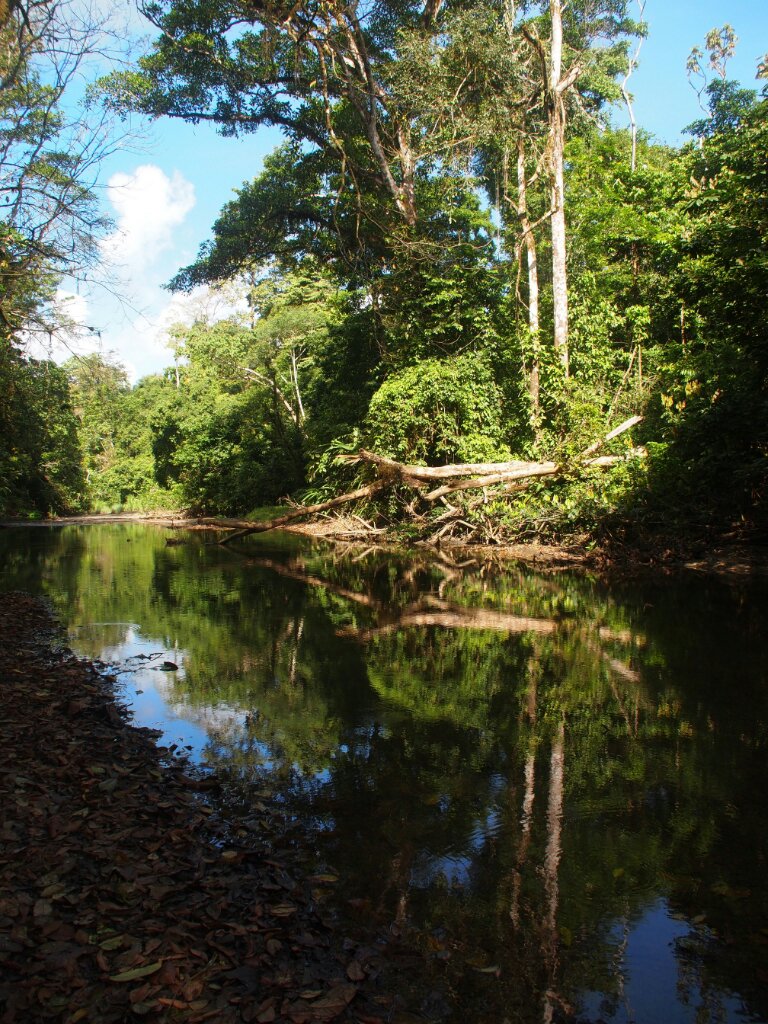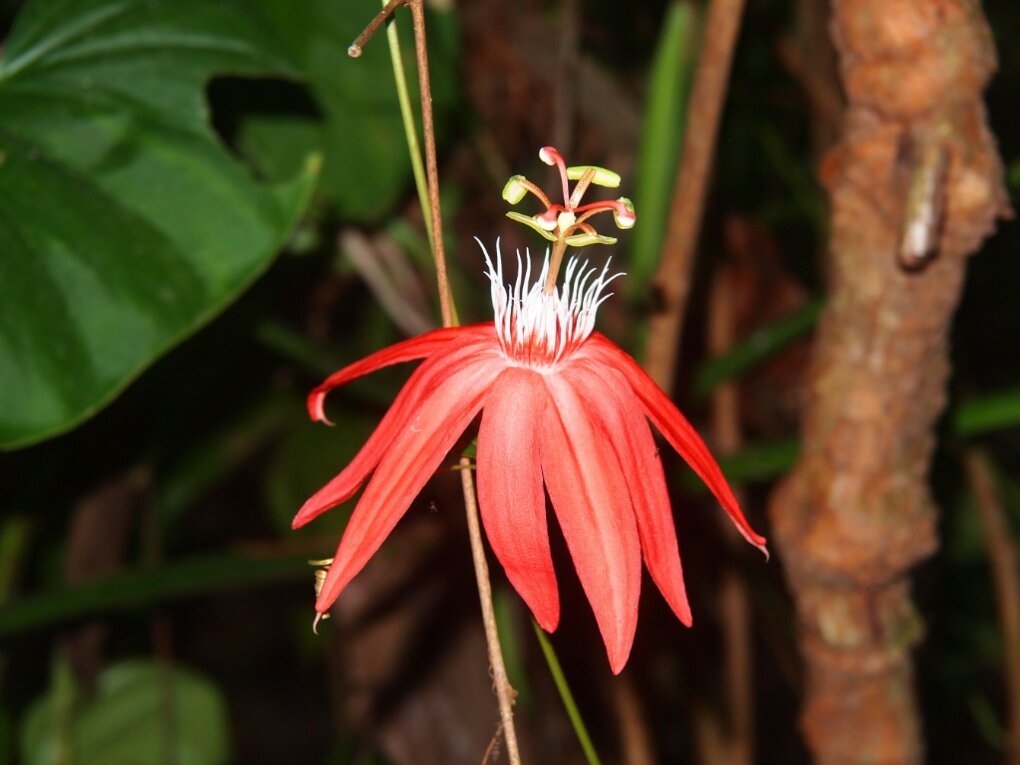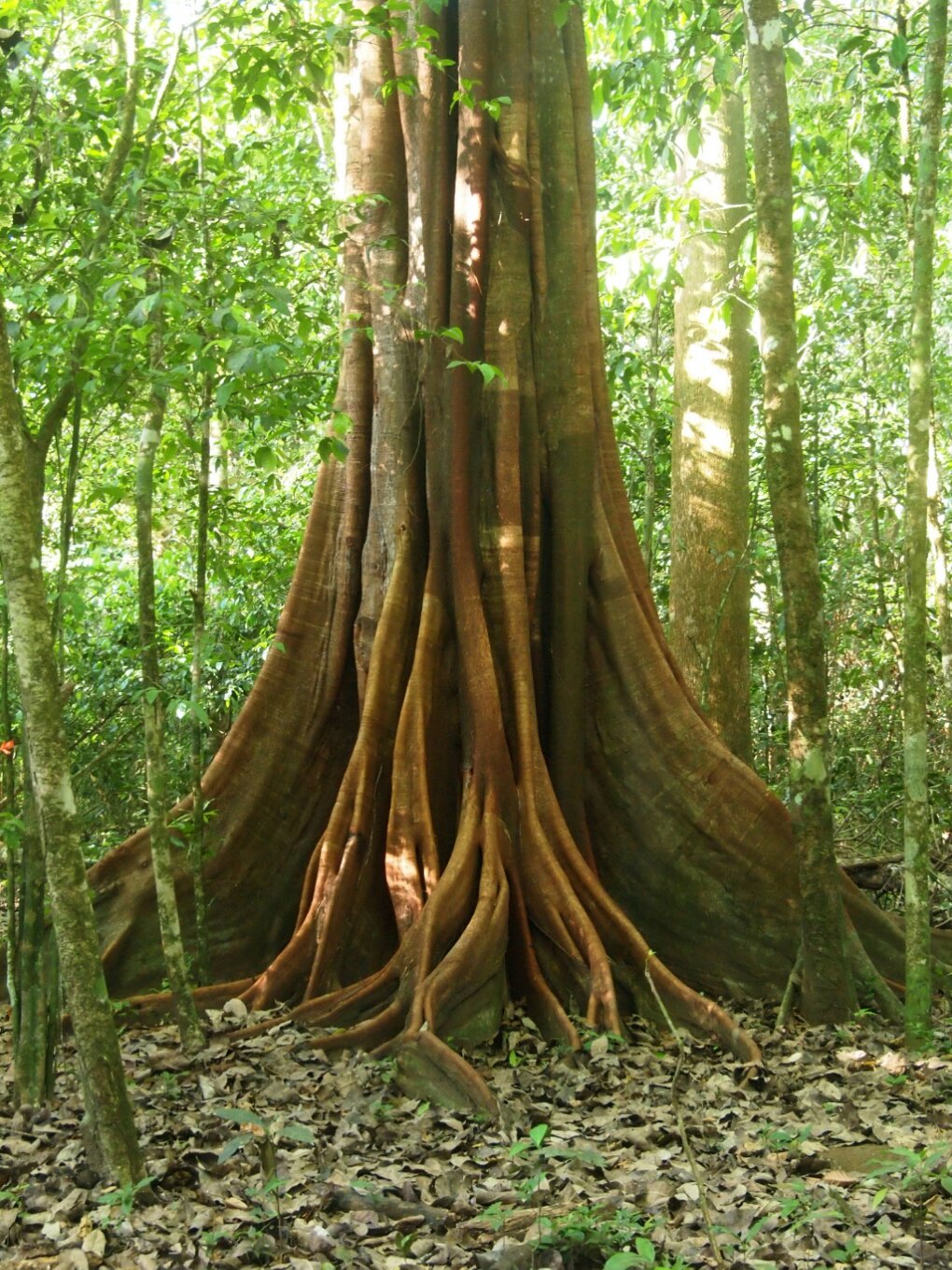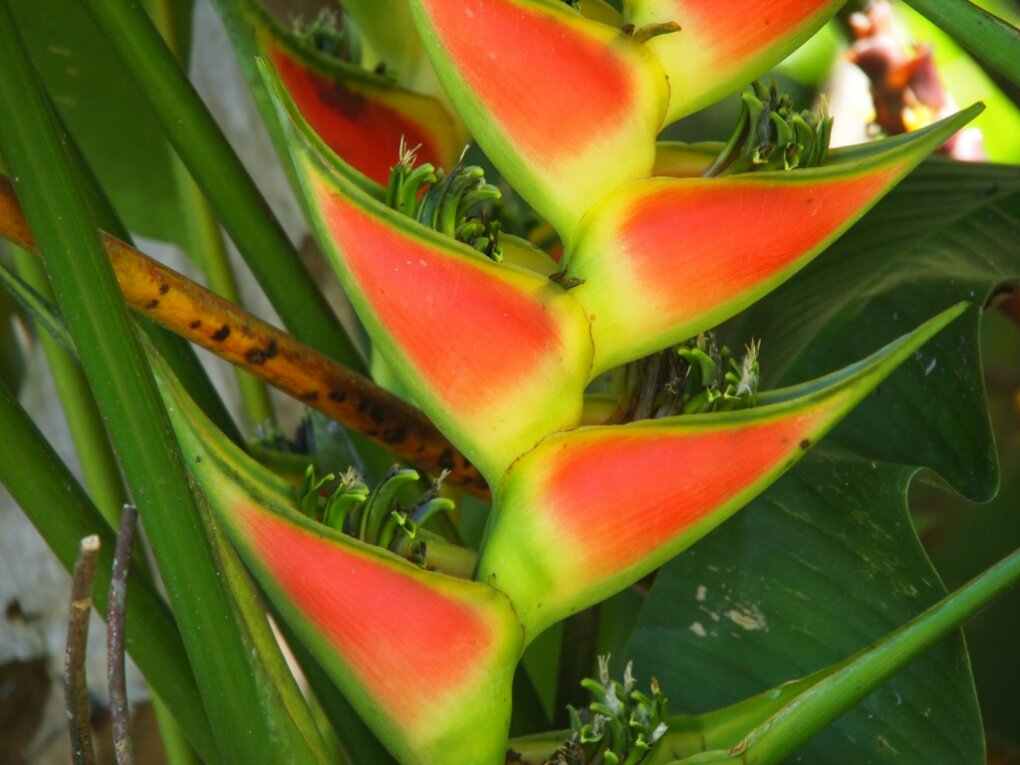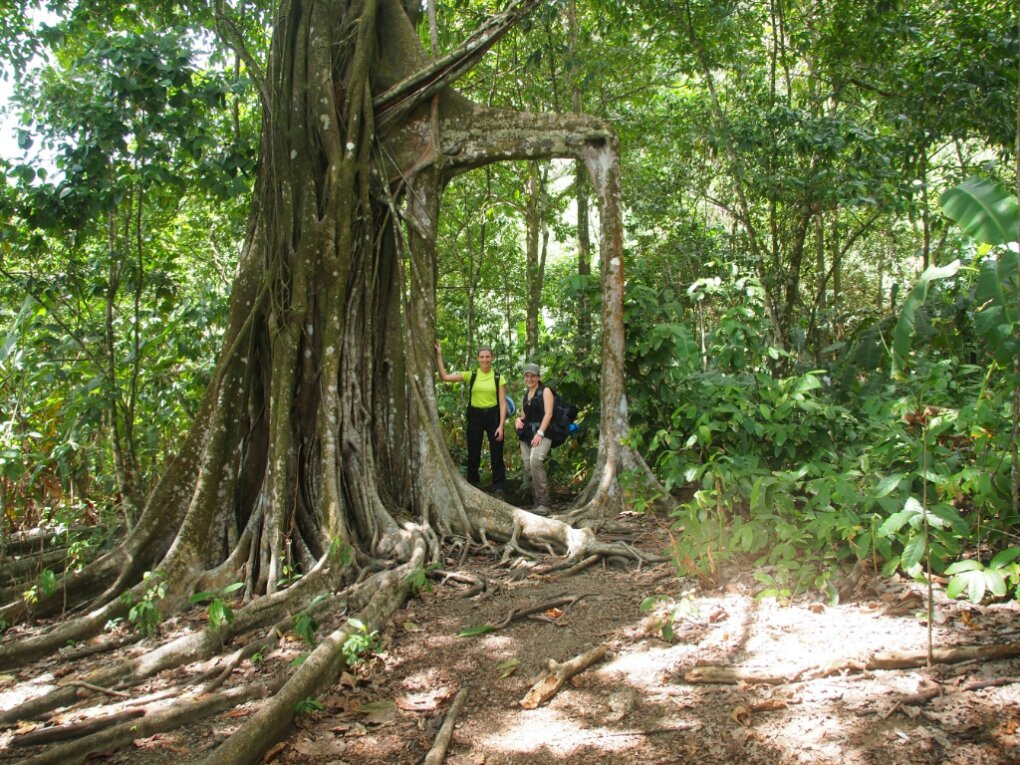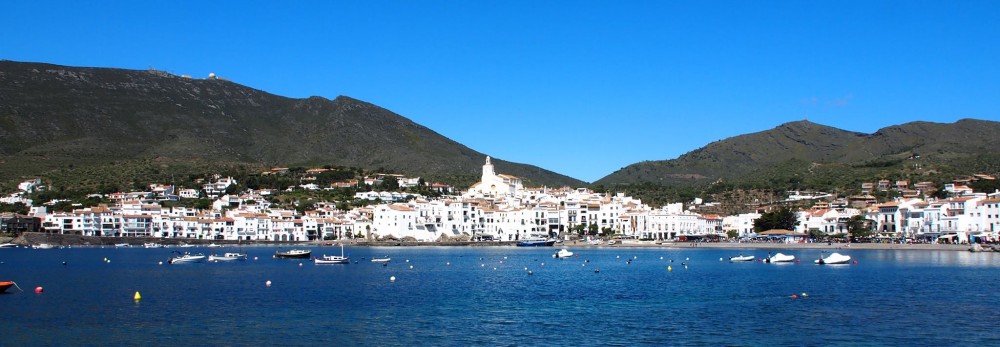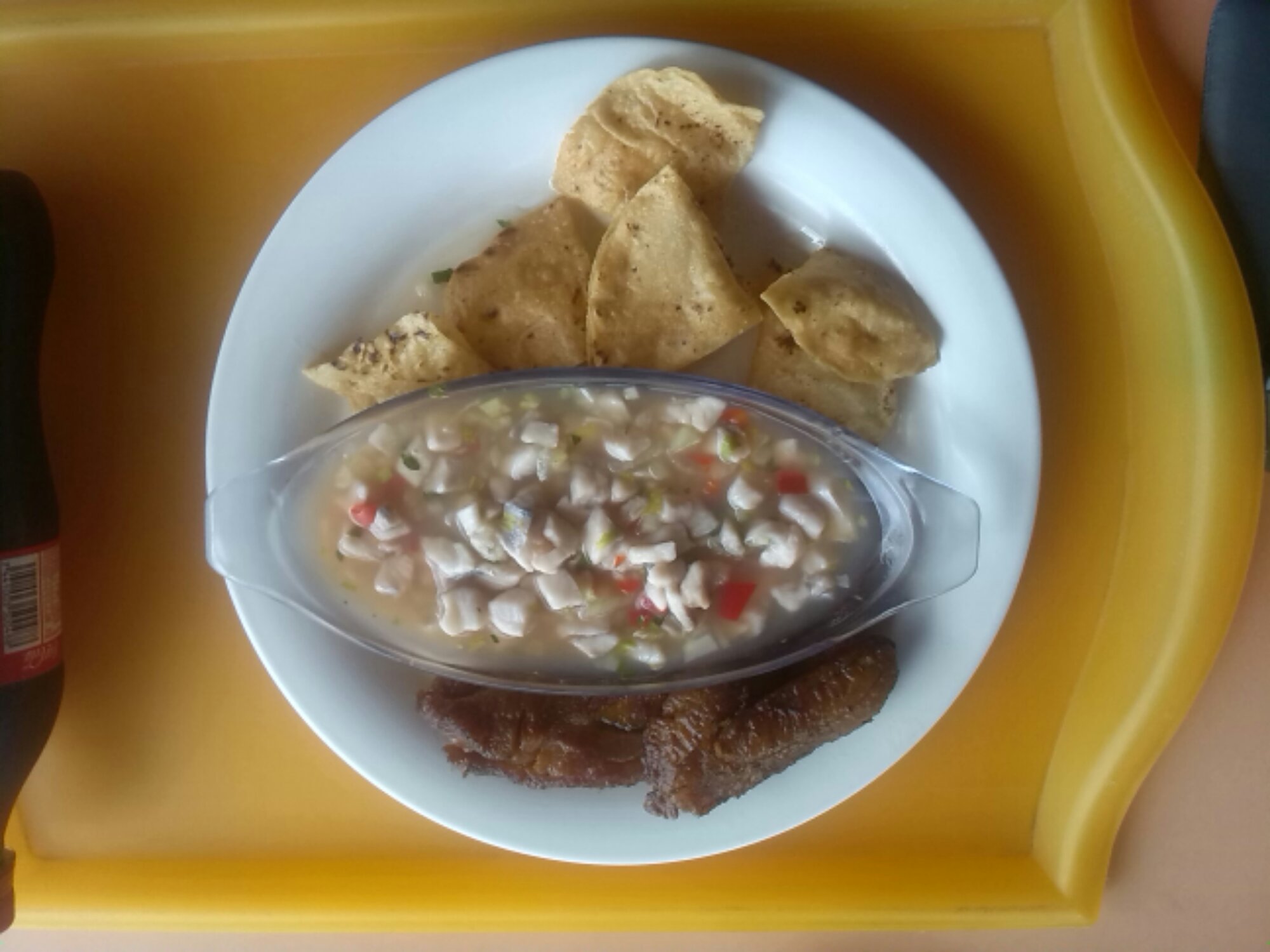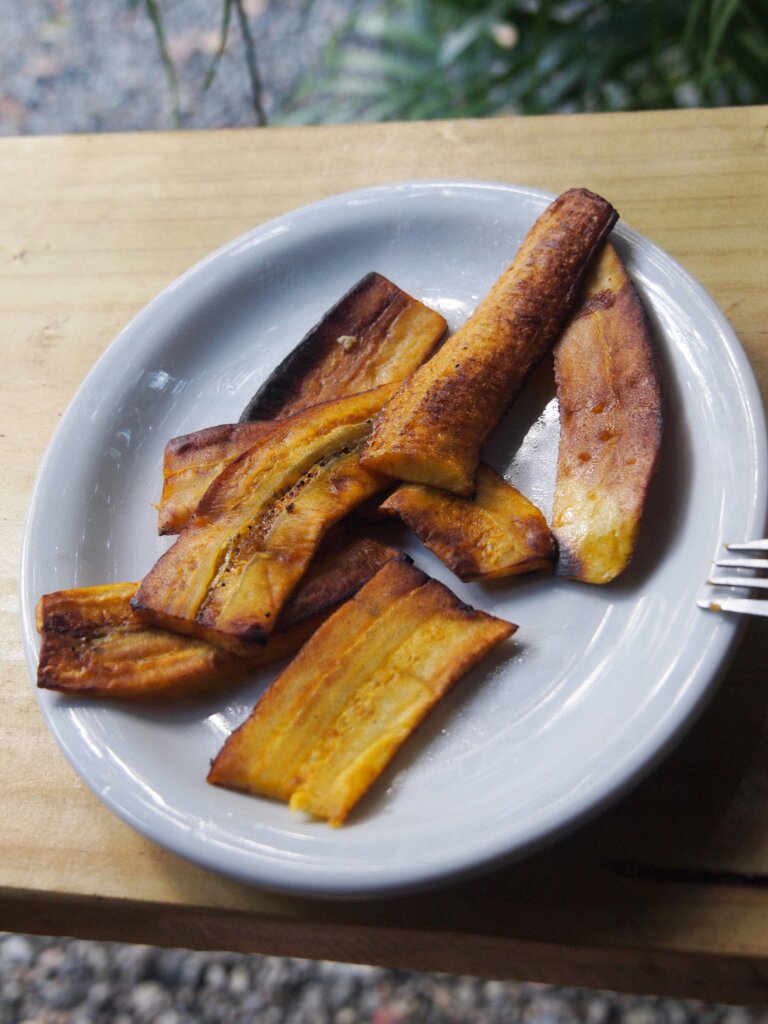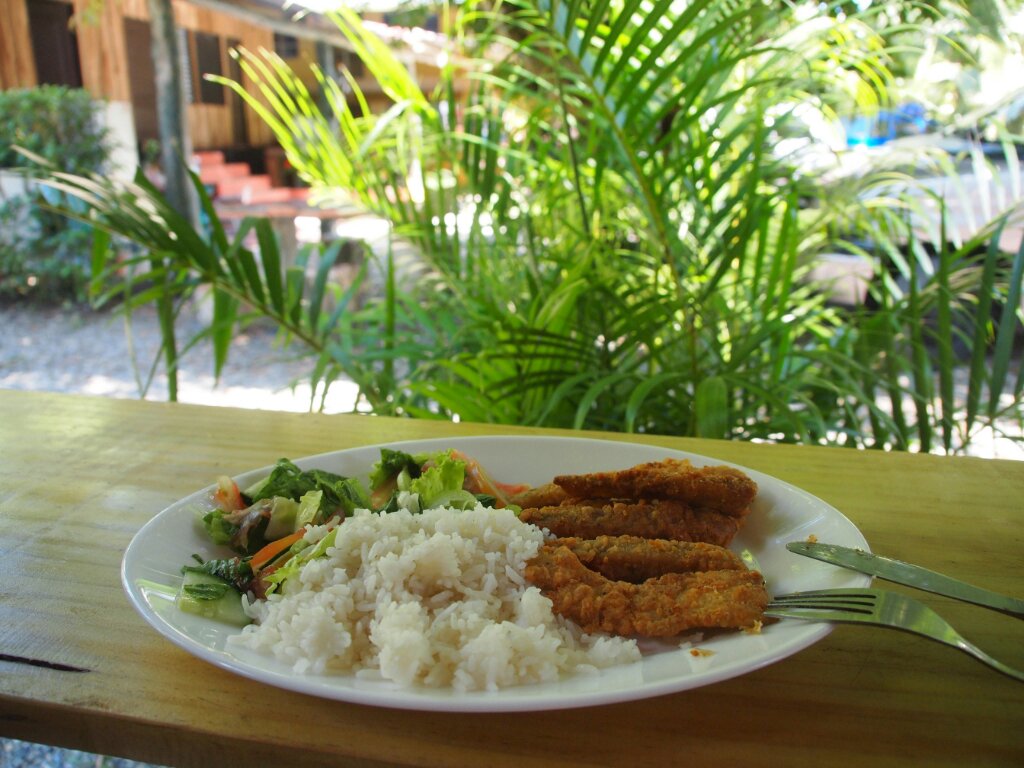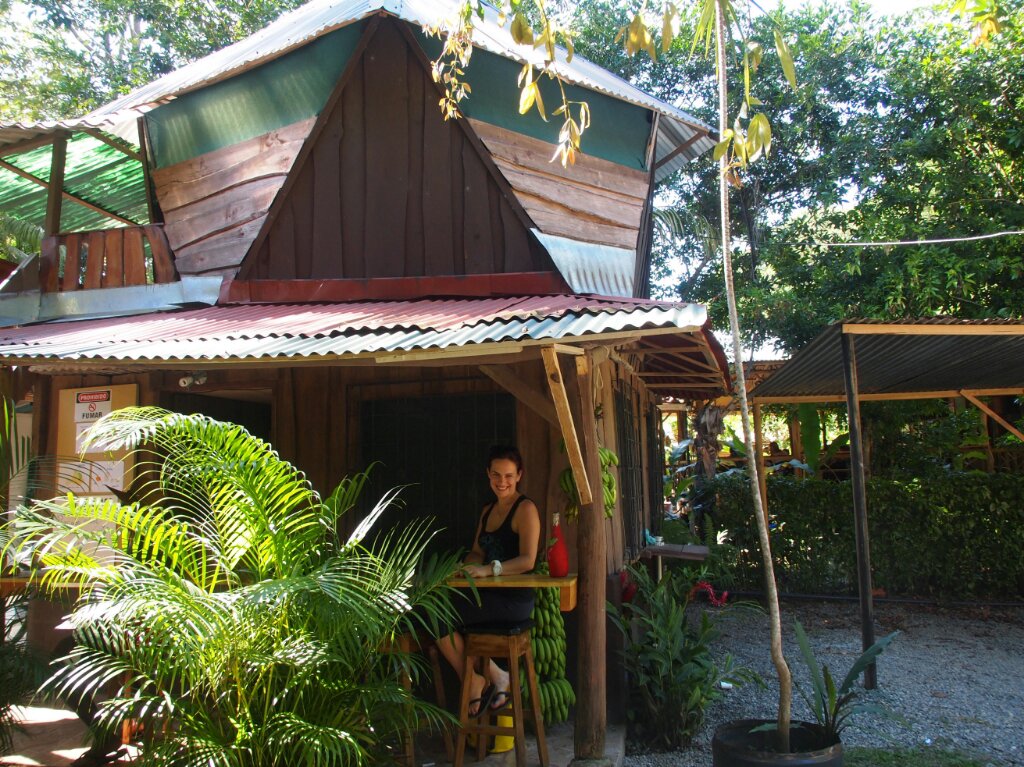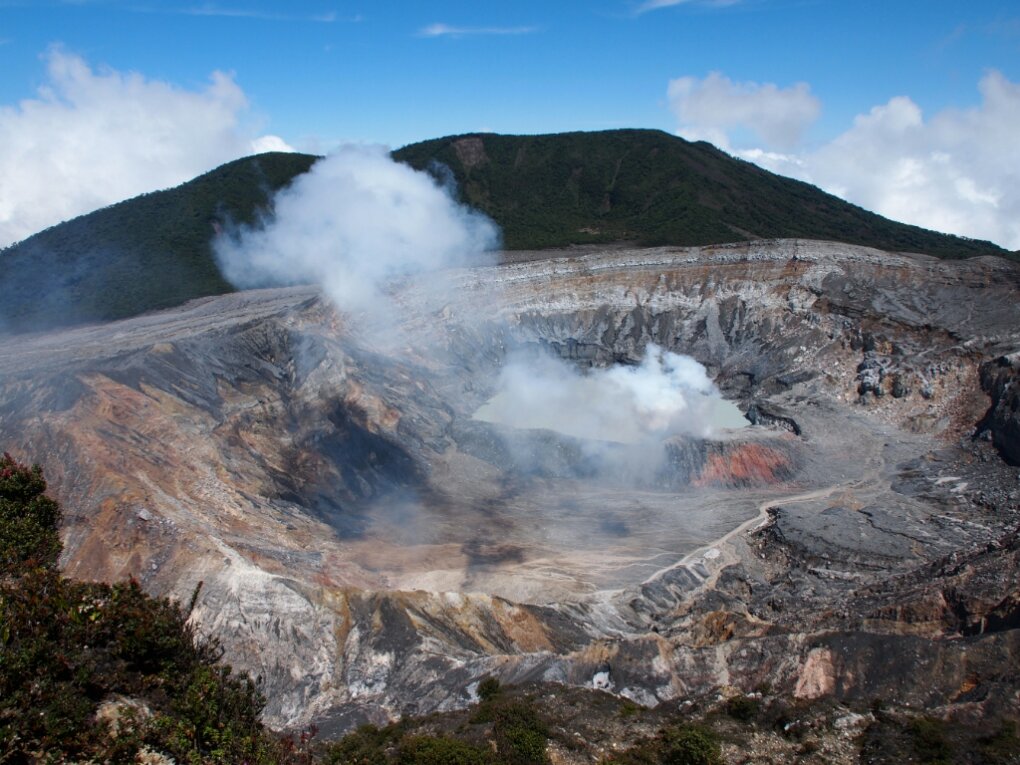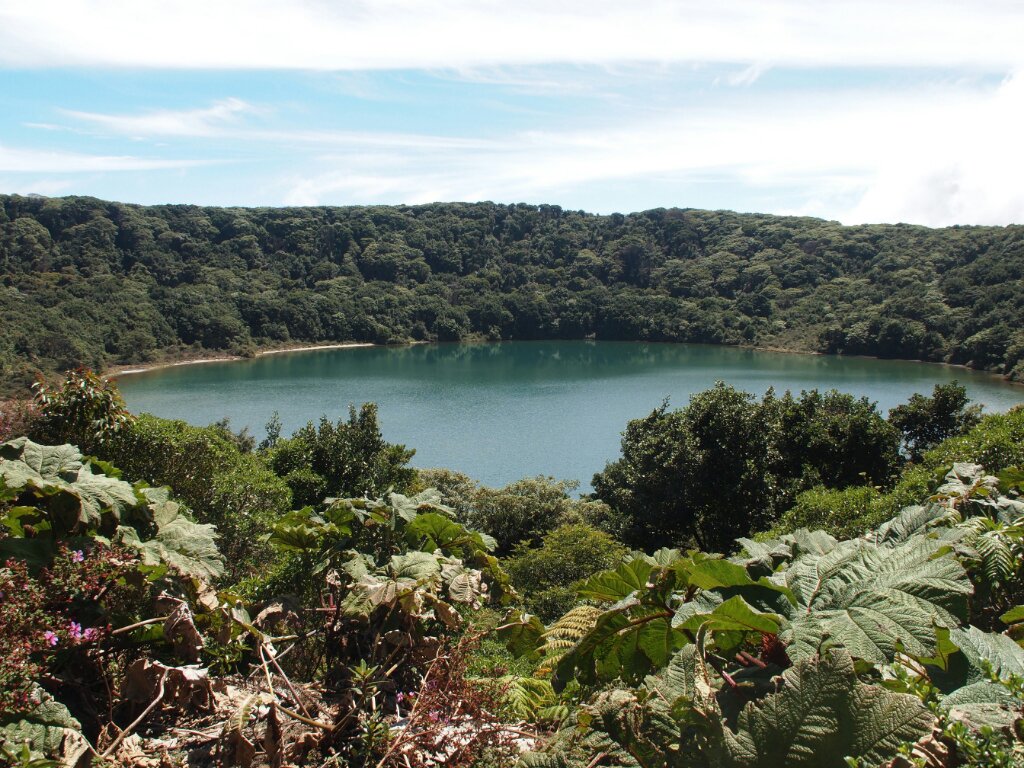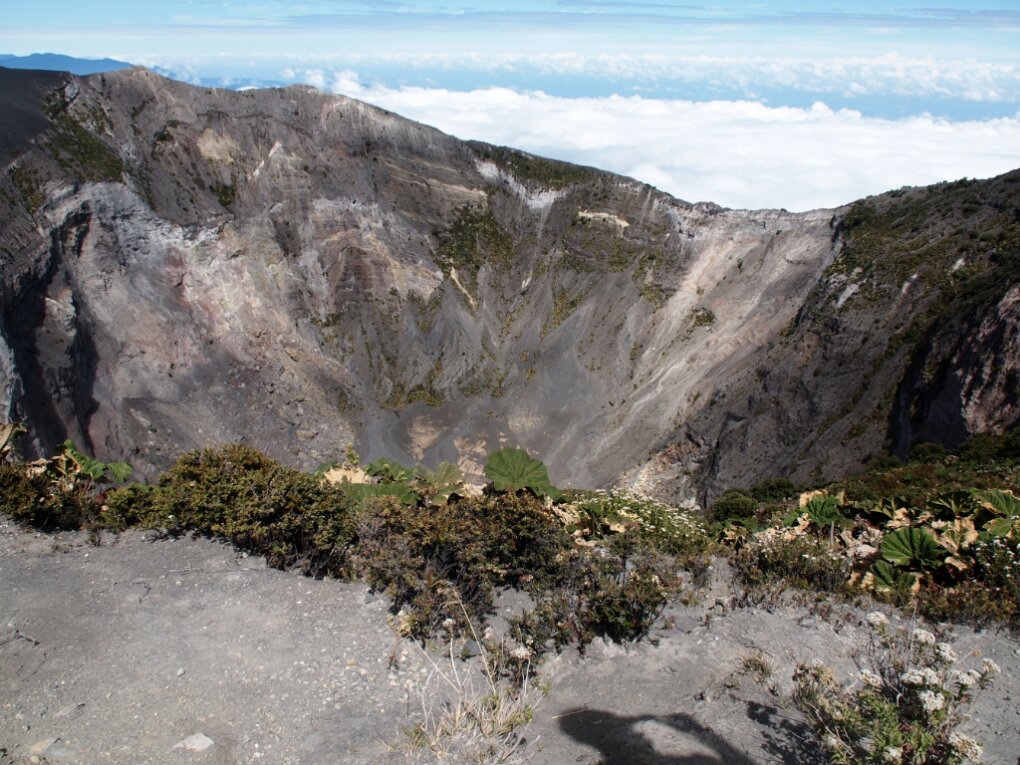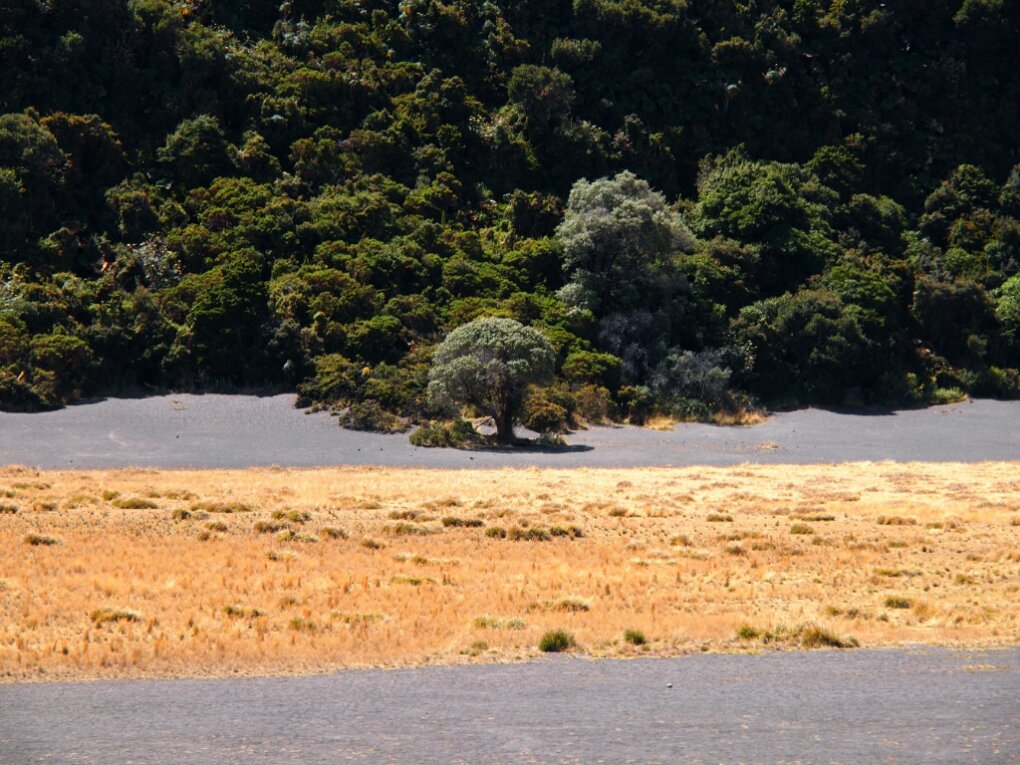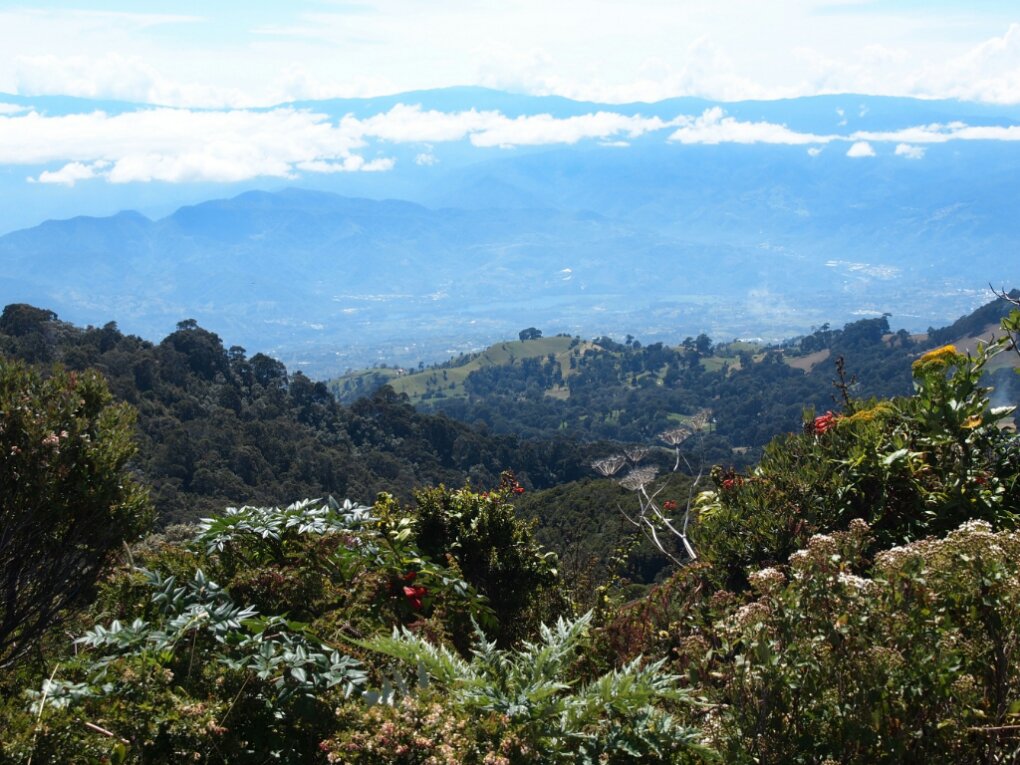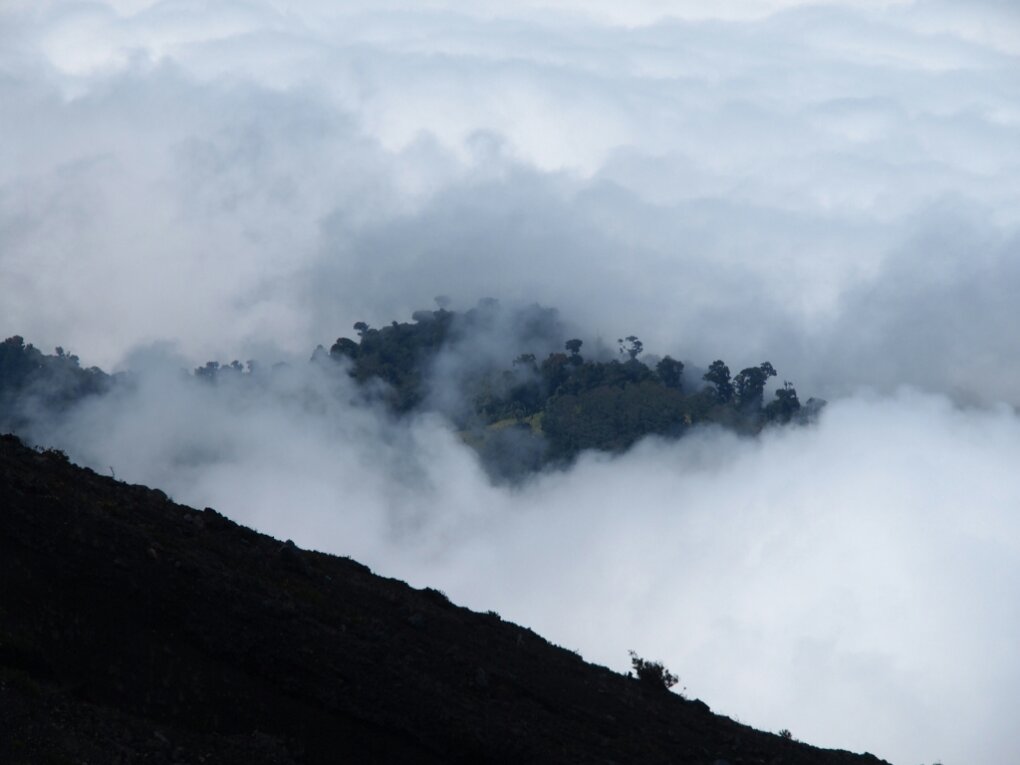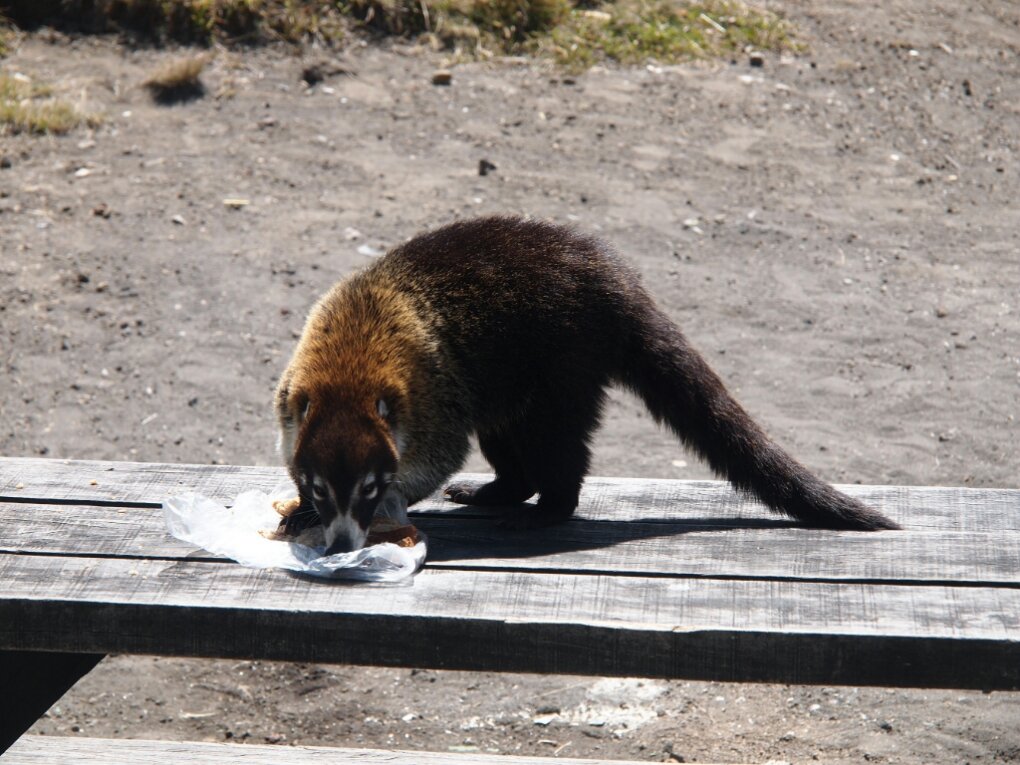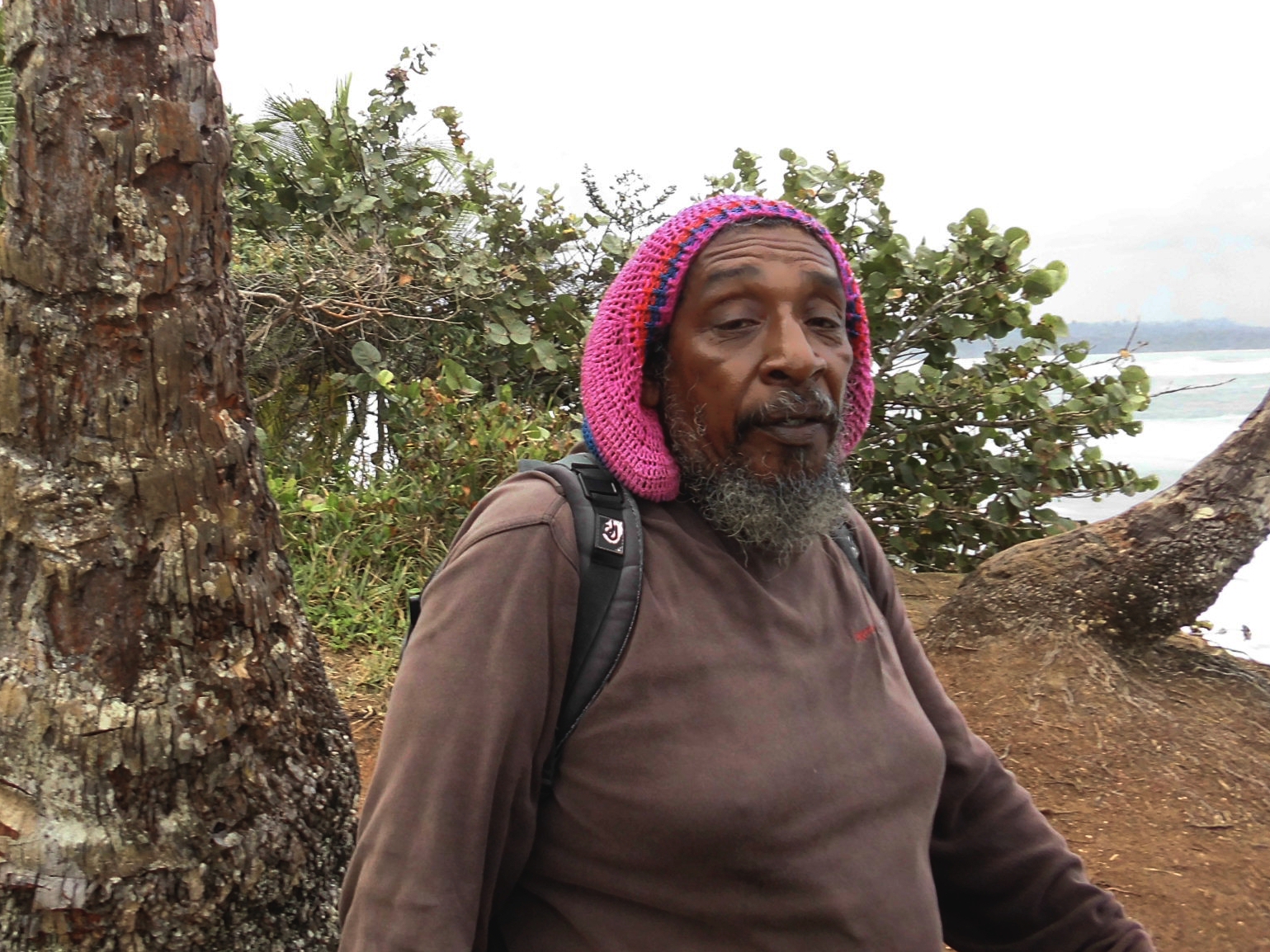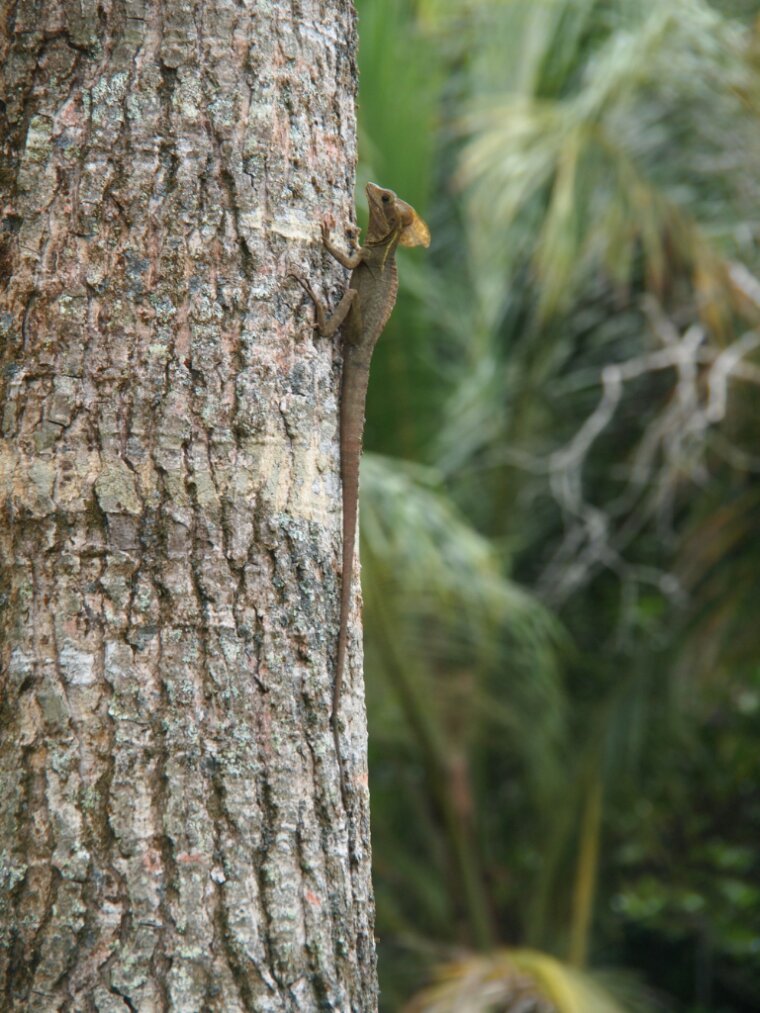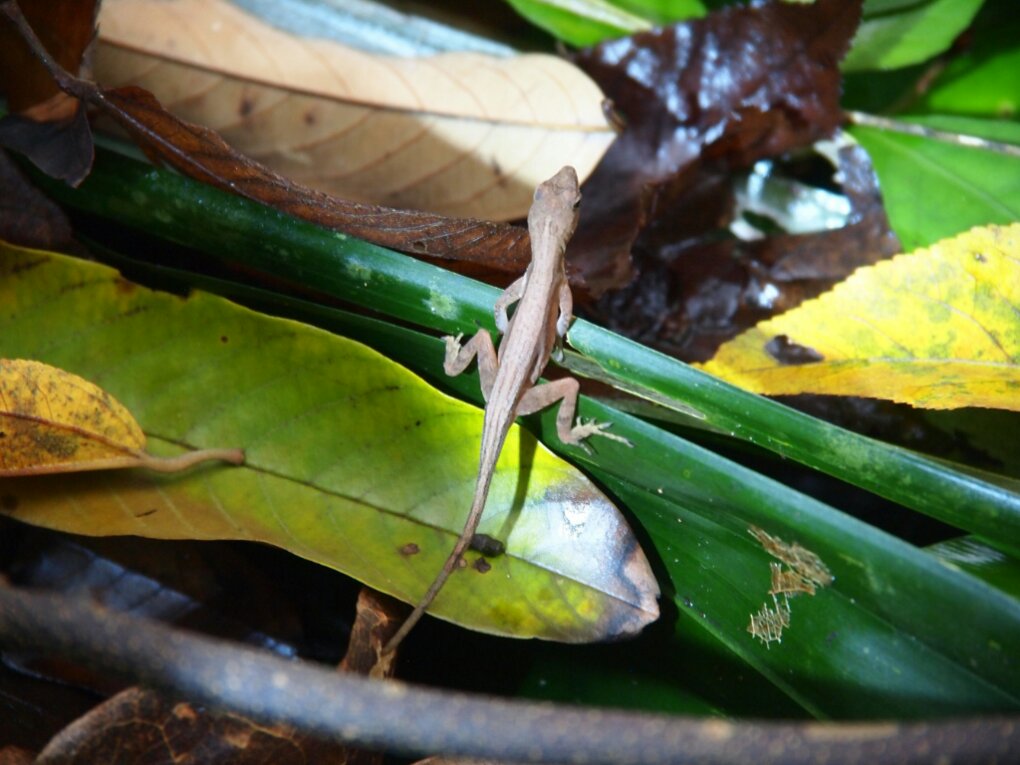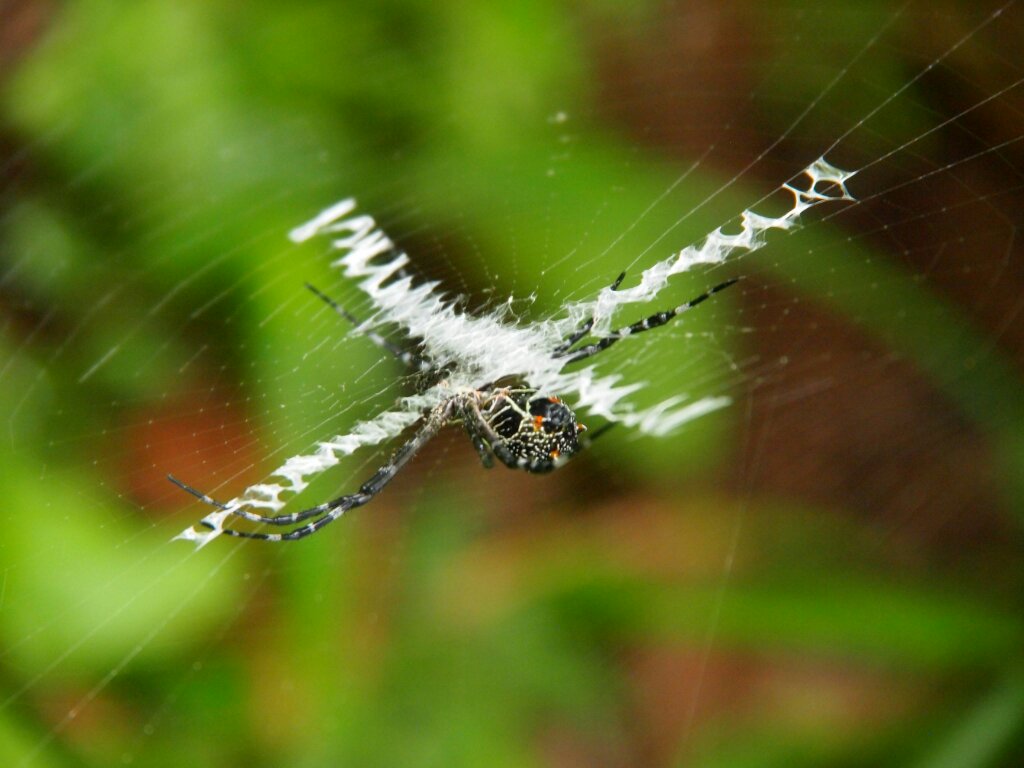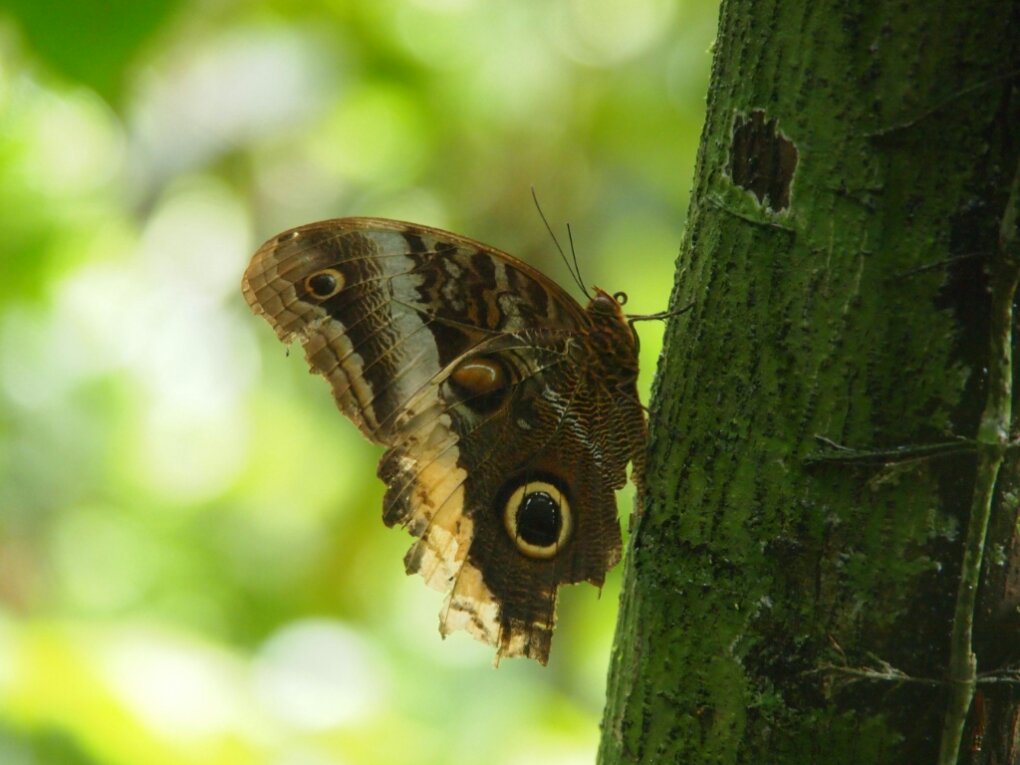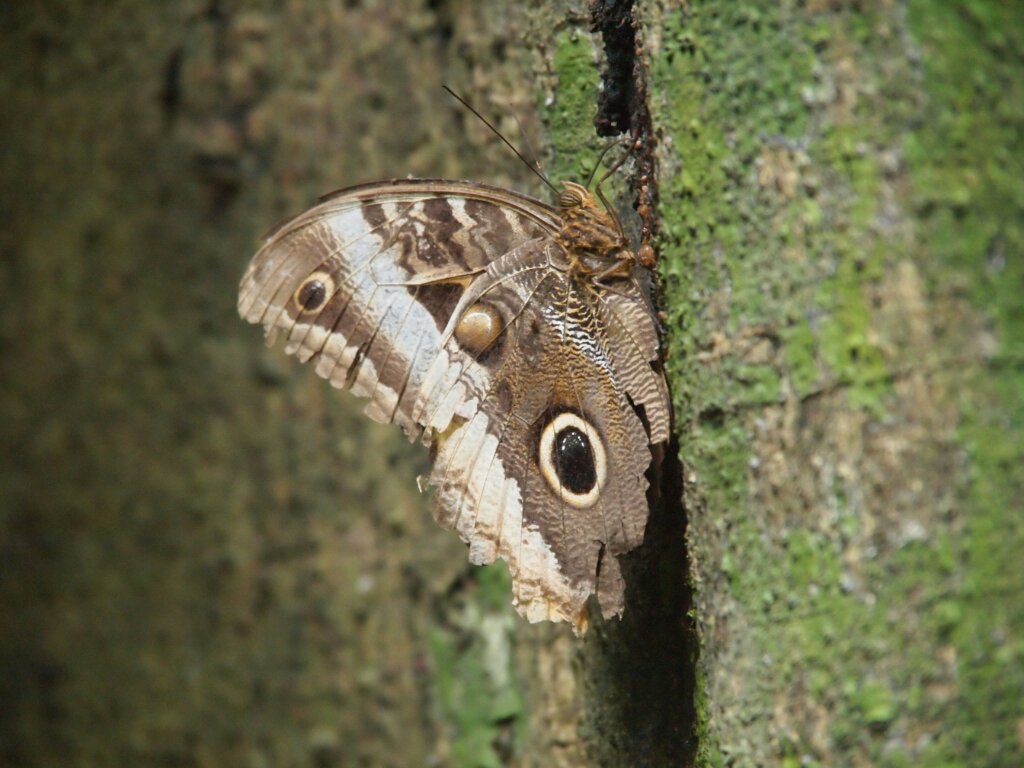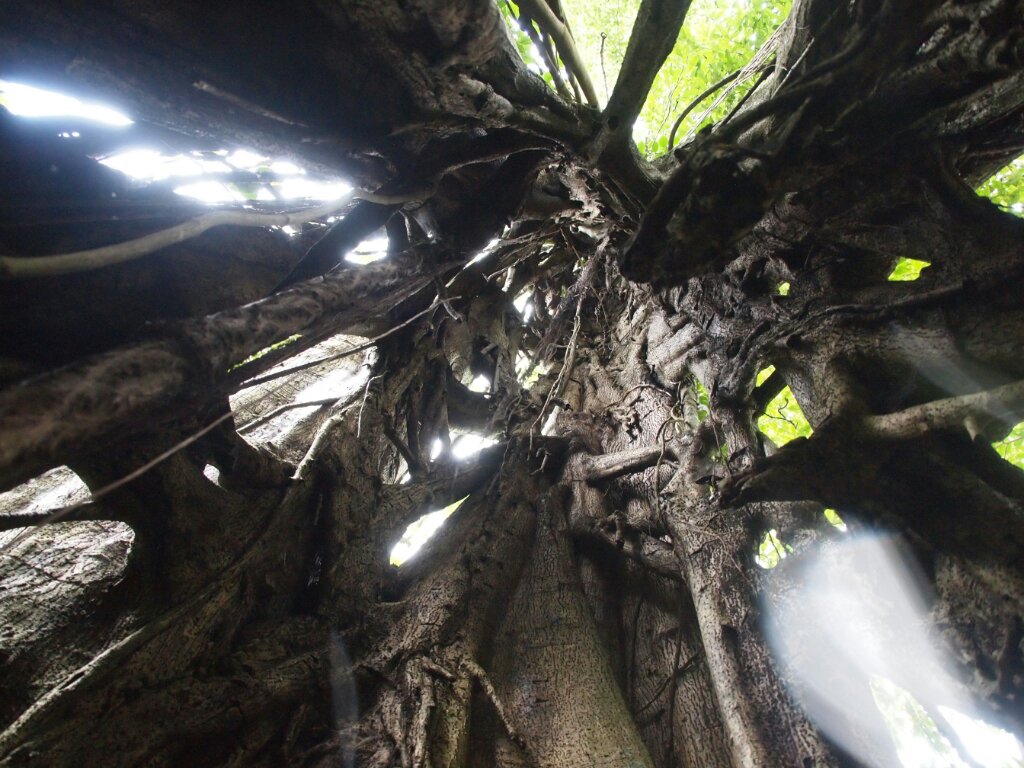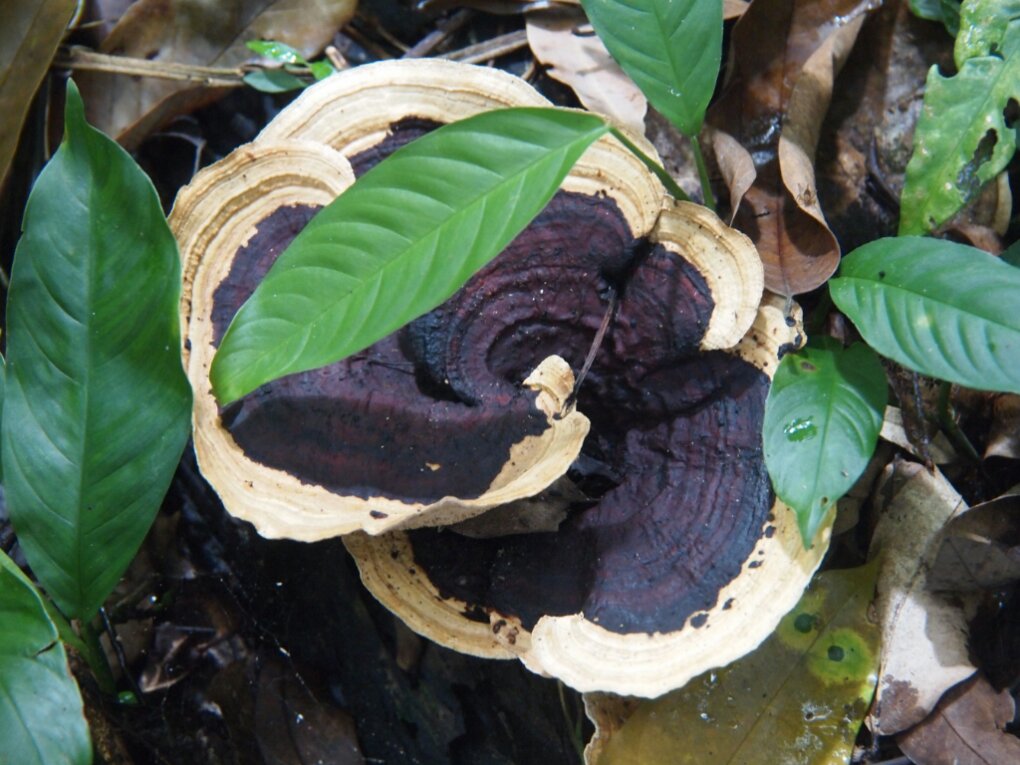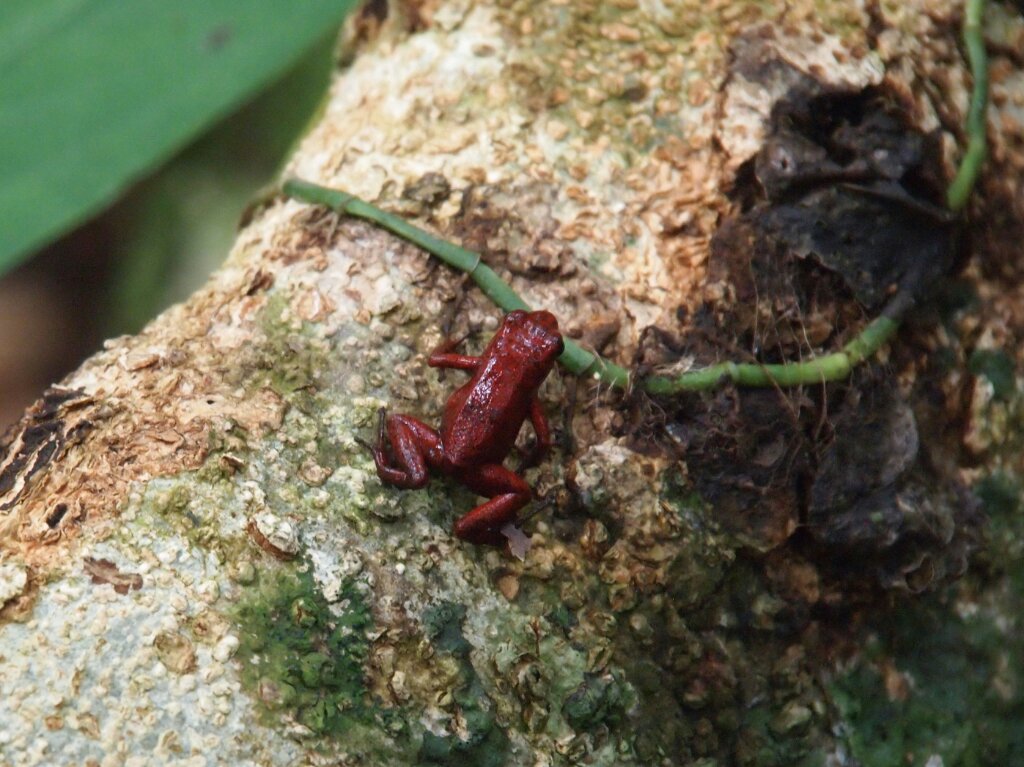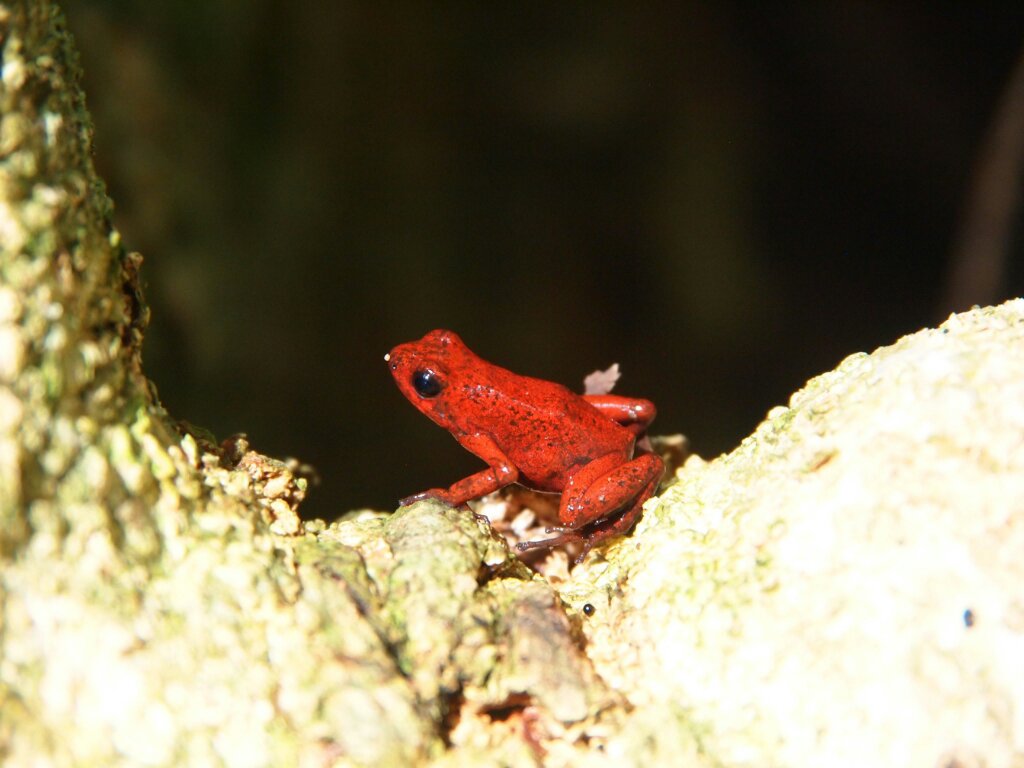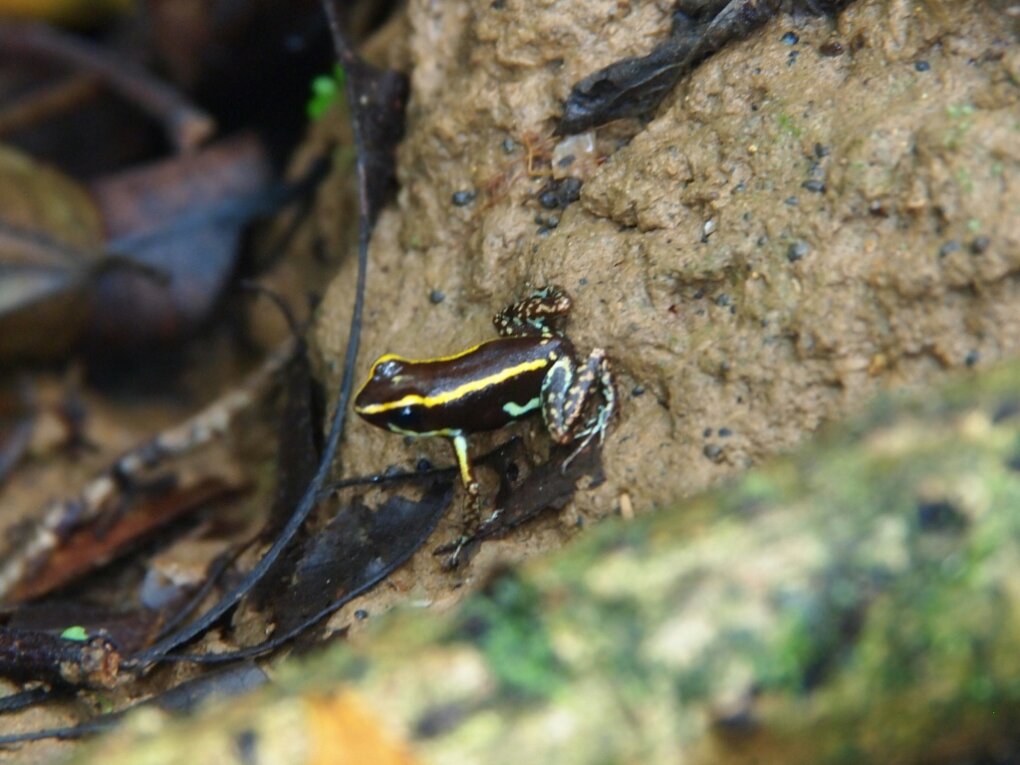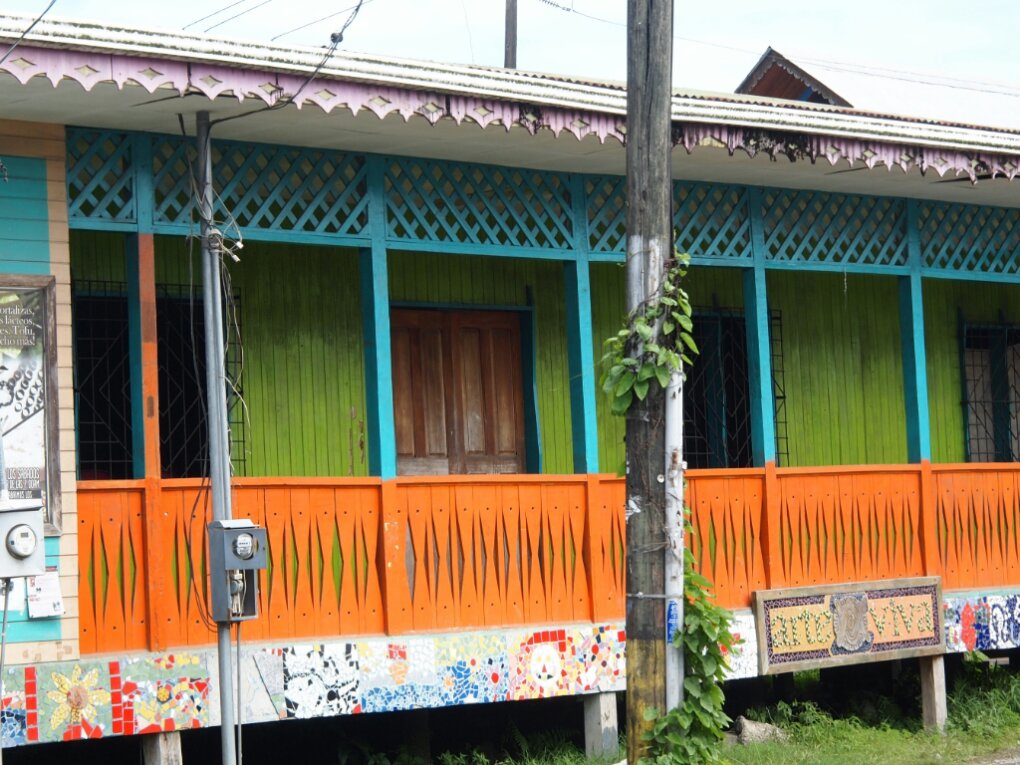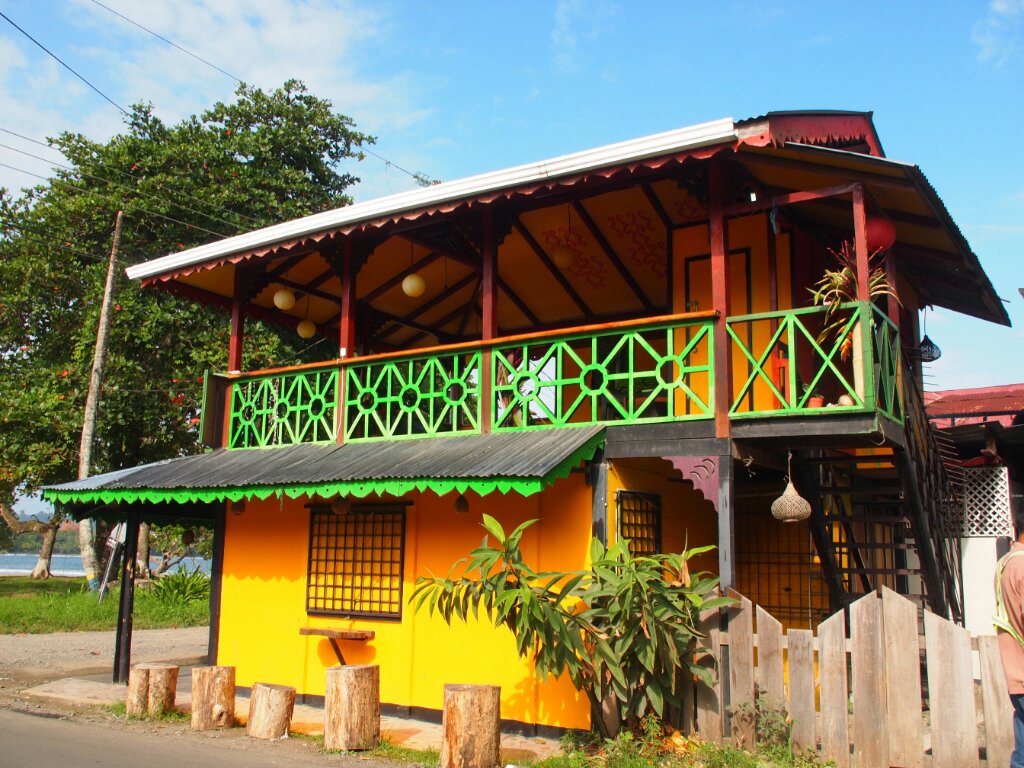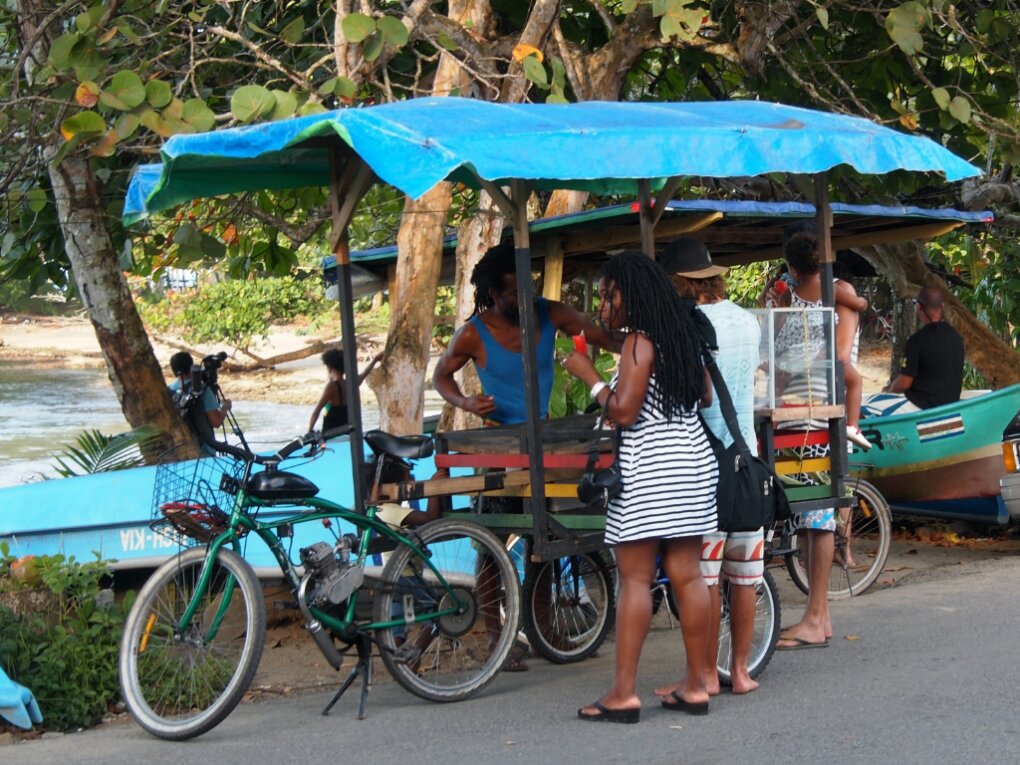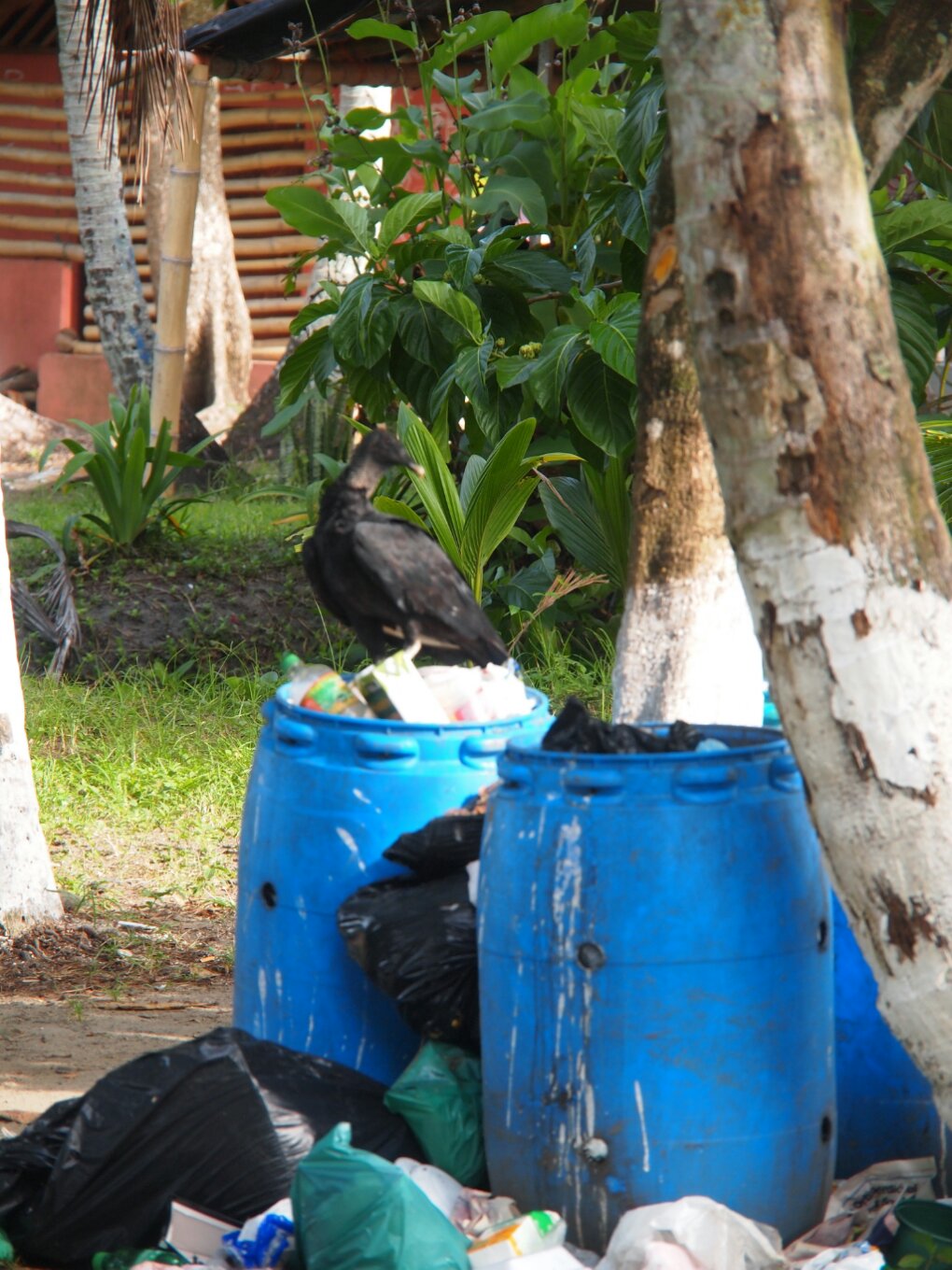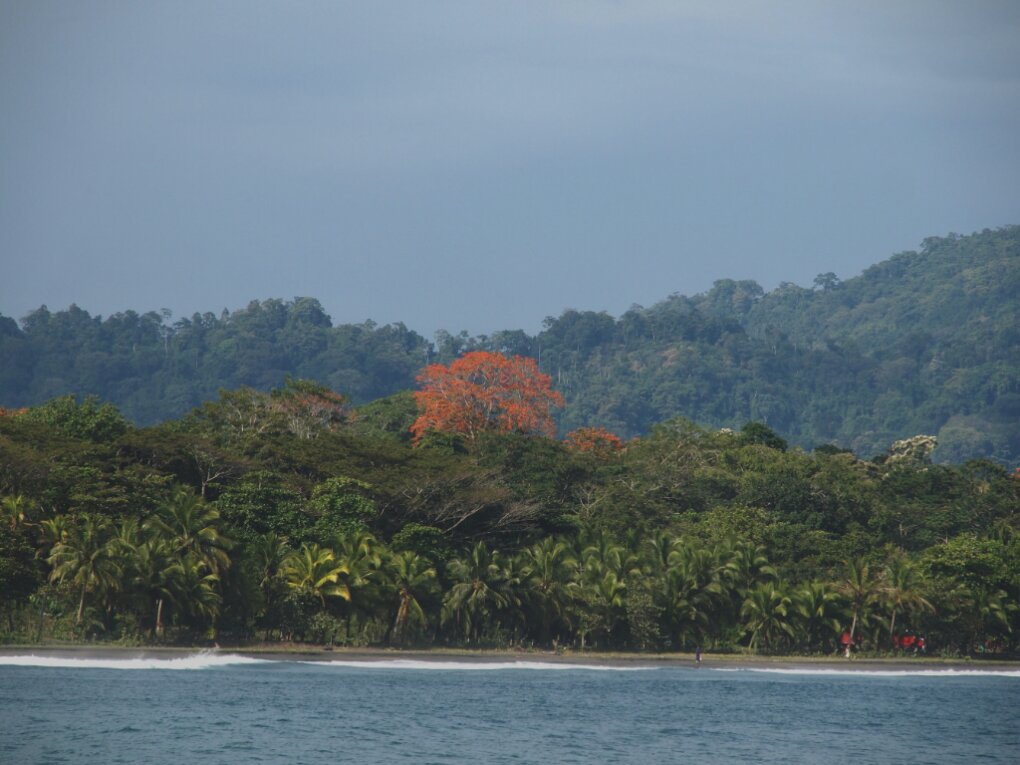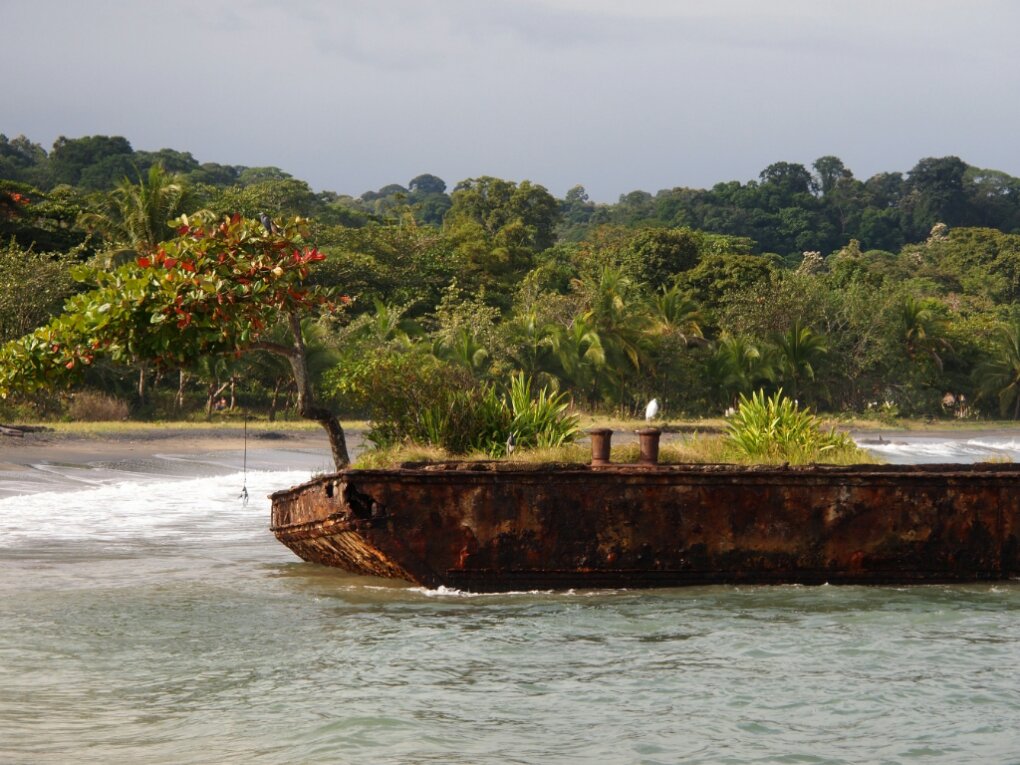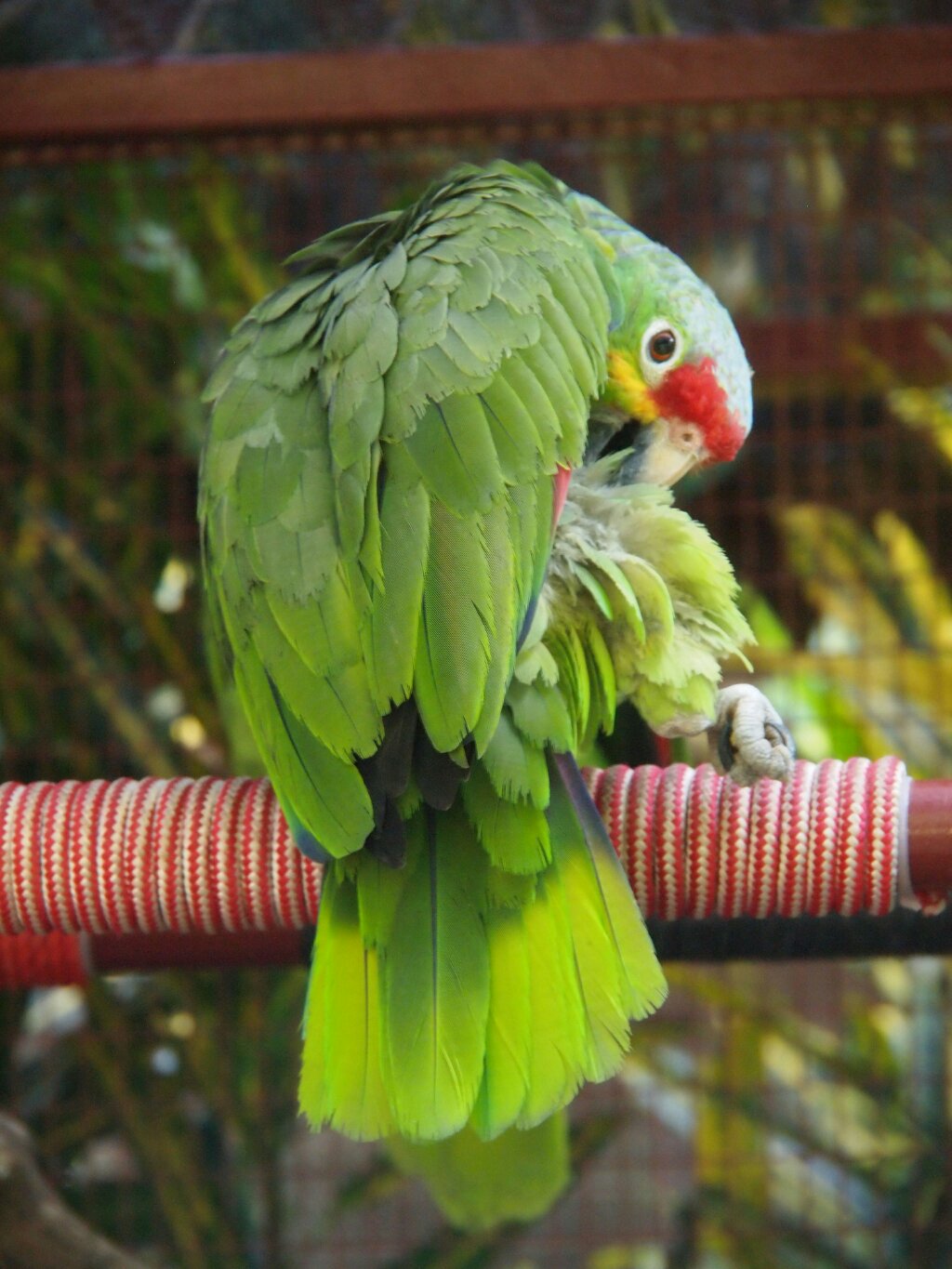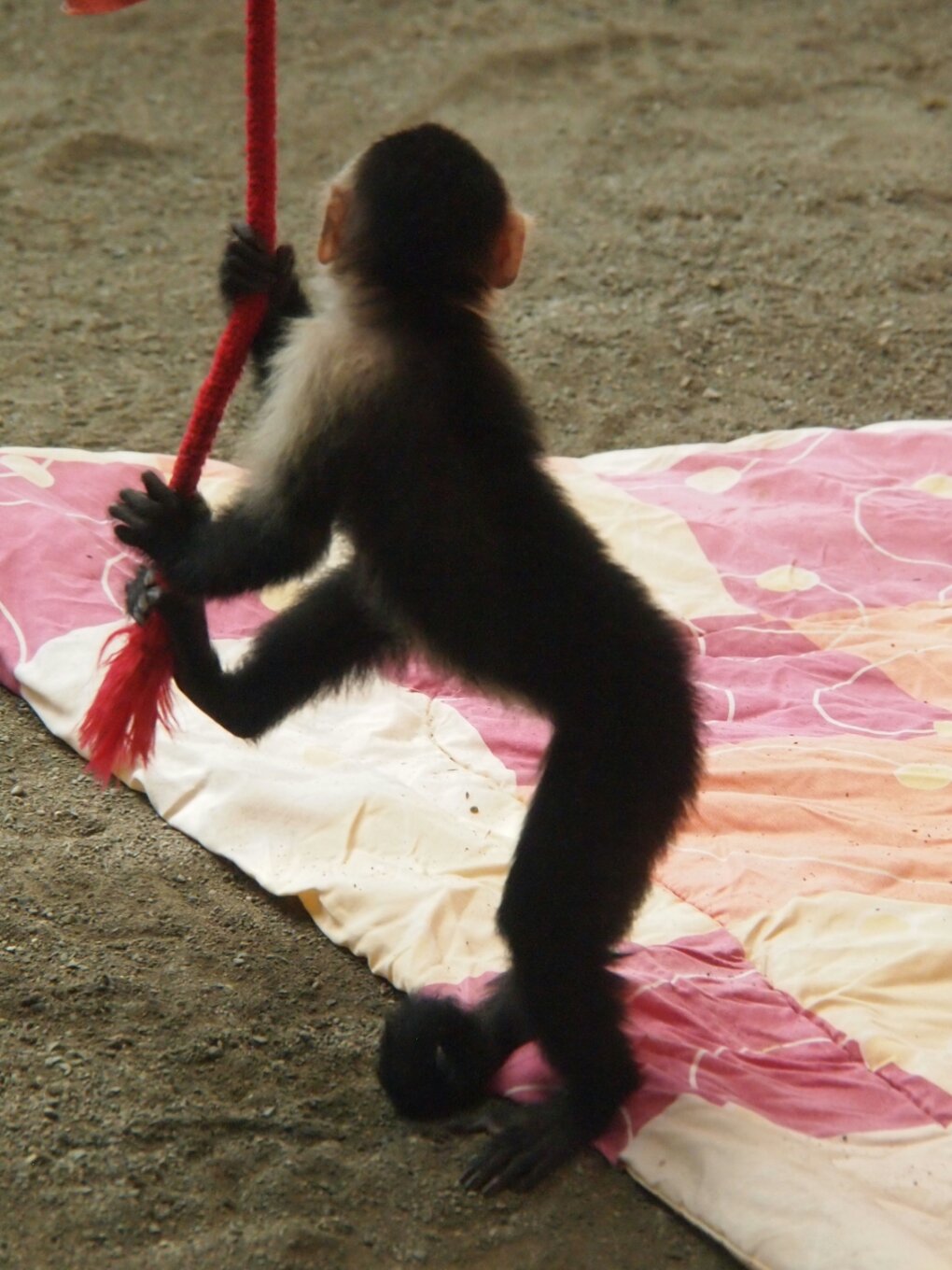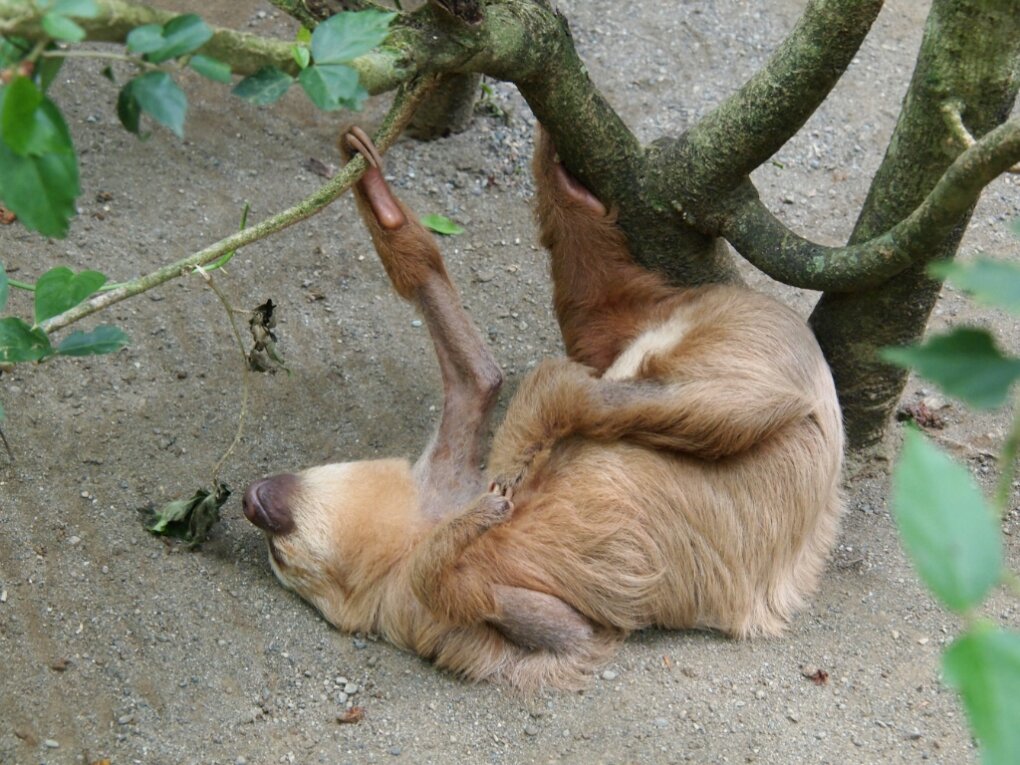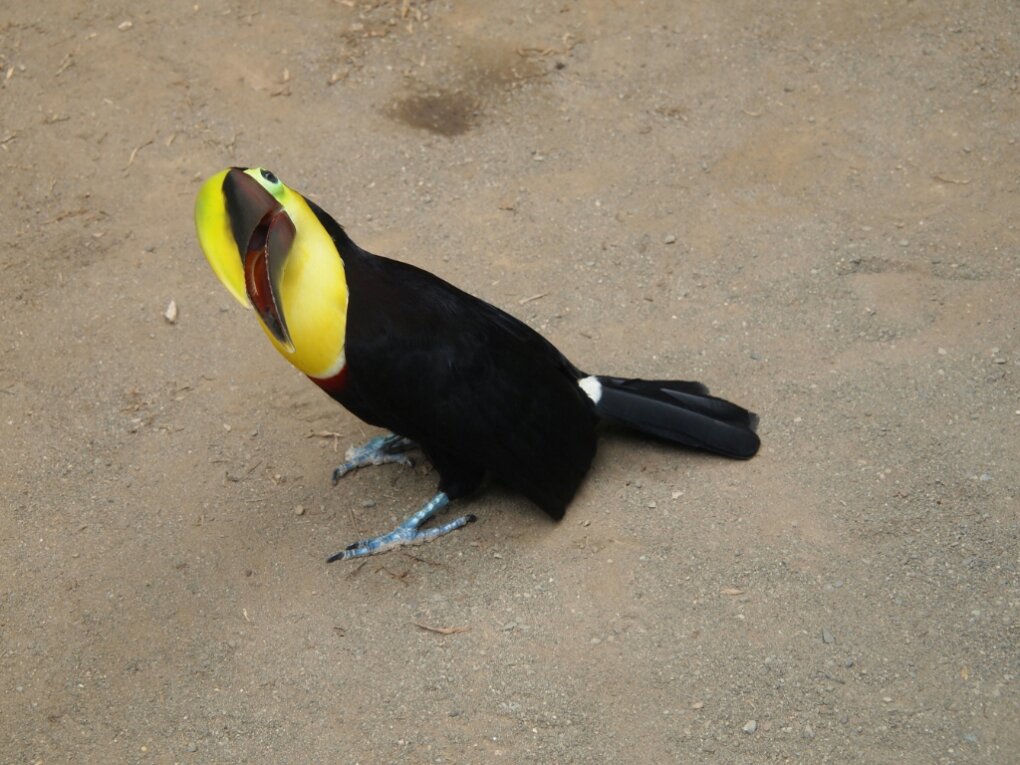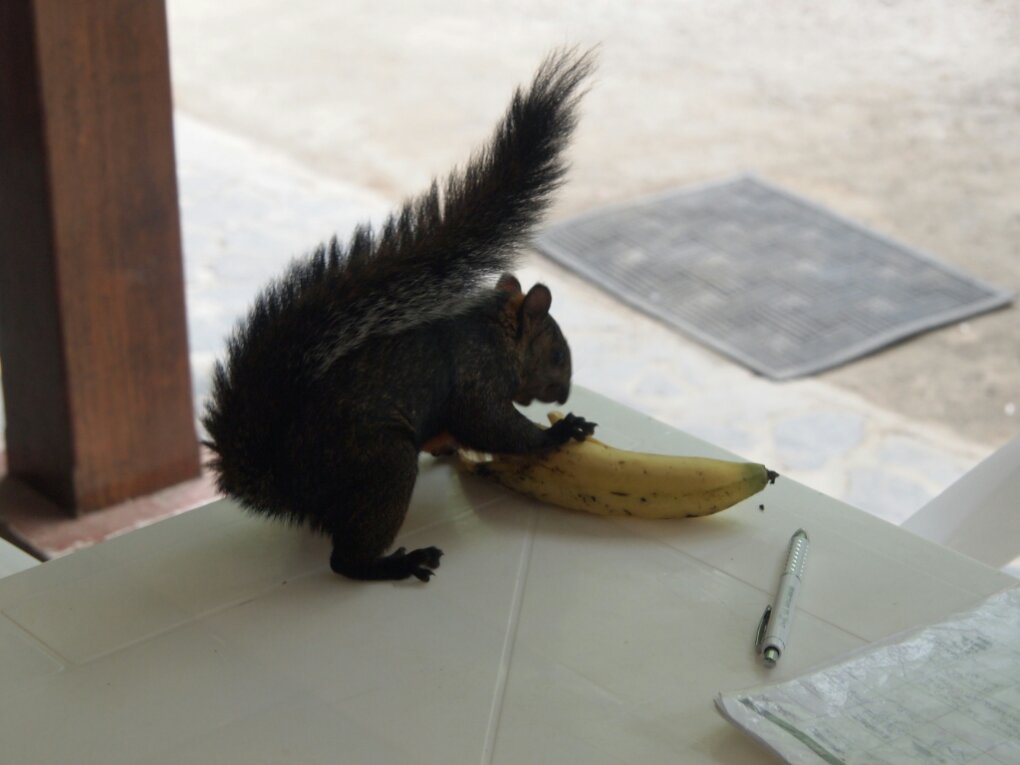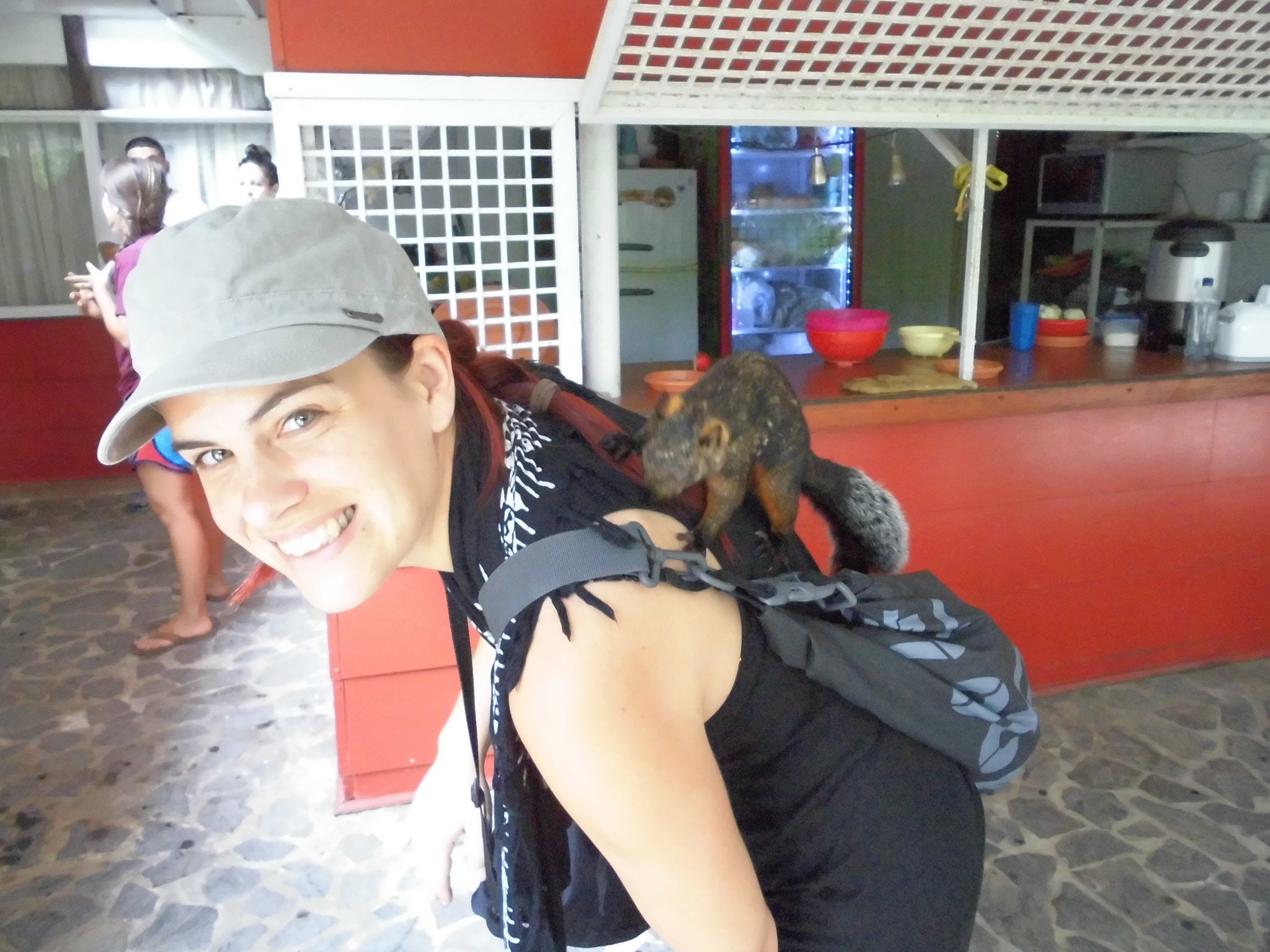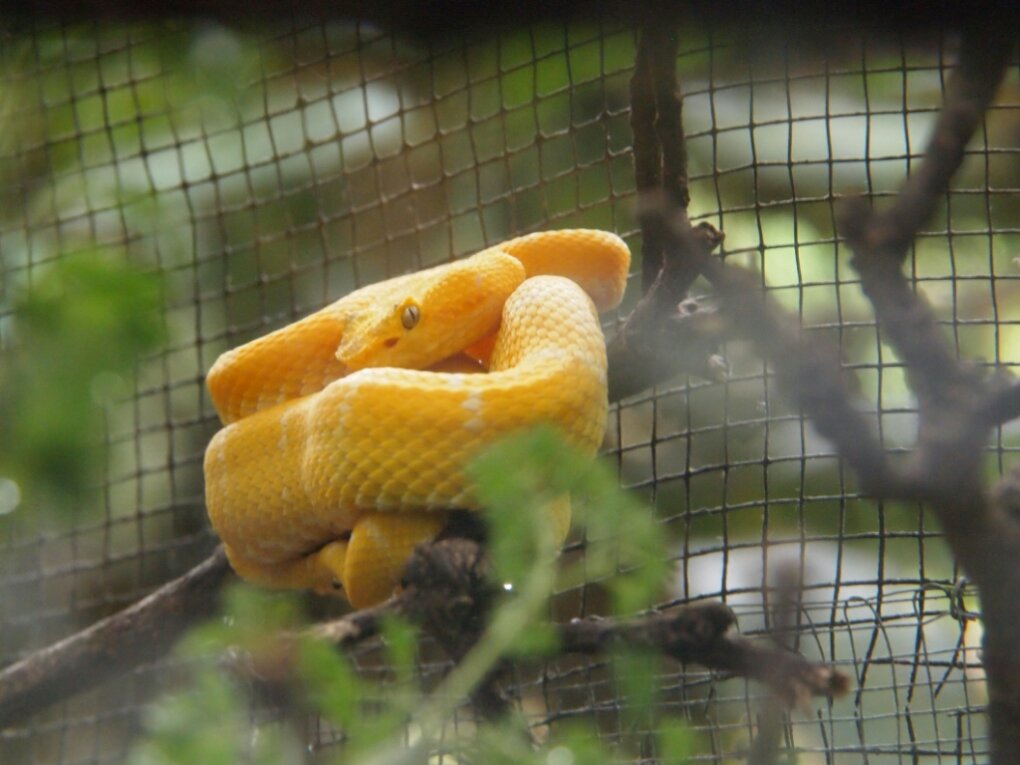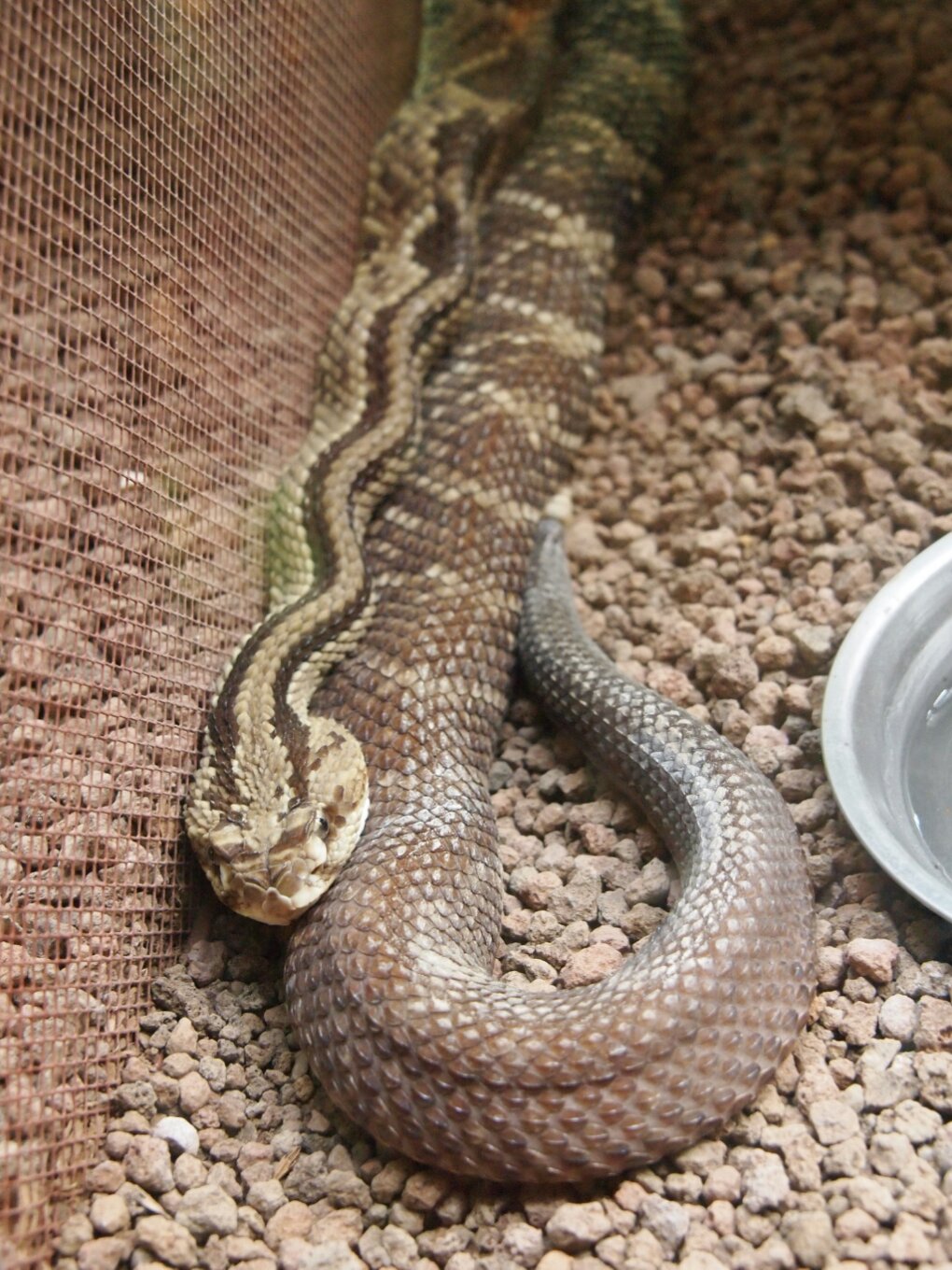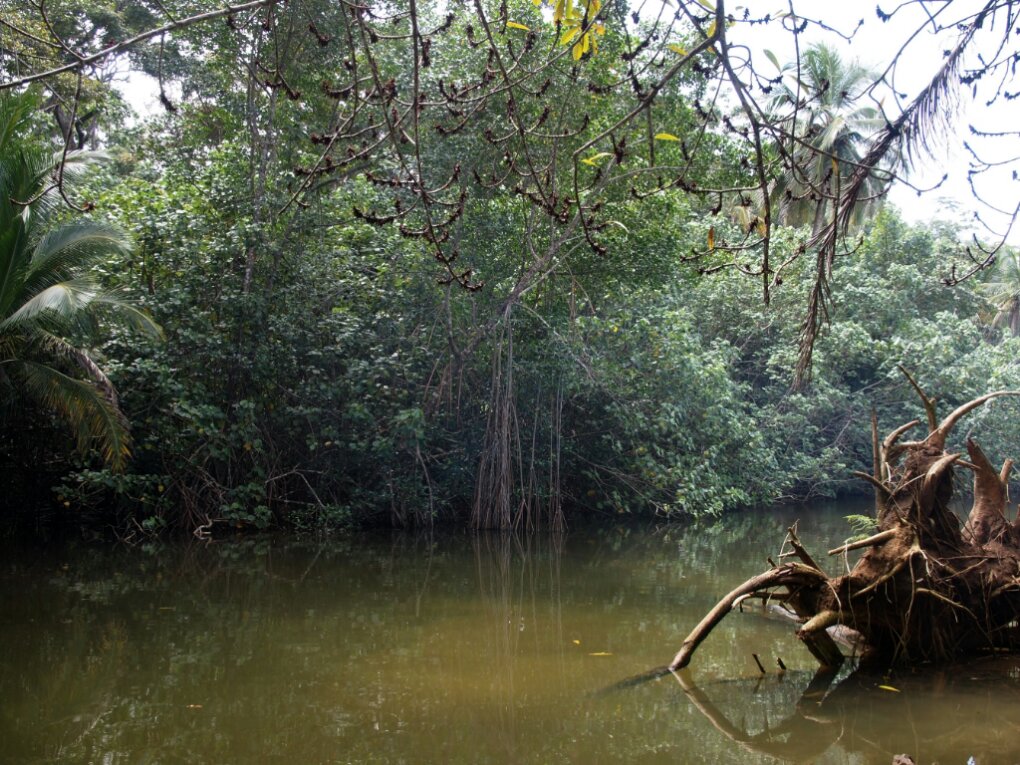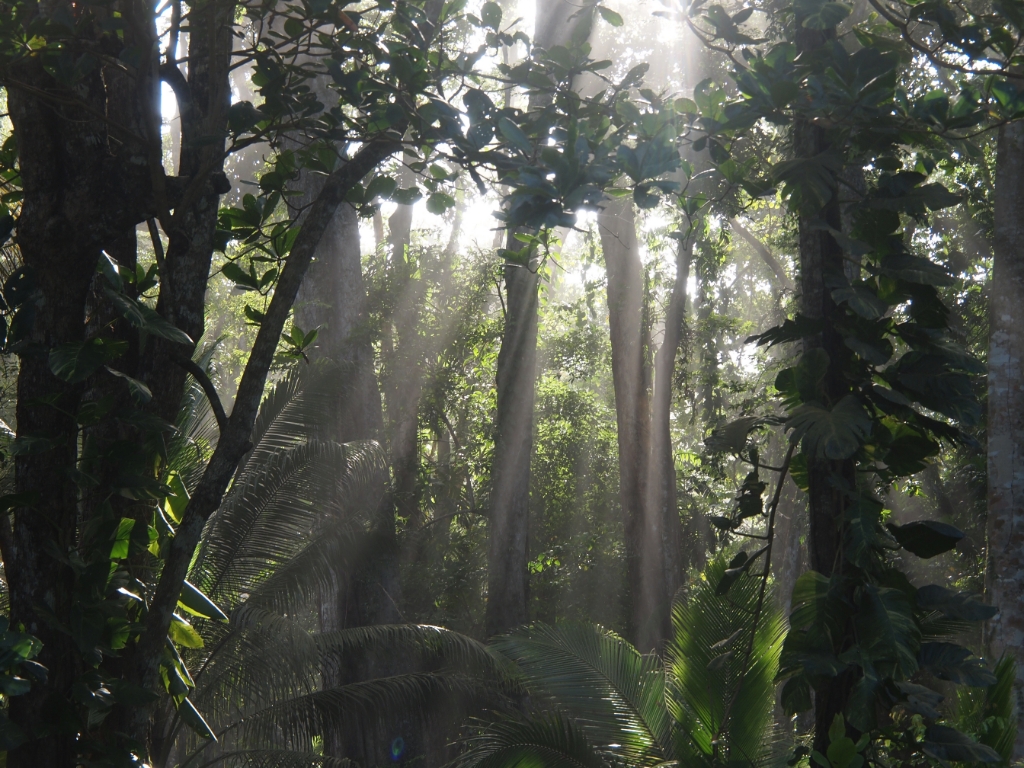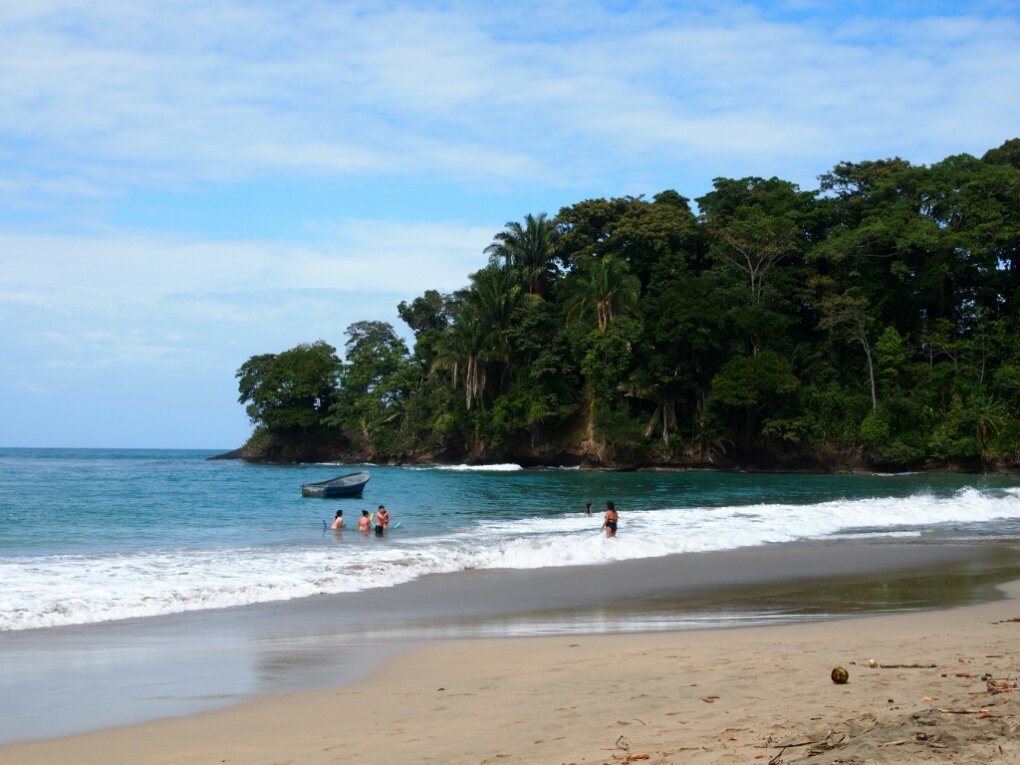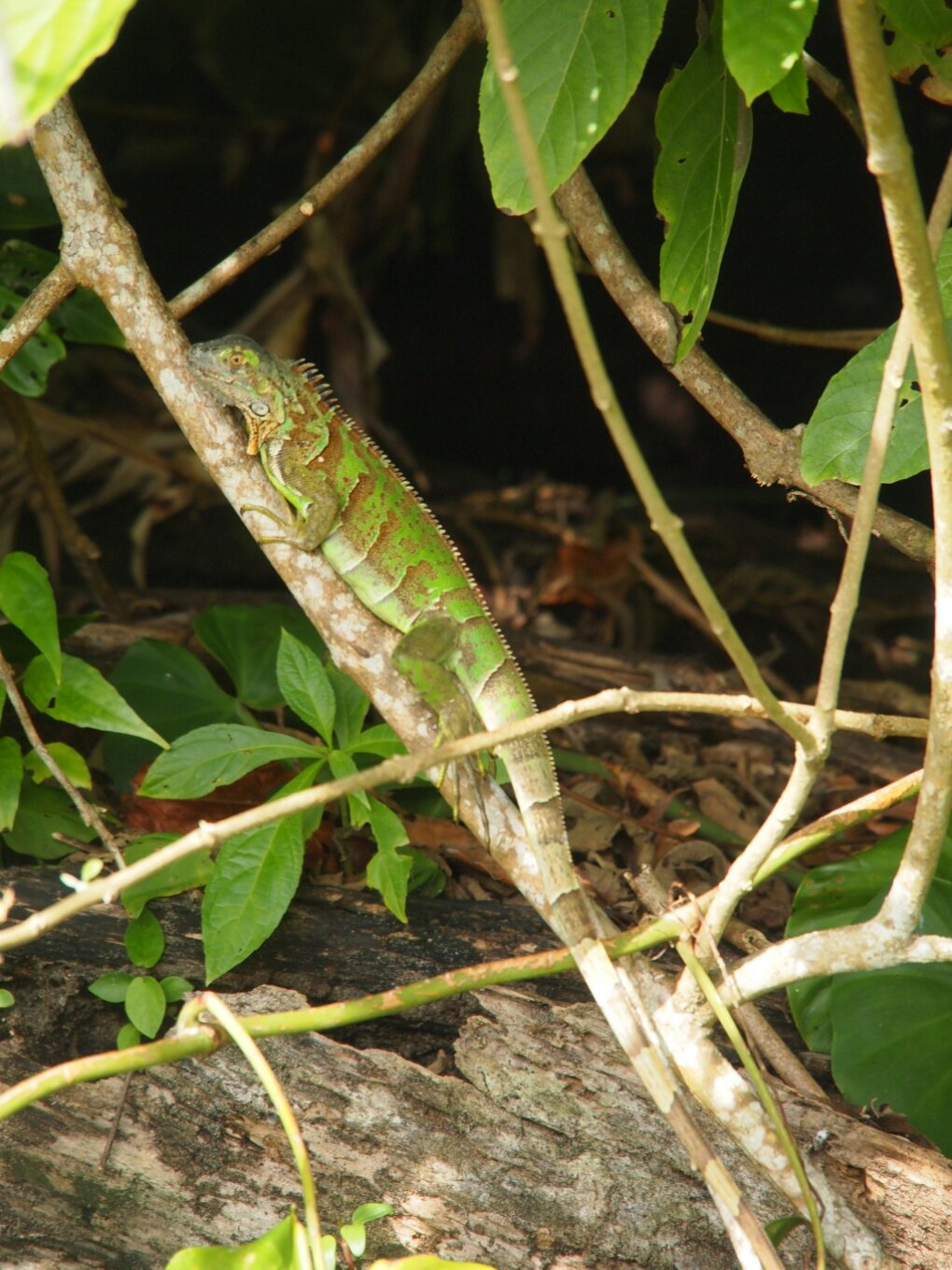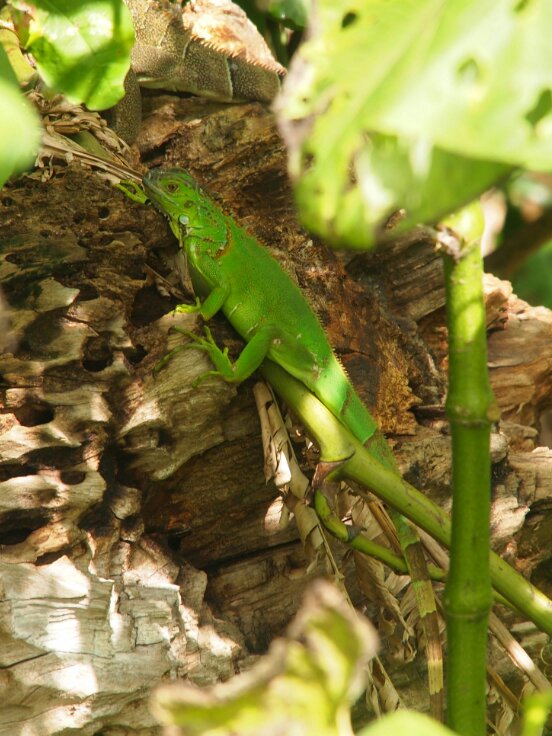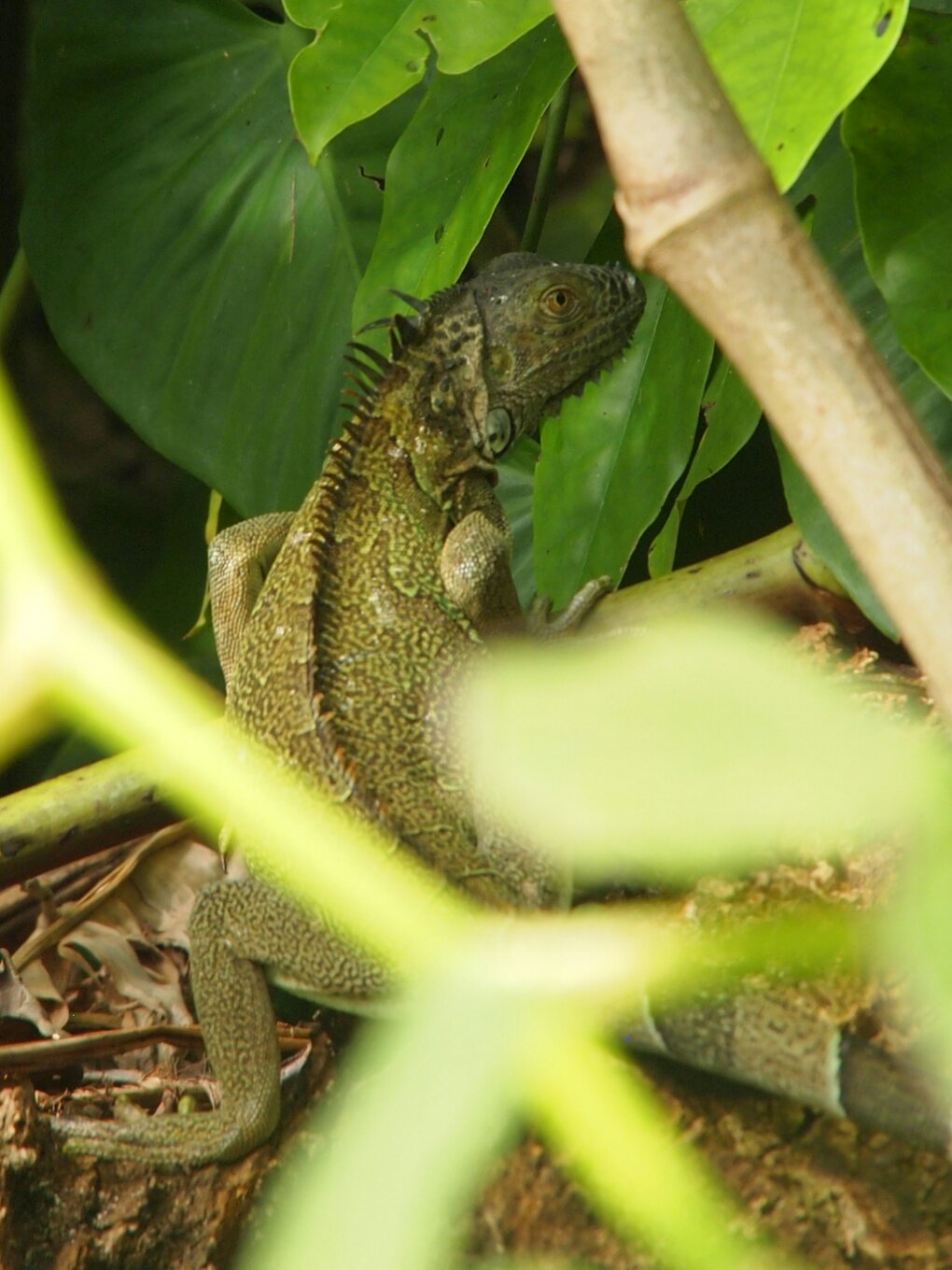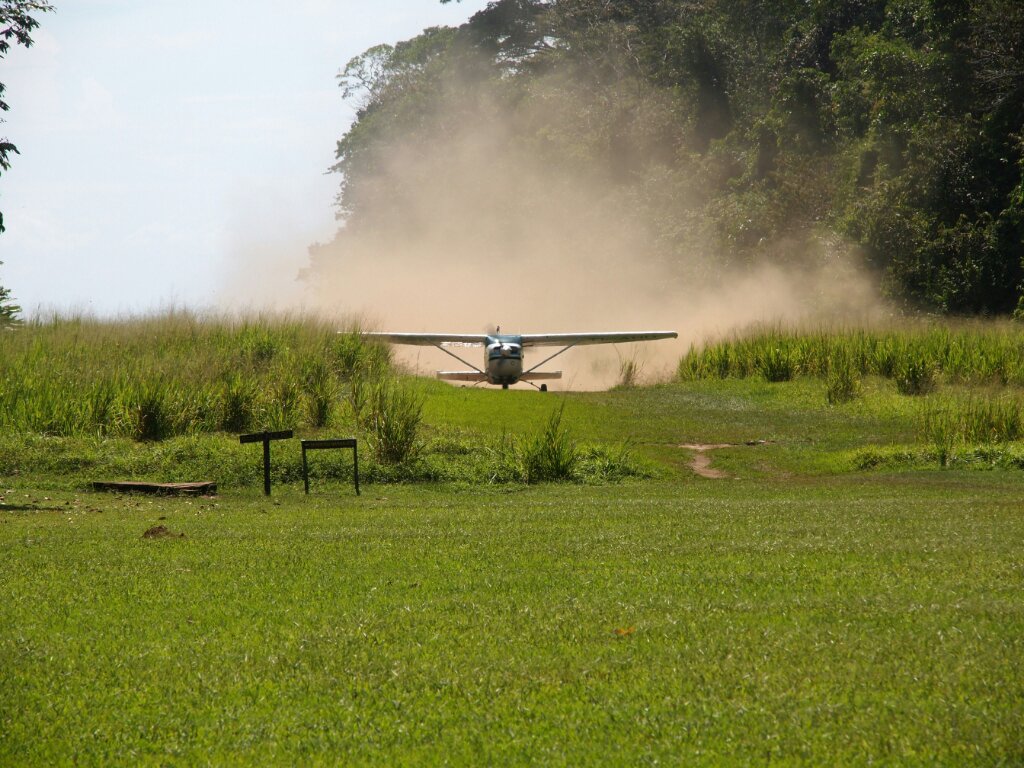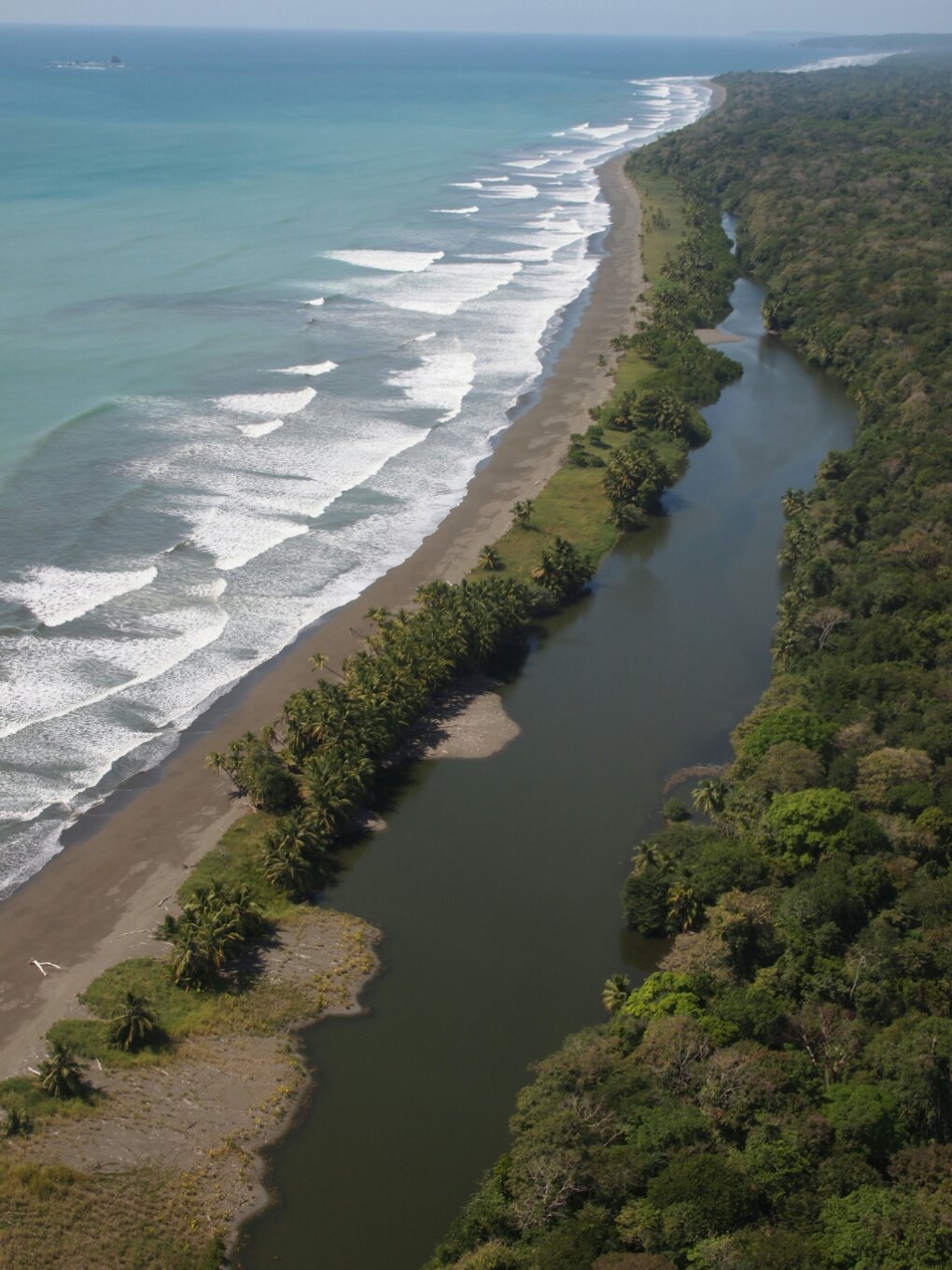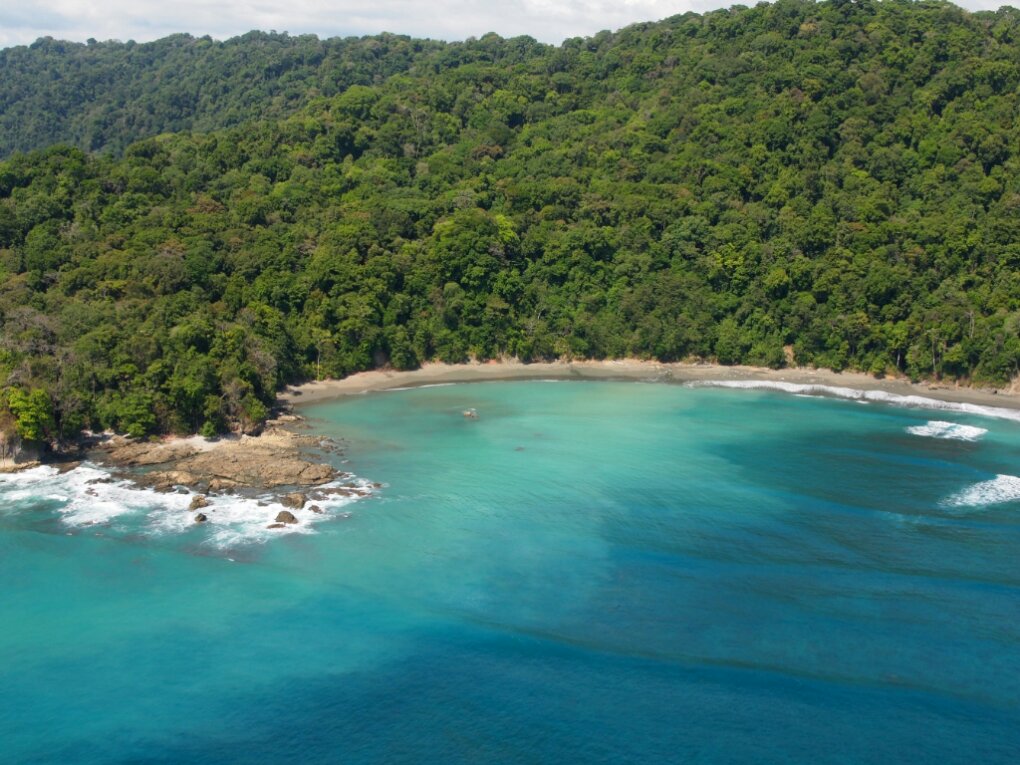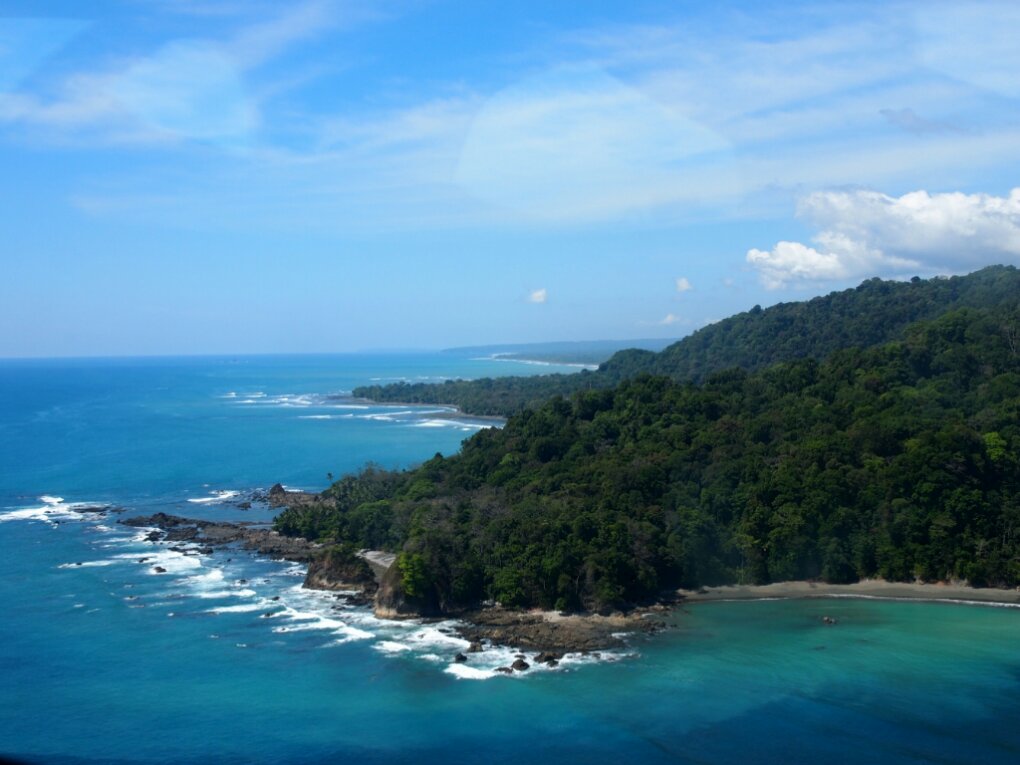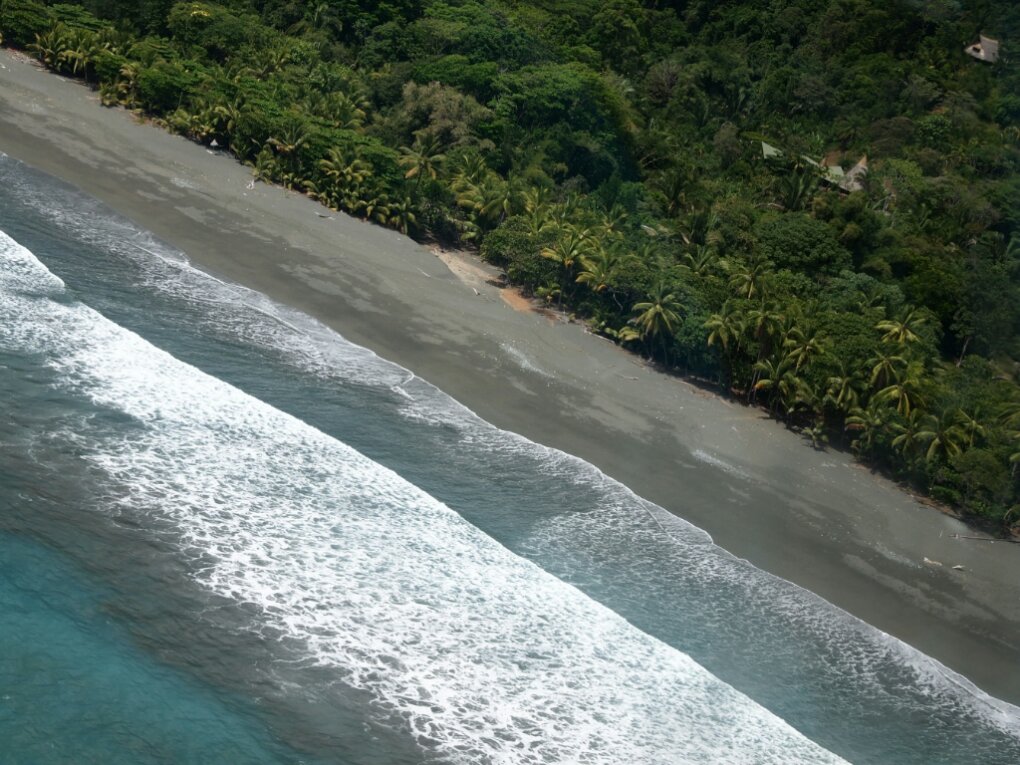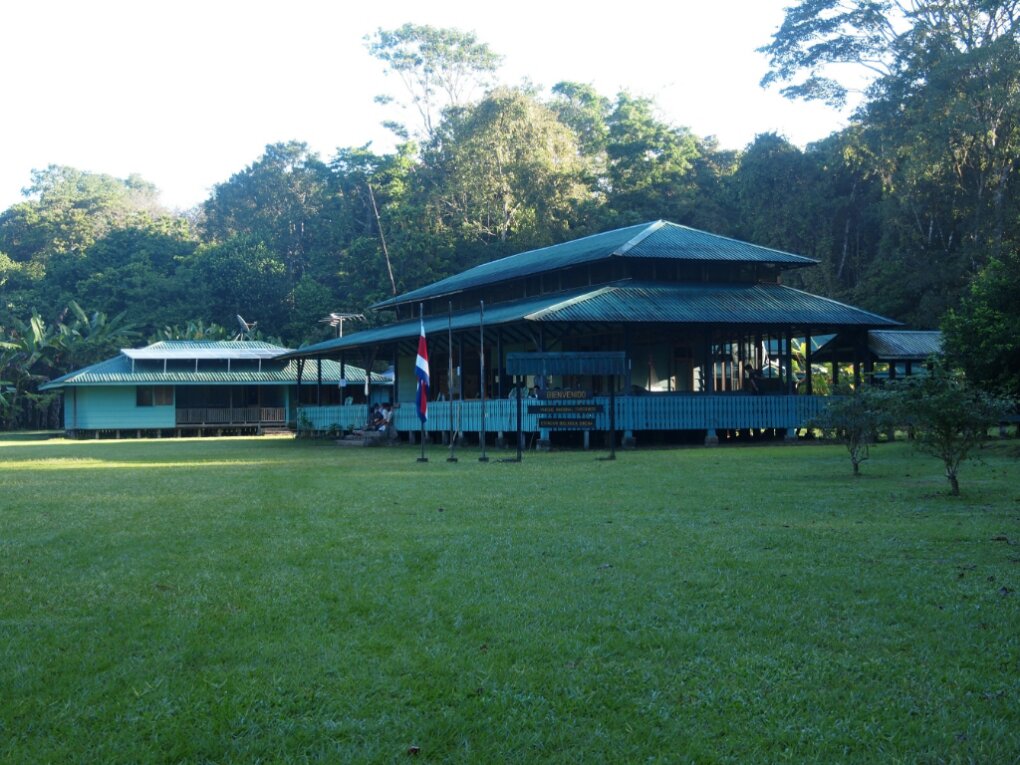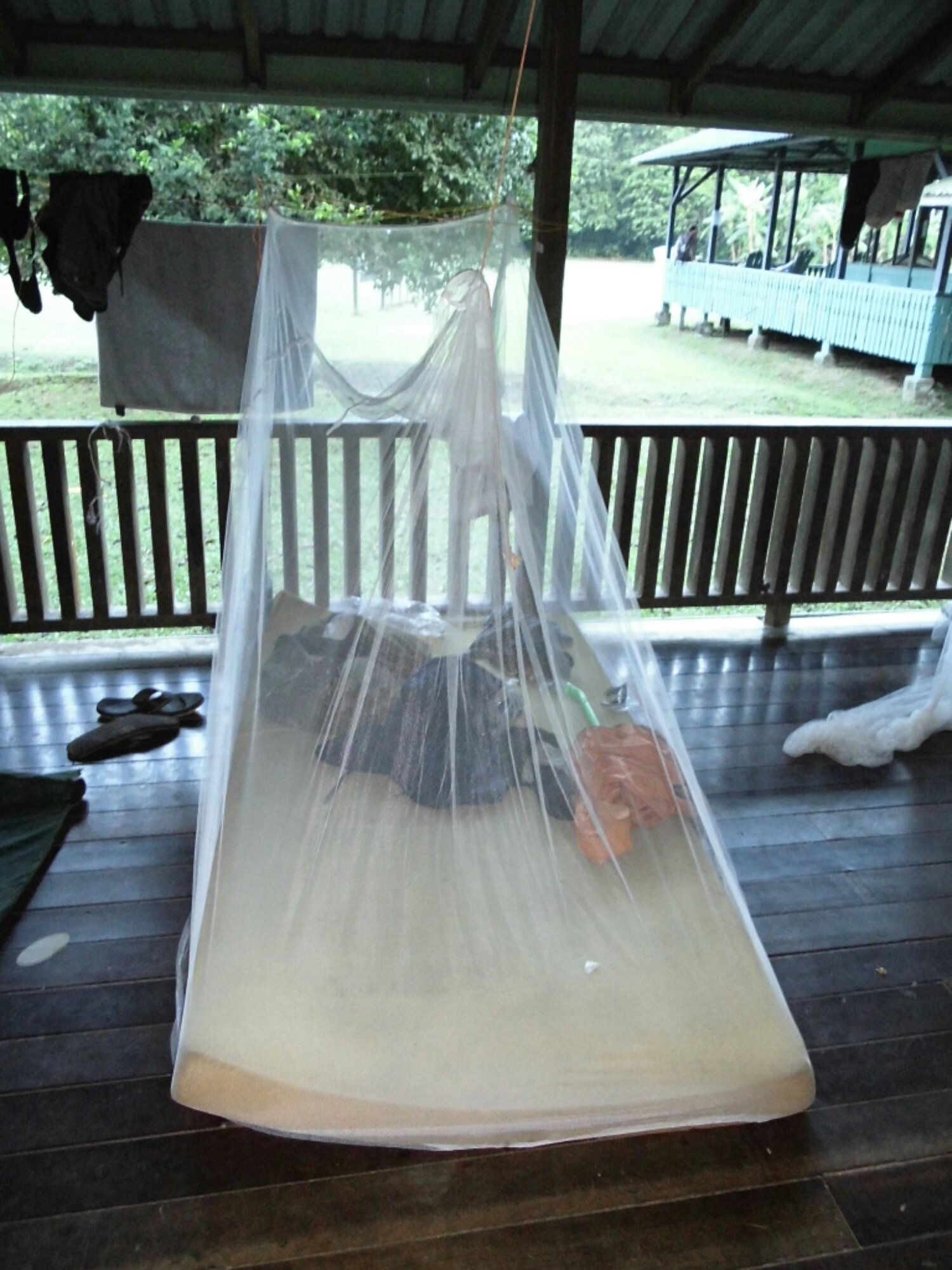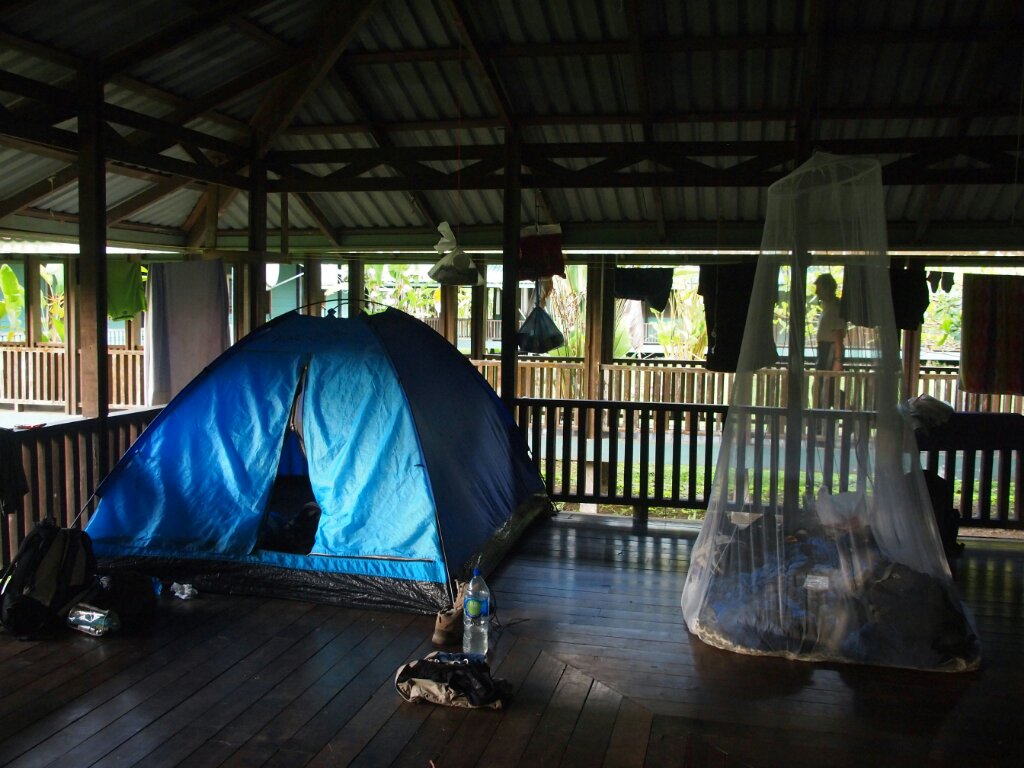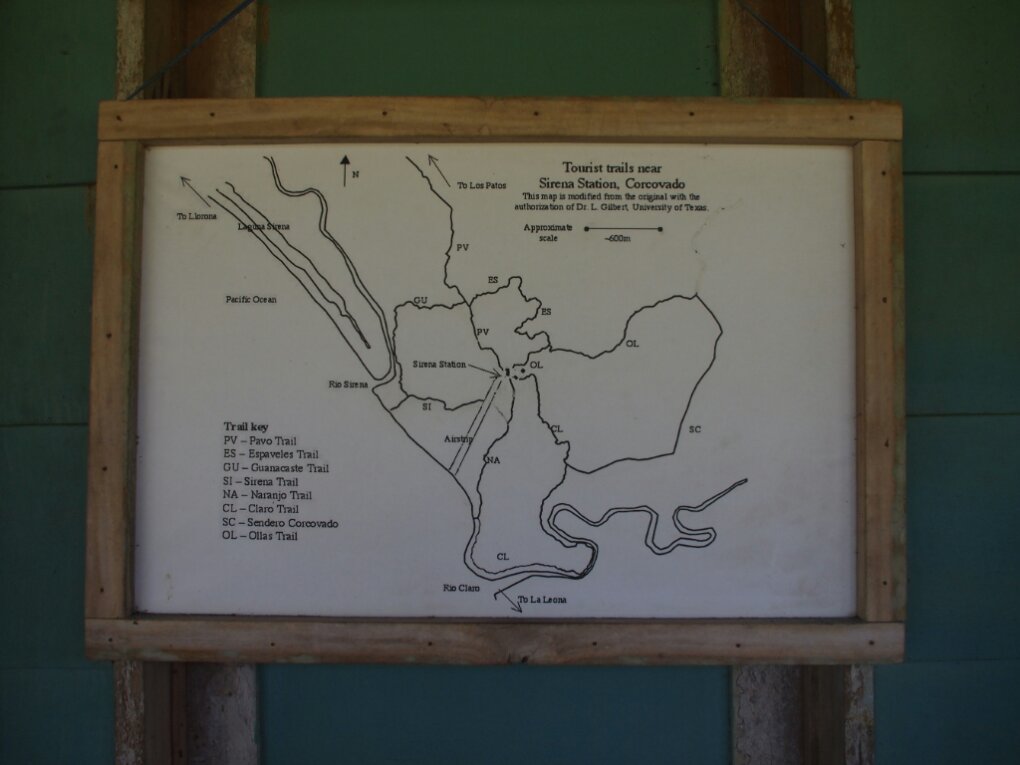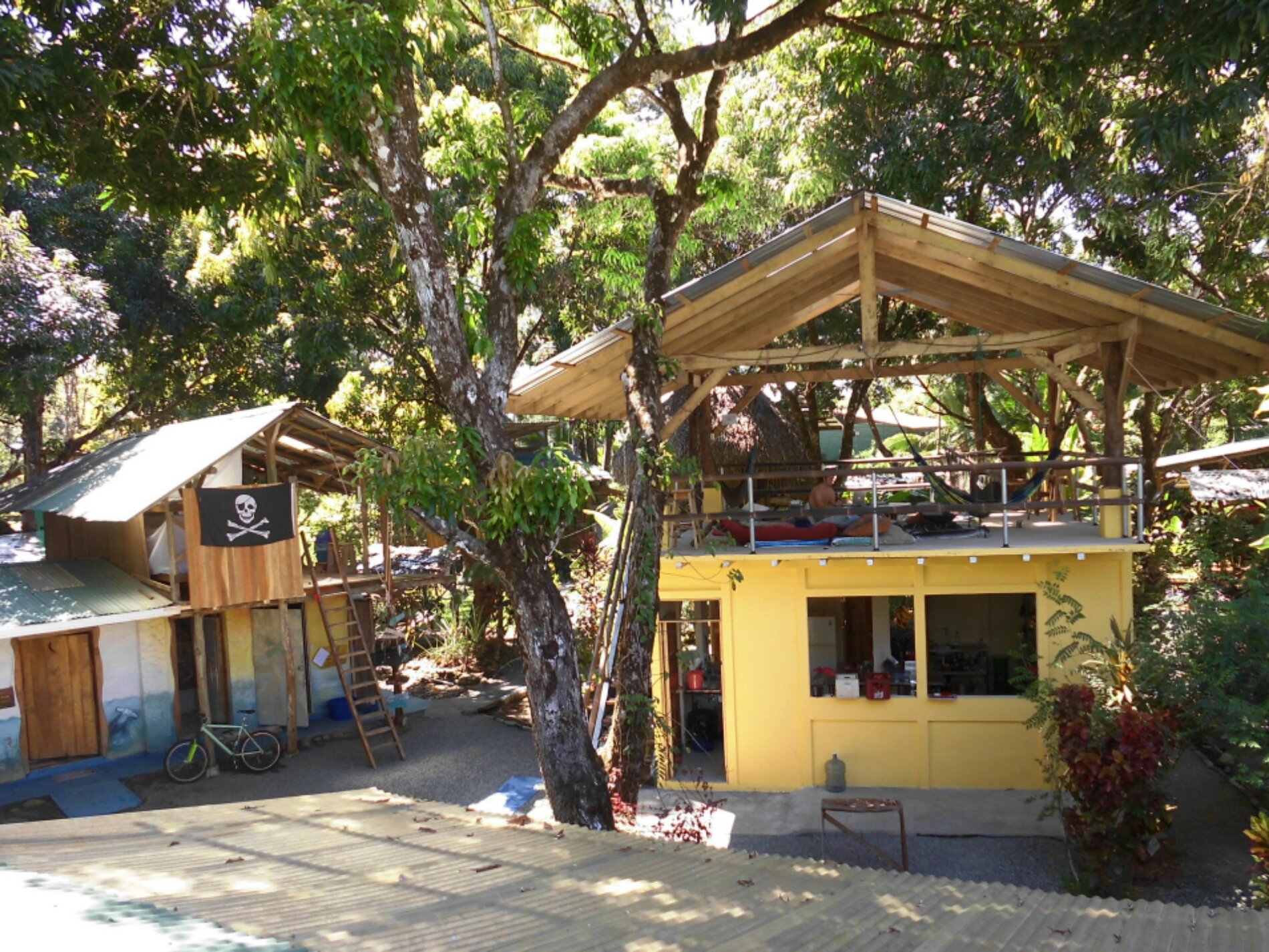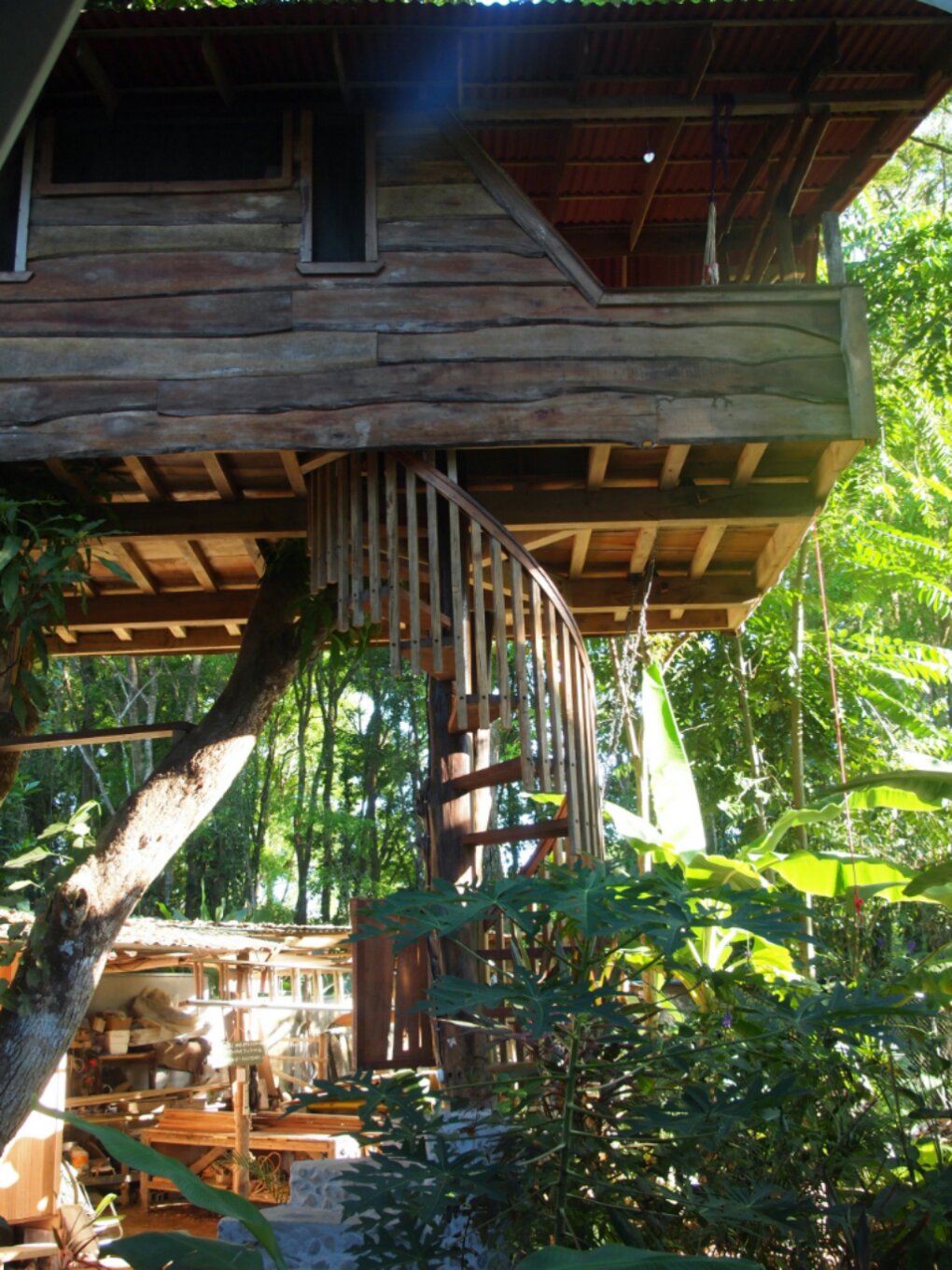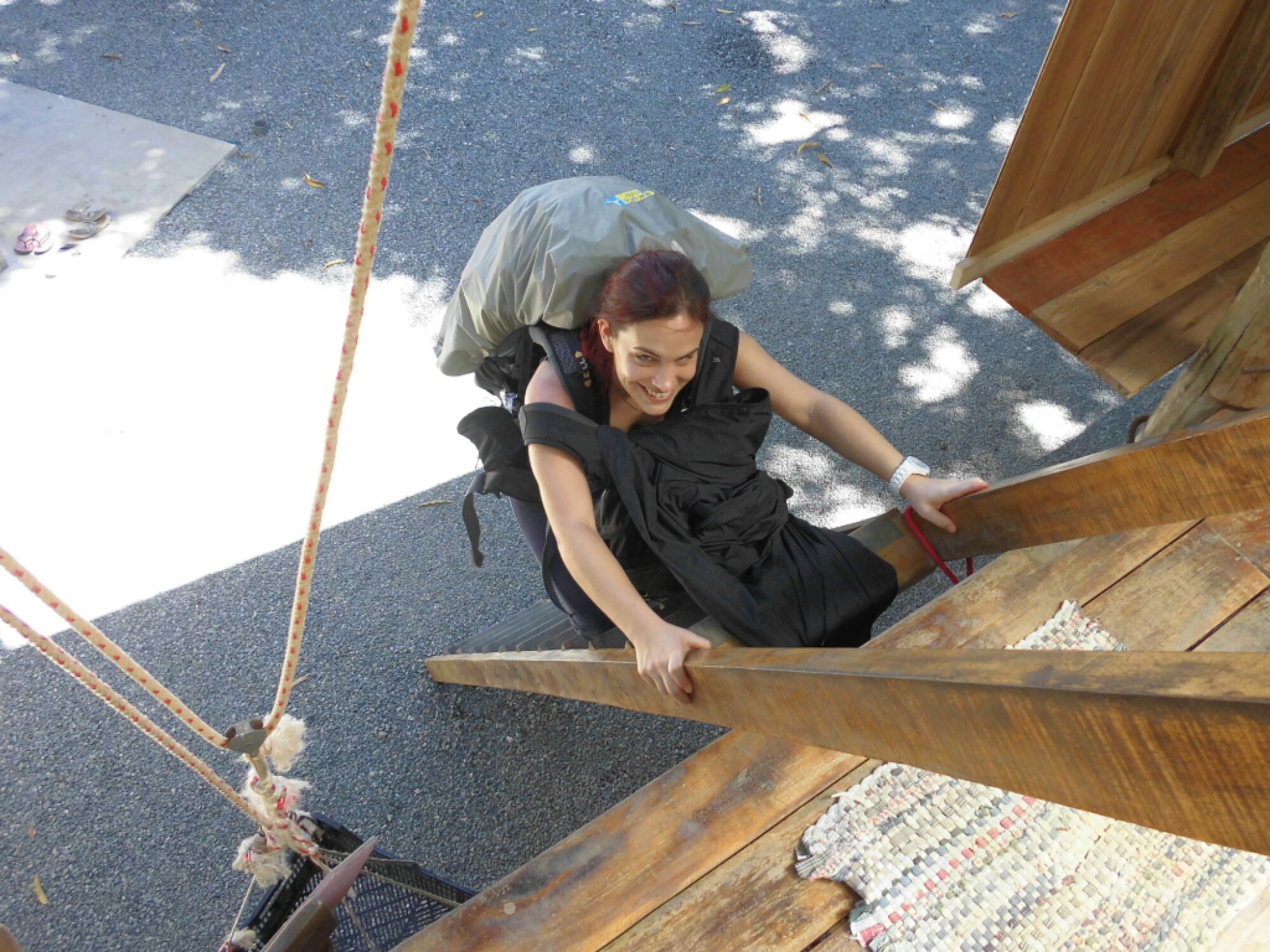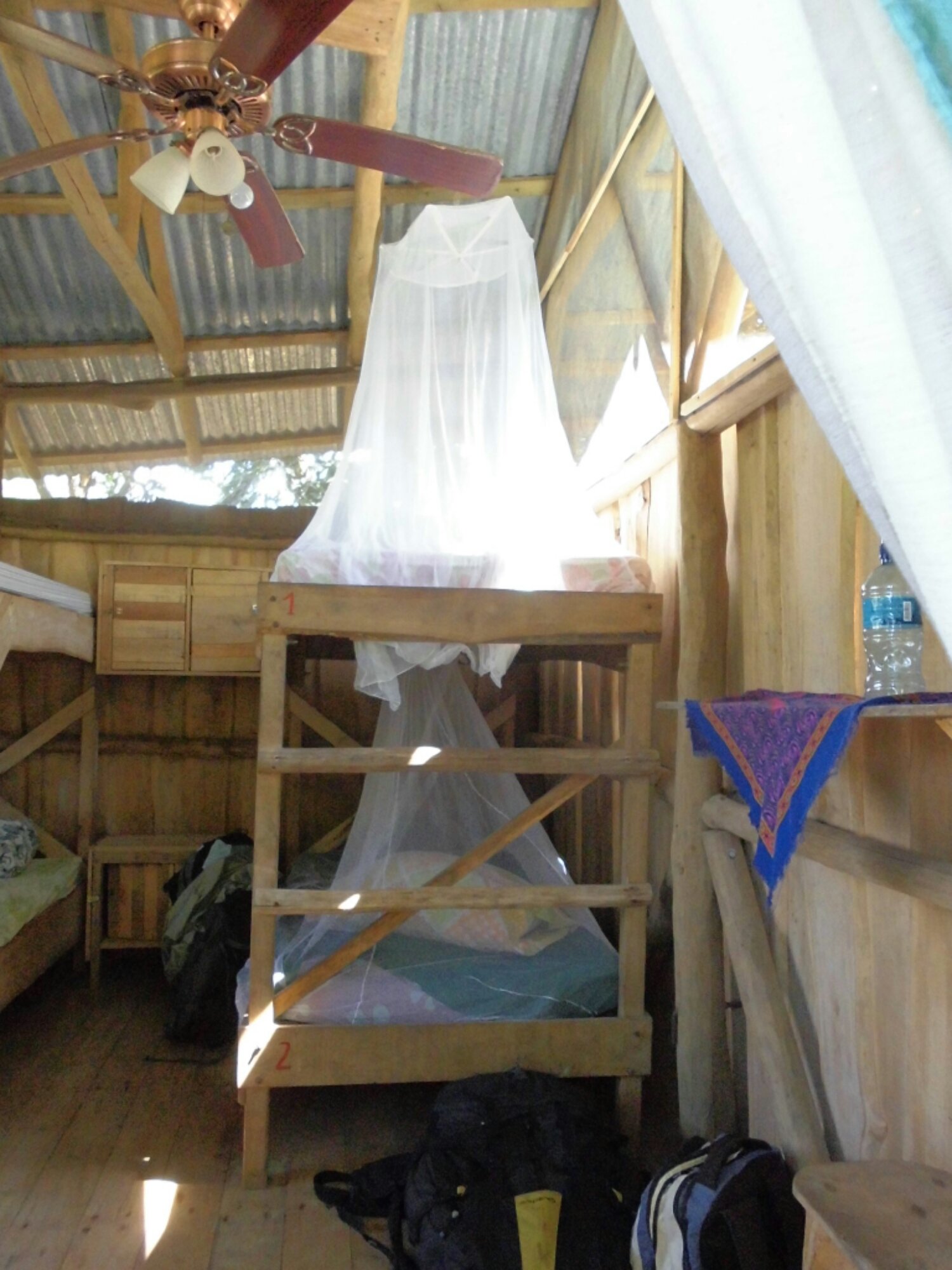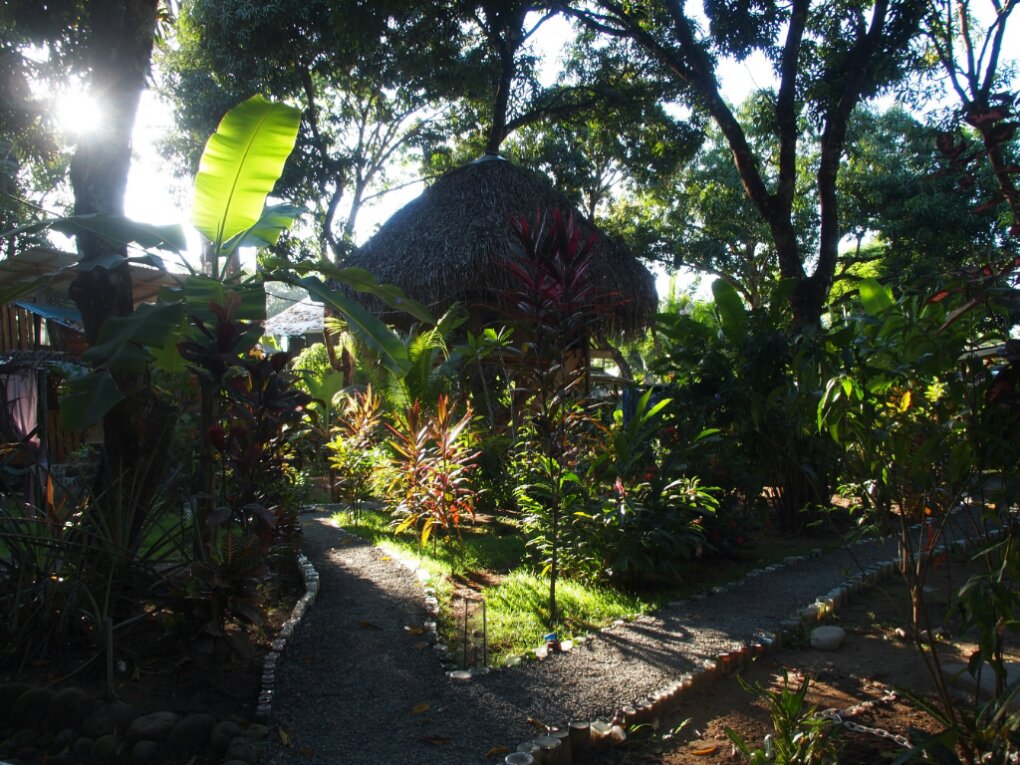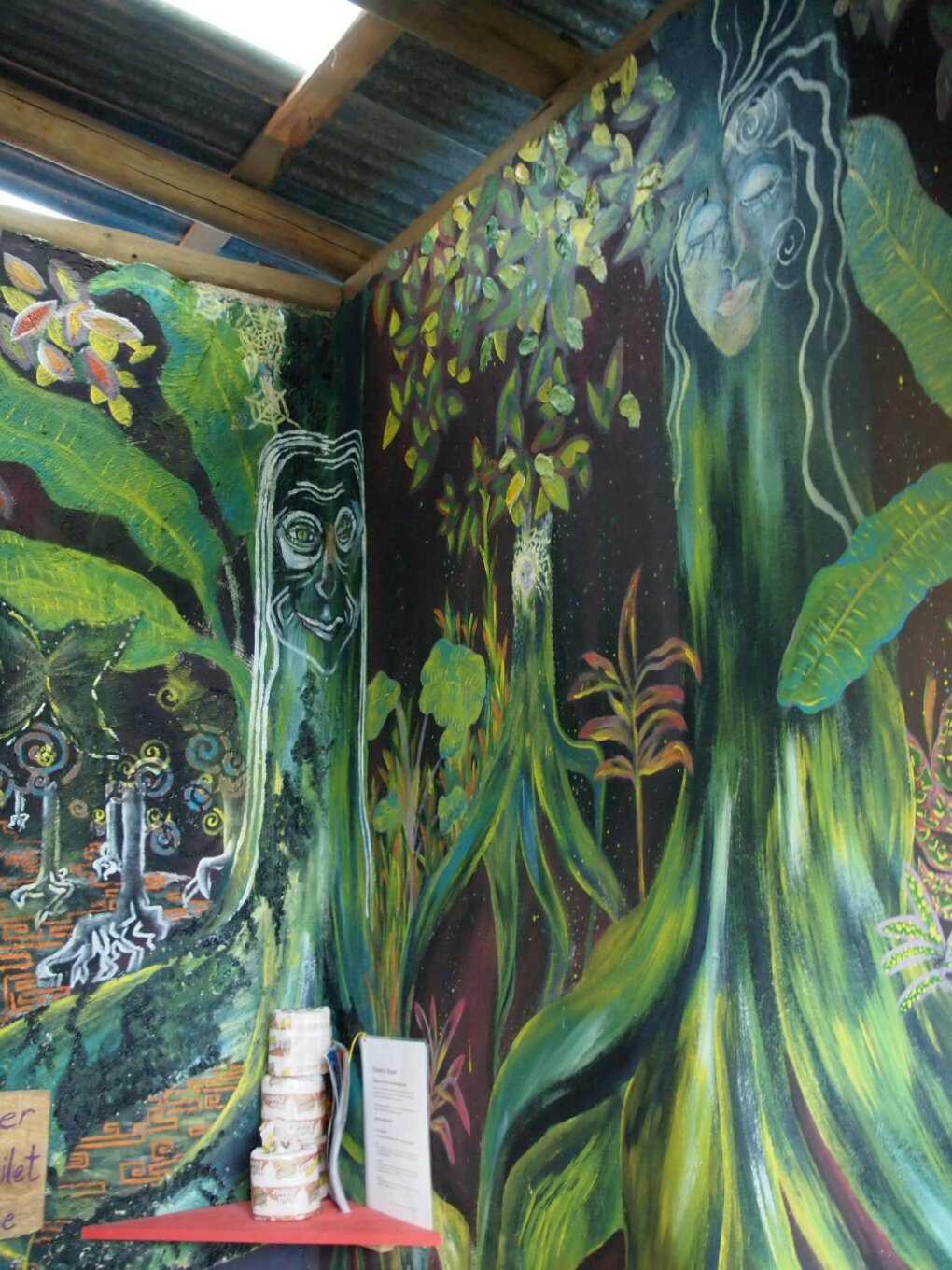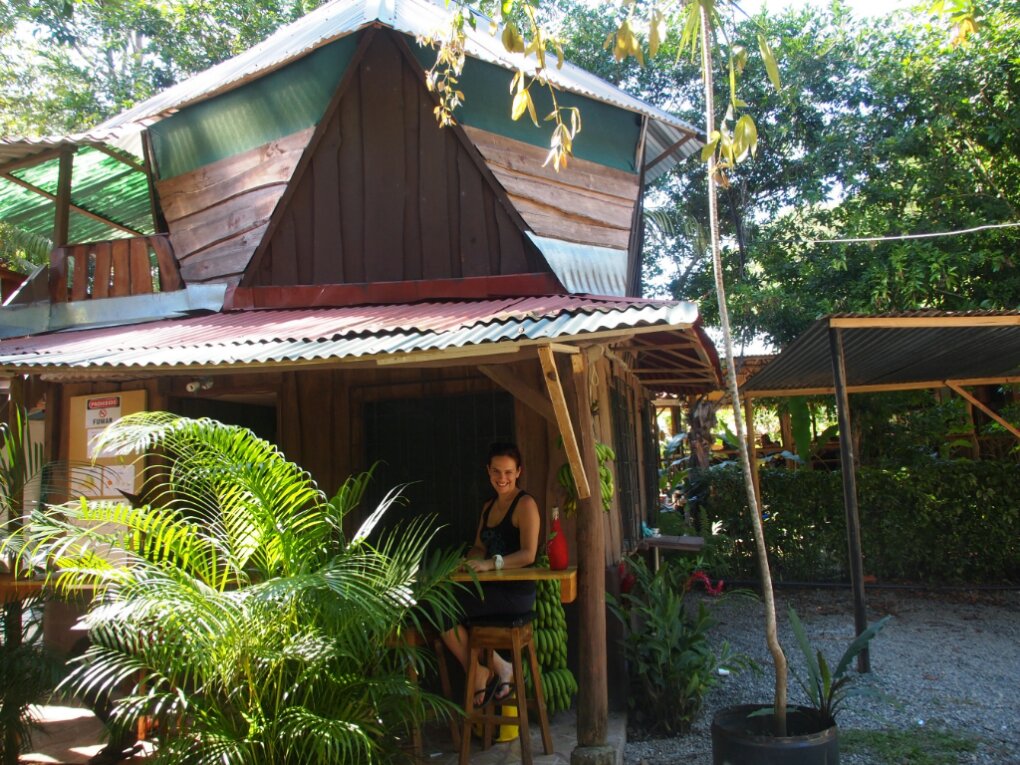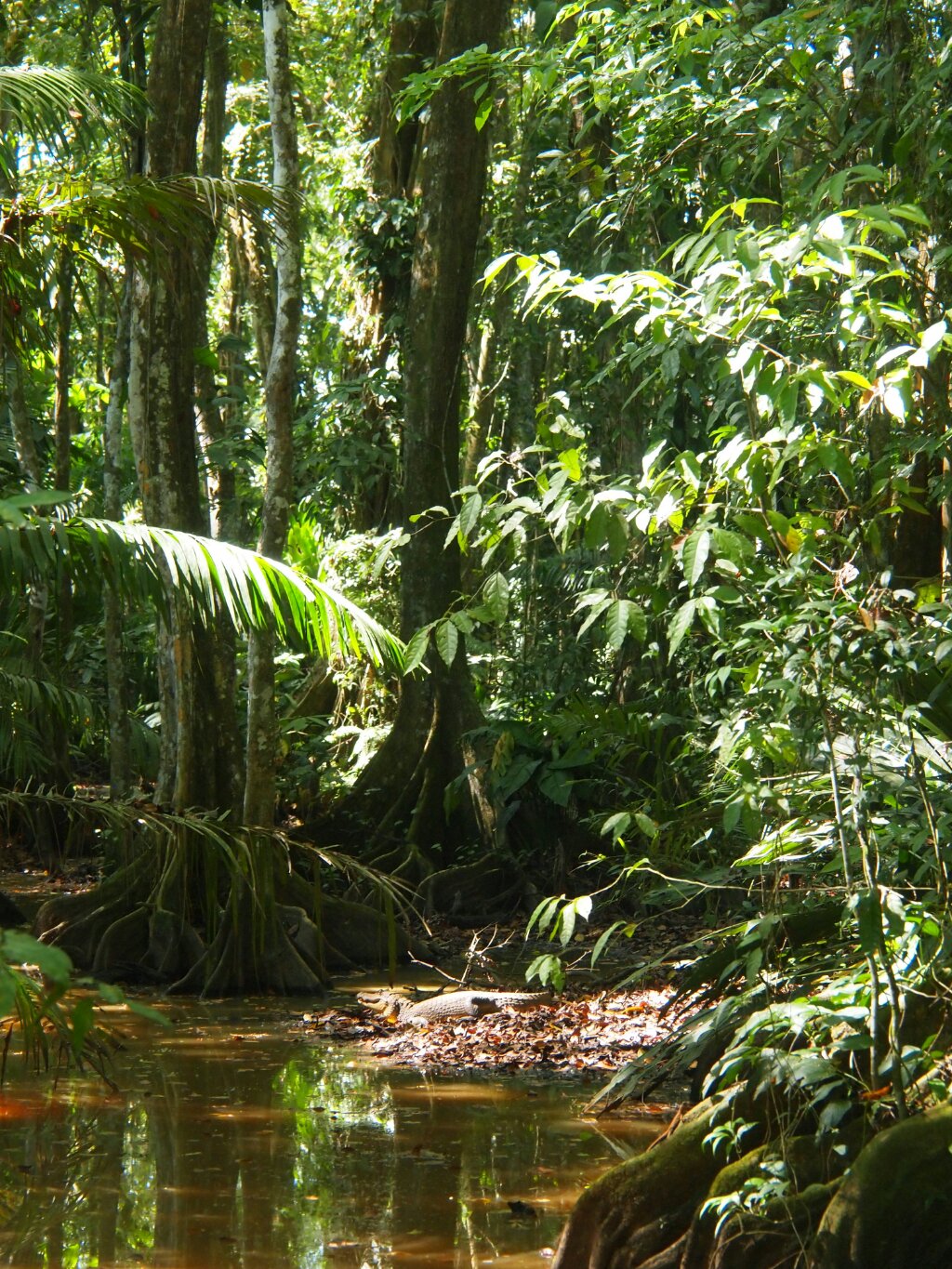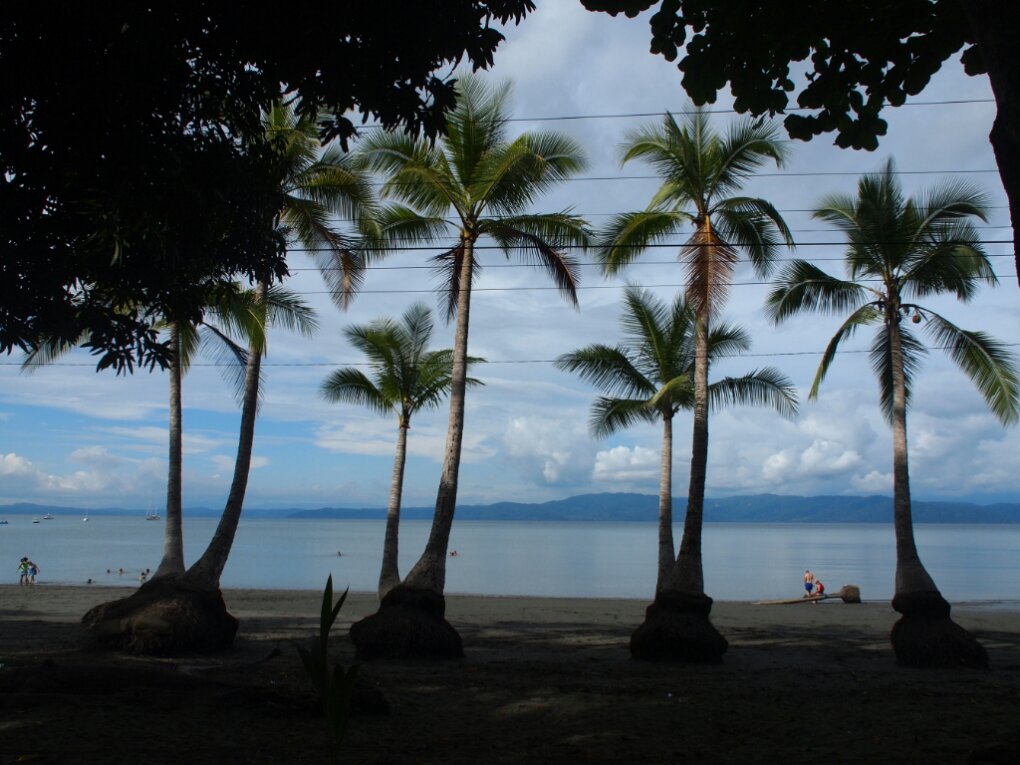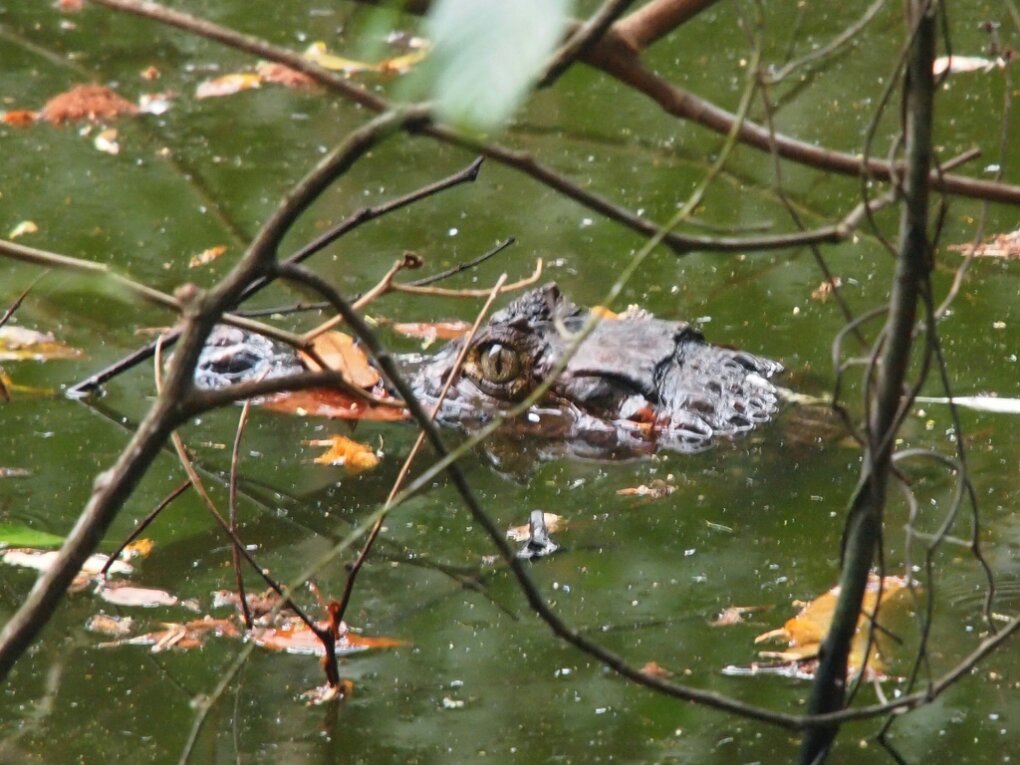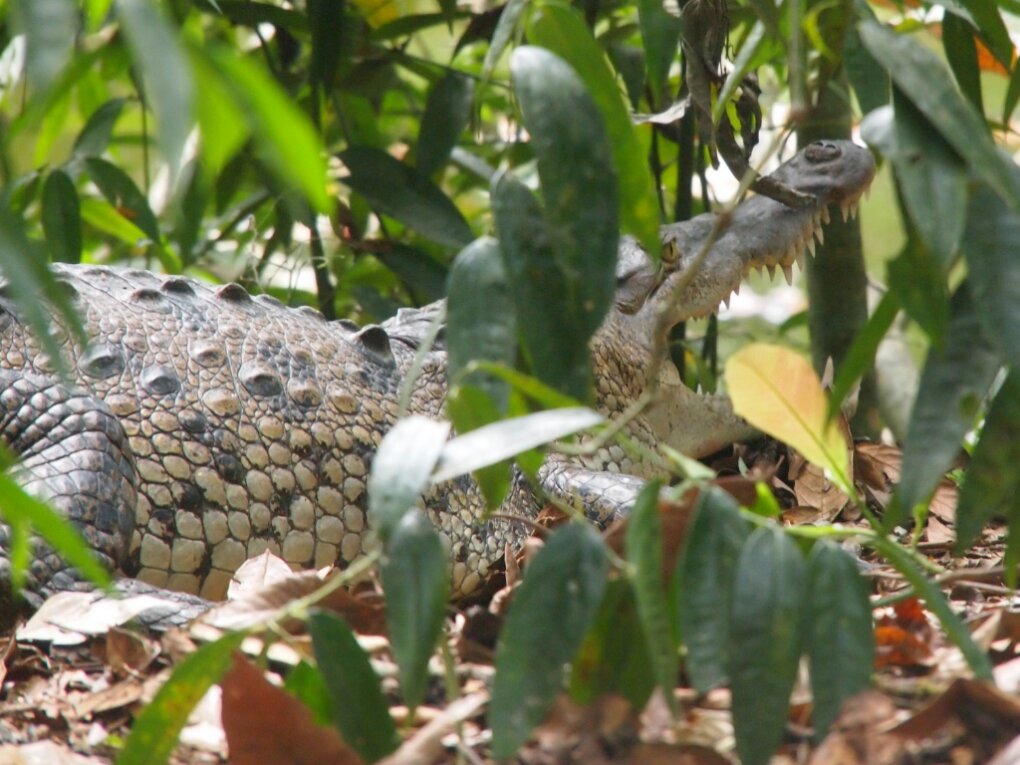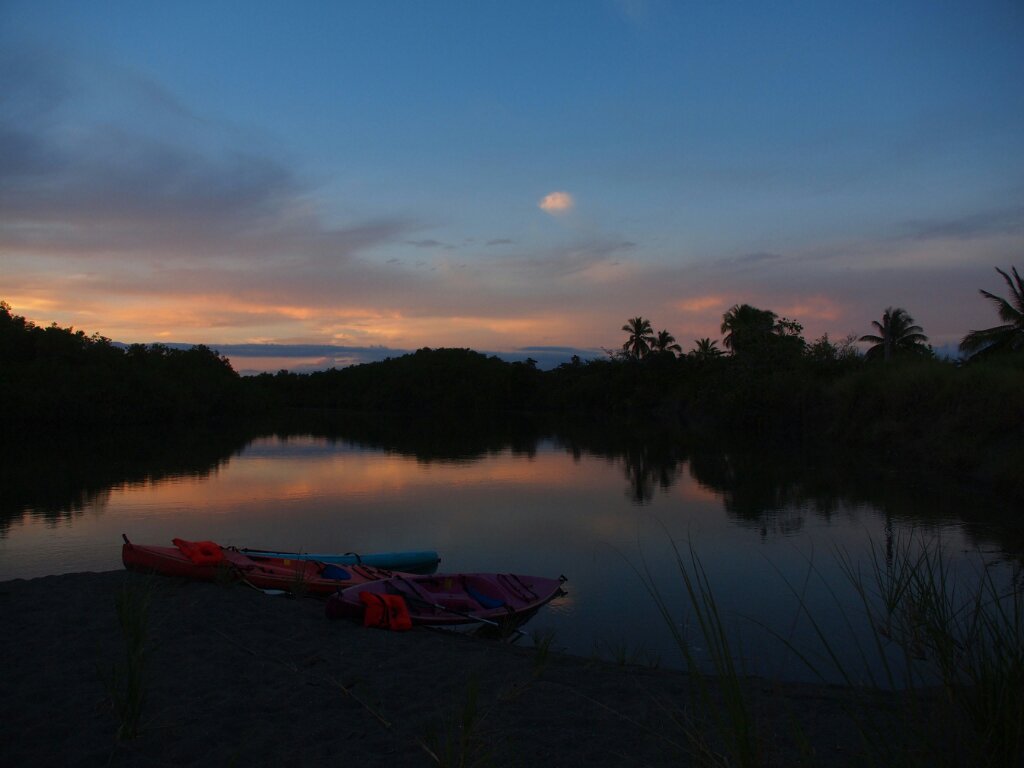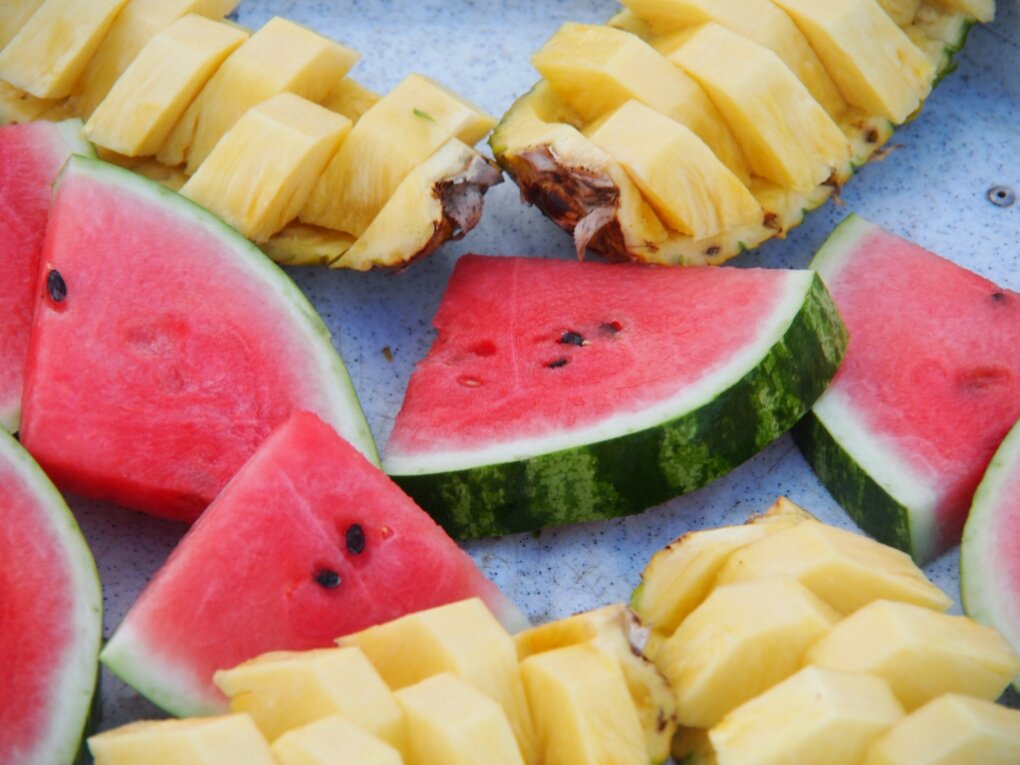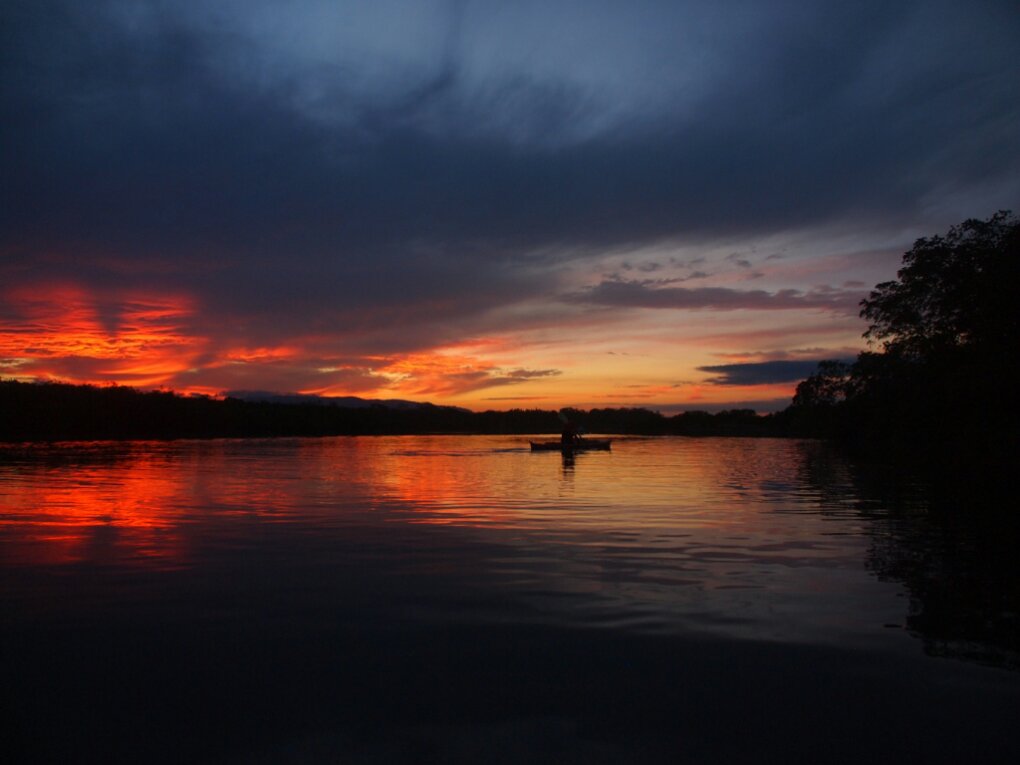Der einzigartige Corcovado National Park
The most species-rich, according to National Geographic National Parks now holds the world what it promises, here an overview of us sighted in the 3 days in January 2014, animals and plants. Even if such here described not so easy is to organize a tour or get a place to sleep on the Sirena station, you can not miss the Corcovado in any case.
Here is the so-called Costa Rice Airforce to see a flock of pelicans.
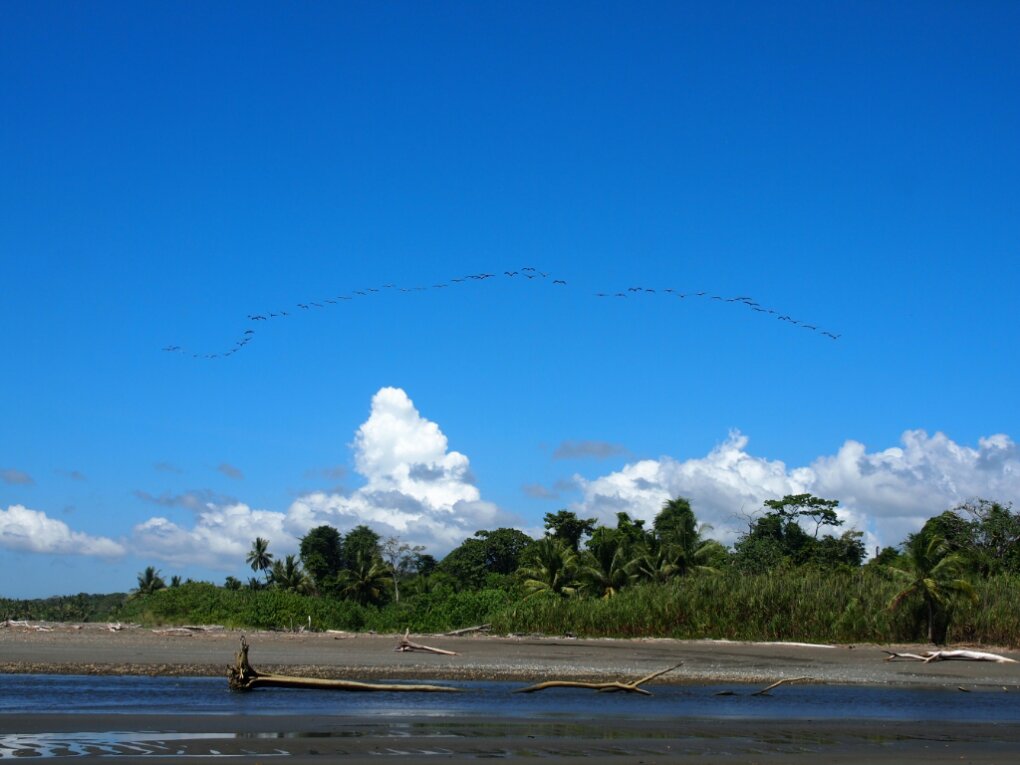
The Corcovado Nationalpark is the only Costa Rica, in which all four native species of monkeys can be observed: Capuchin monkeys, spider monkeys, howler monkeys and squirrel monkeys.
The capuchin monkeys are omnivores and medium in size with 3-4 kg. Do not use in contrast to the spider their tail for gripping and holding.

The spider monkey (no, this is not the @ meant, but the animal) moves very skilled at dizzying heights continuously and is an active day and territorial tree dwellers. These monkeys have hook-shaped hands, the thumbs are regressed and weigh between 7-9 kg. The preferred area of life are the deeper rainforests.
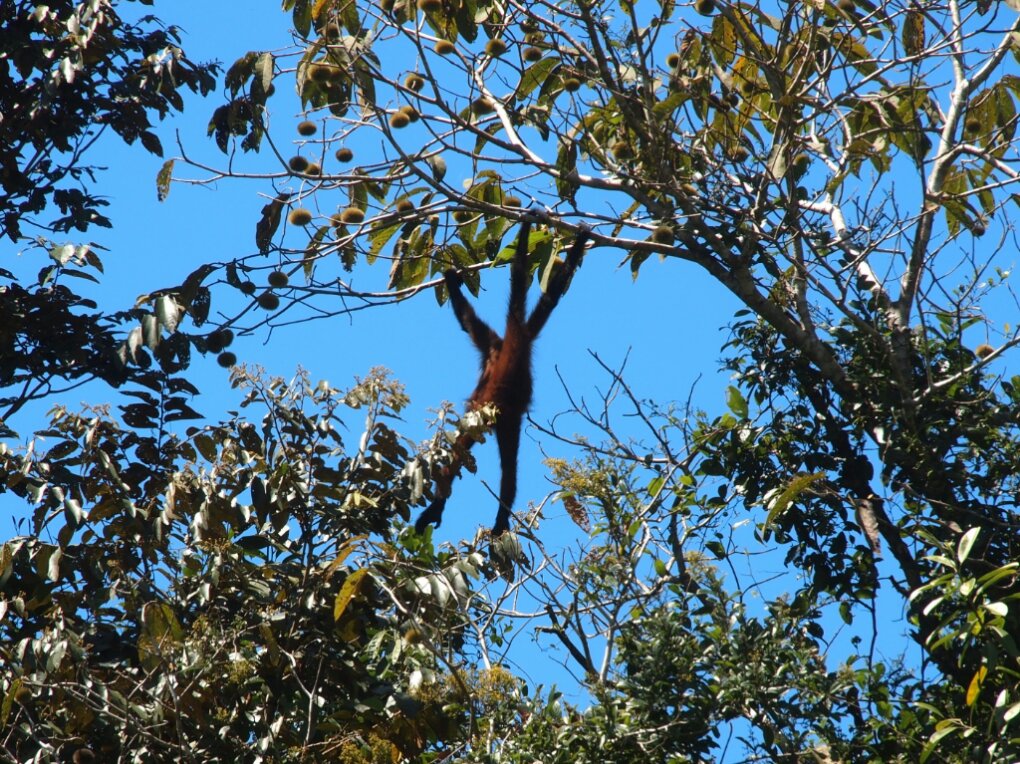
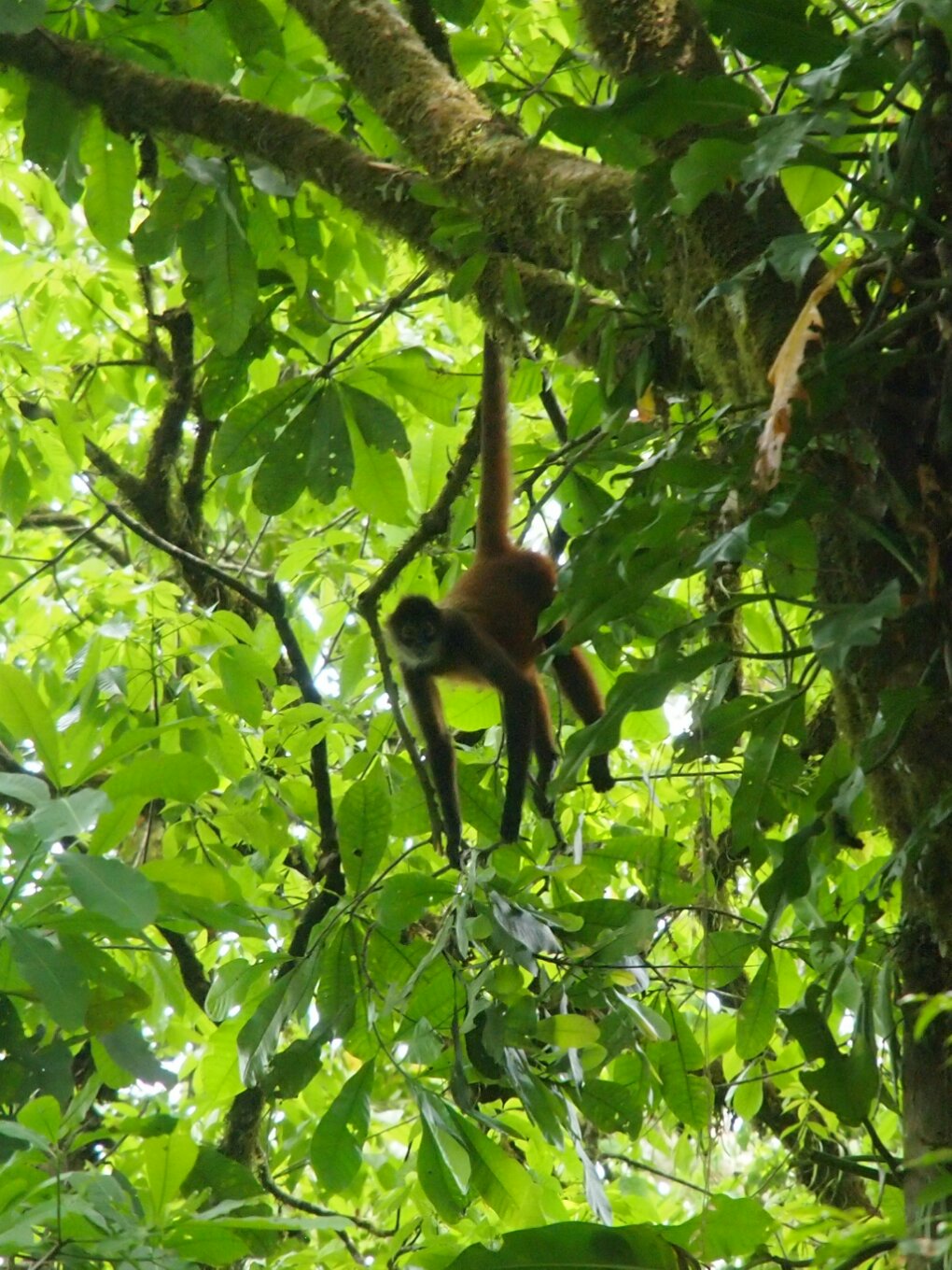
The howler monkeys are known by their loud cries in the early morning, the barking of dogs is similar and is made possible by its pronounced larynx. Also, they took us to sleep in as many nights.
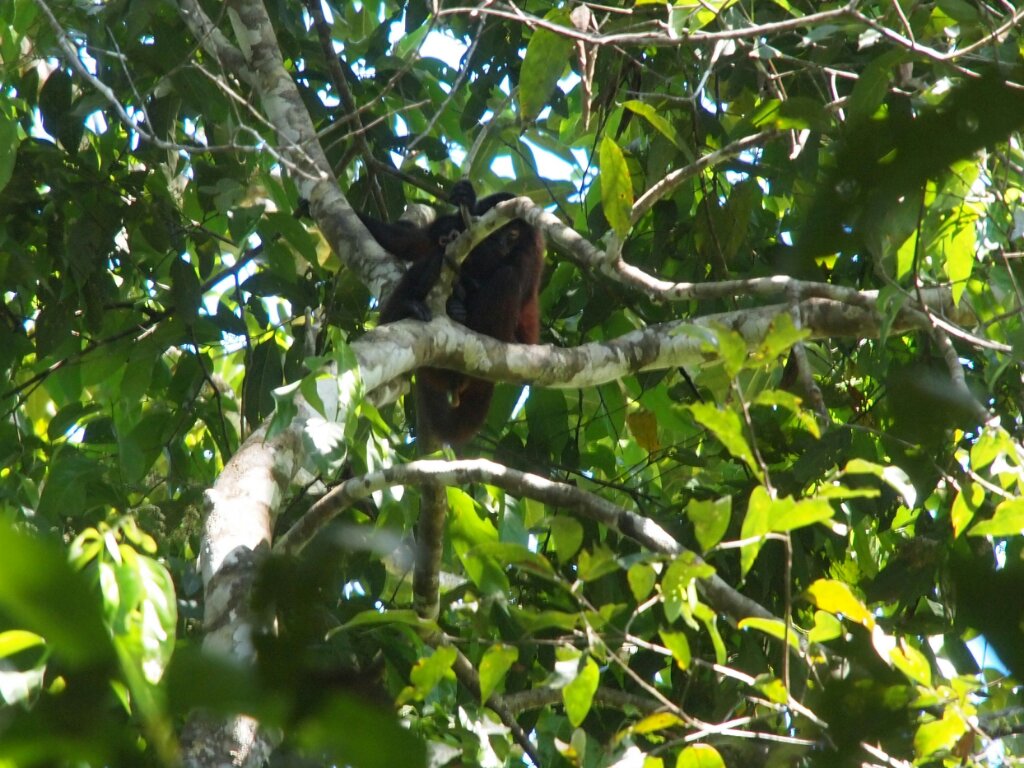
The White Elephant trunk raccoon, also called Koatie is known by its extended movable snout and elongated head.
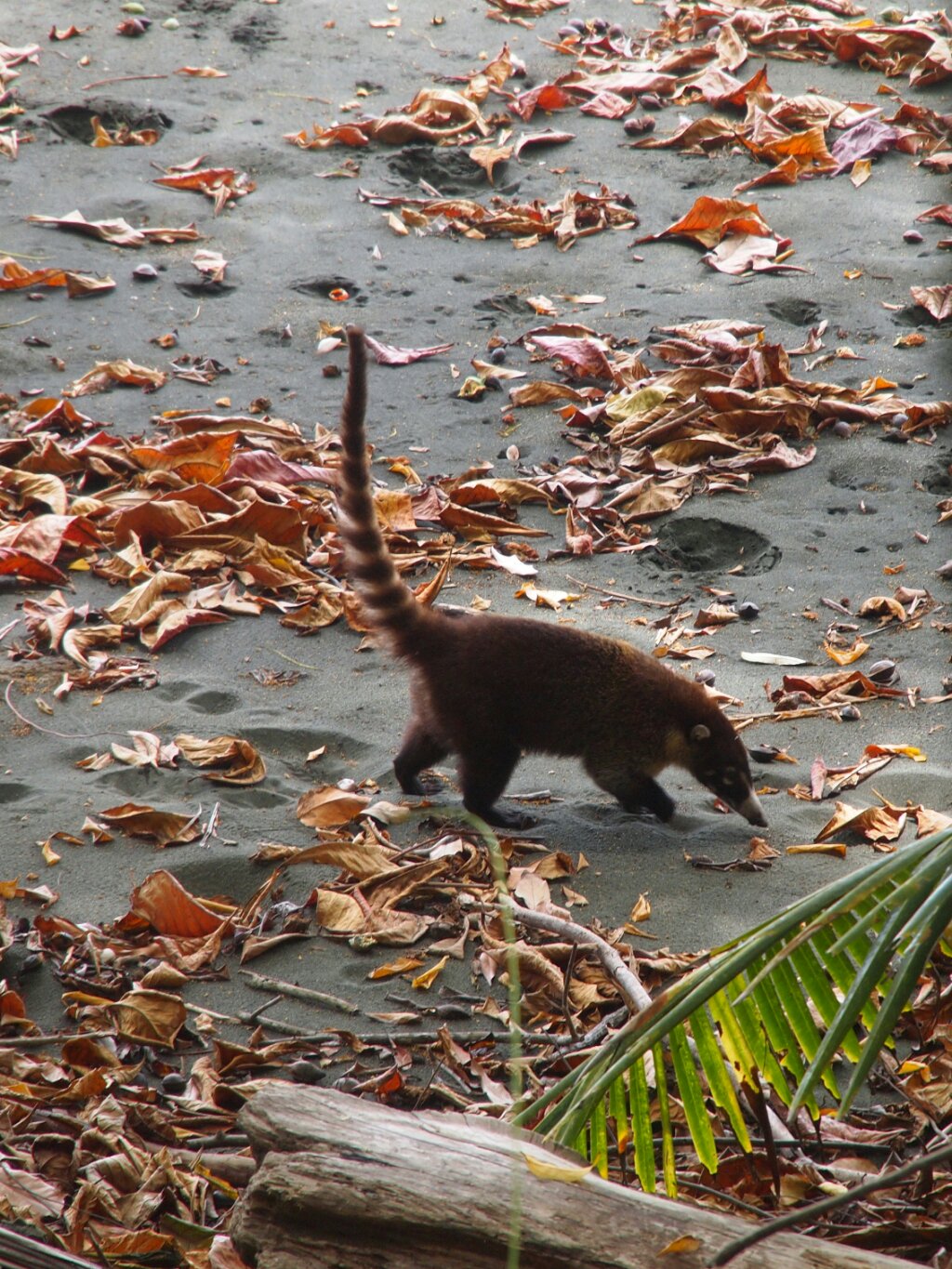
The Tapier is up to 2 meters in length, the largest mammal that may be encountered with the Corcovado National Park. This genus has been known for 14 million years, to be honest it looked like even a dinosaur. Tapiere are solitary animals and herbivores, the further they are nocturnal and pull during the day back into the undergrowth. We had the morning to see the happiness the same Tapier while eating and then still be observed at noon at the Siesta.
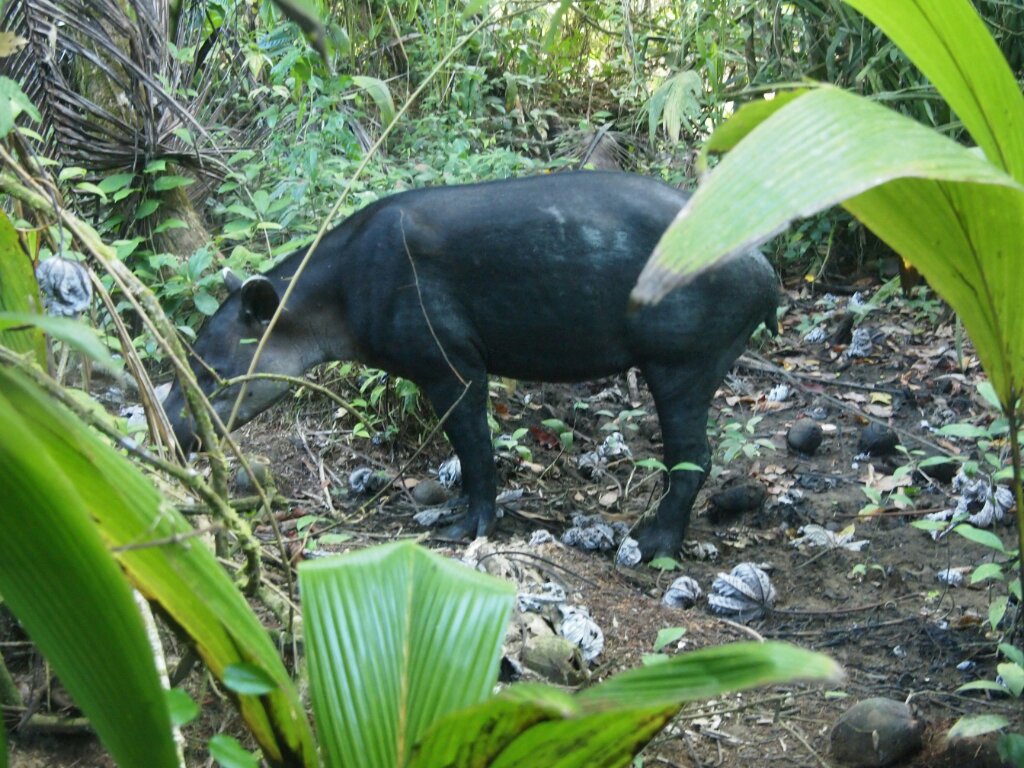
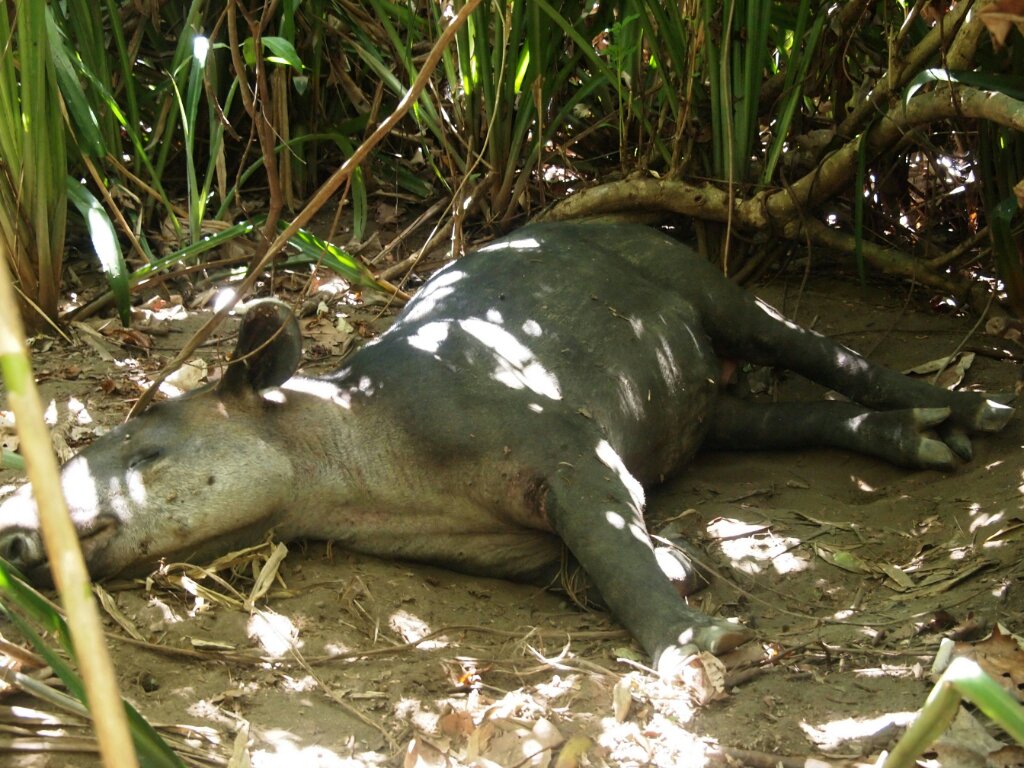
The agoutis belongs to the family of rodents, is a rabbit dwelling and at the same toe walkers, allowing a rapid Weggallopieren at risk.
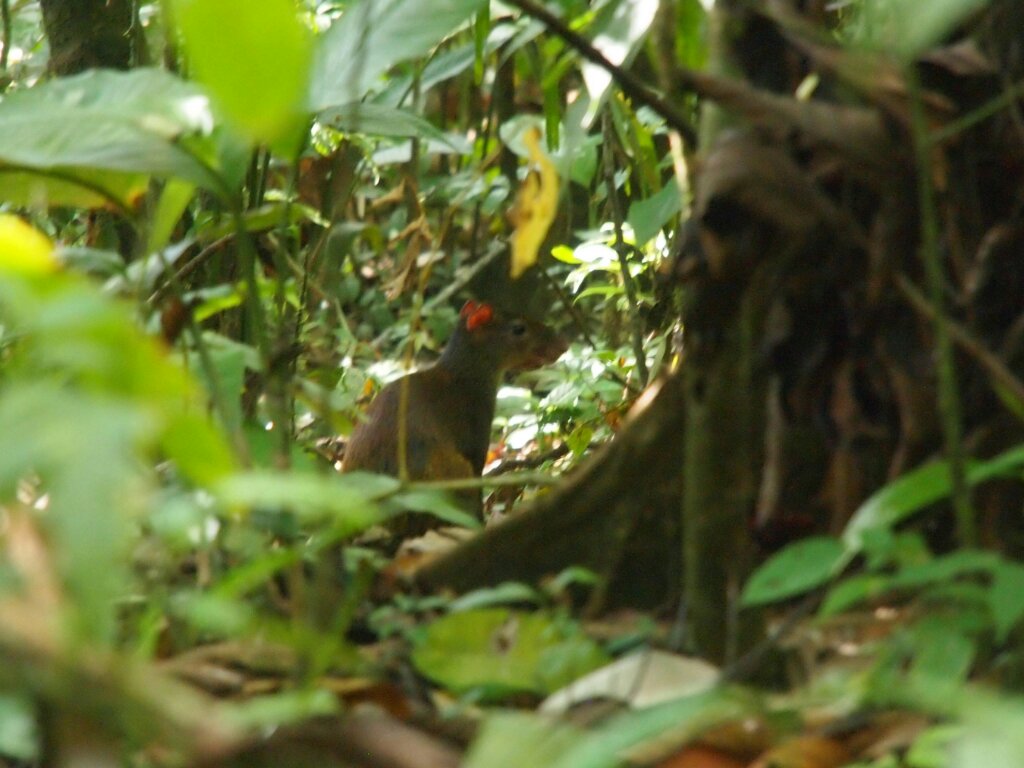
Very often antreffbar in Costa Rica is a small collar Abel pig, also called peccary. These pigs have glands on their backs, which can release musky secretions. Most live up to 20 animals in the herd, we observed two who were crossing a river and then even a whole family of about 15 animals.
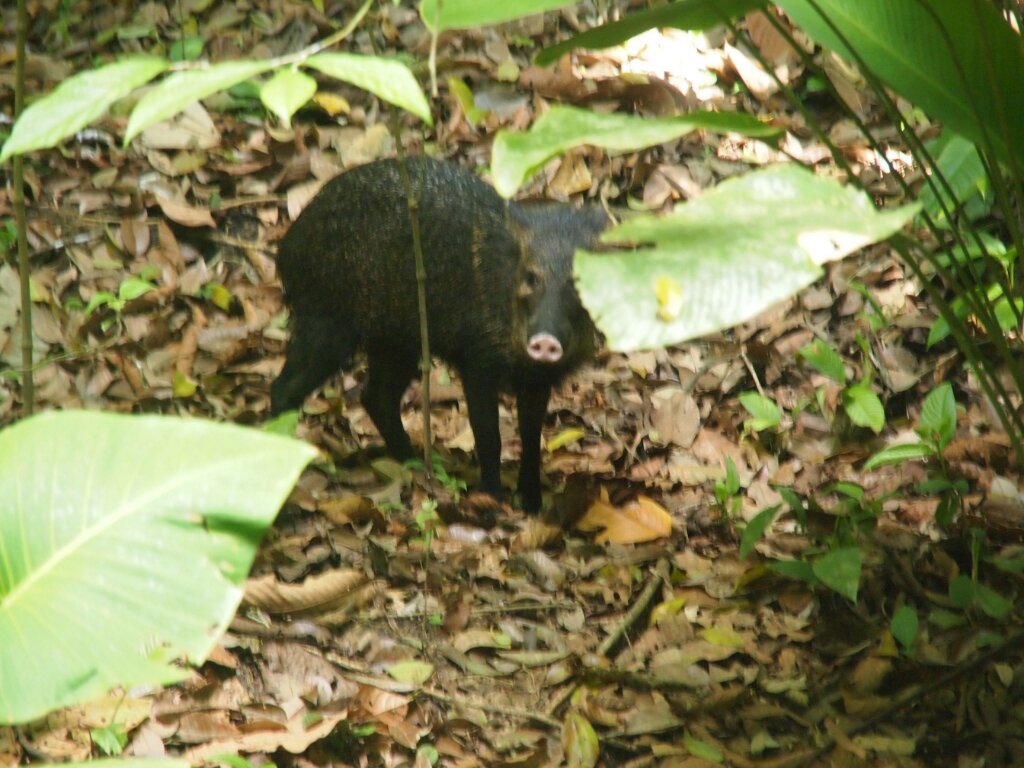
Probably the most beautiful insect in Costa Rica is called the Blue Mophofalter, or Himmelsfalter. They came to meet us flown to the hiking trails and its beautiful color makes a stunning contrast to the green rainforest. Unfortunately they are a bit camera shy, but then I could scan but still one sitting. The exterior color is brownish with eye patch.
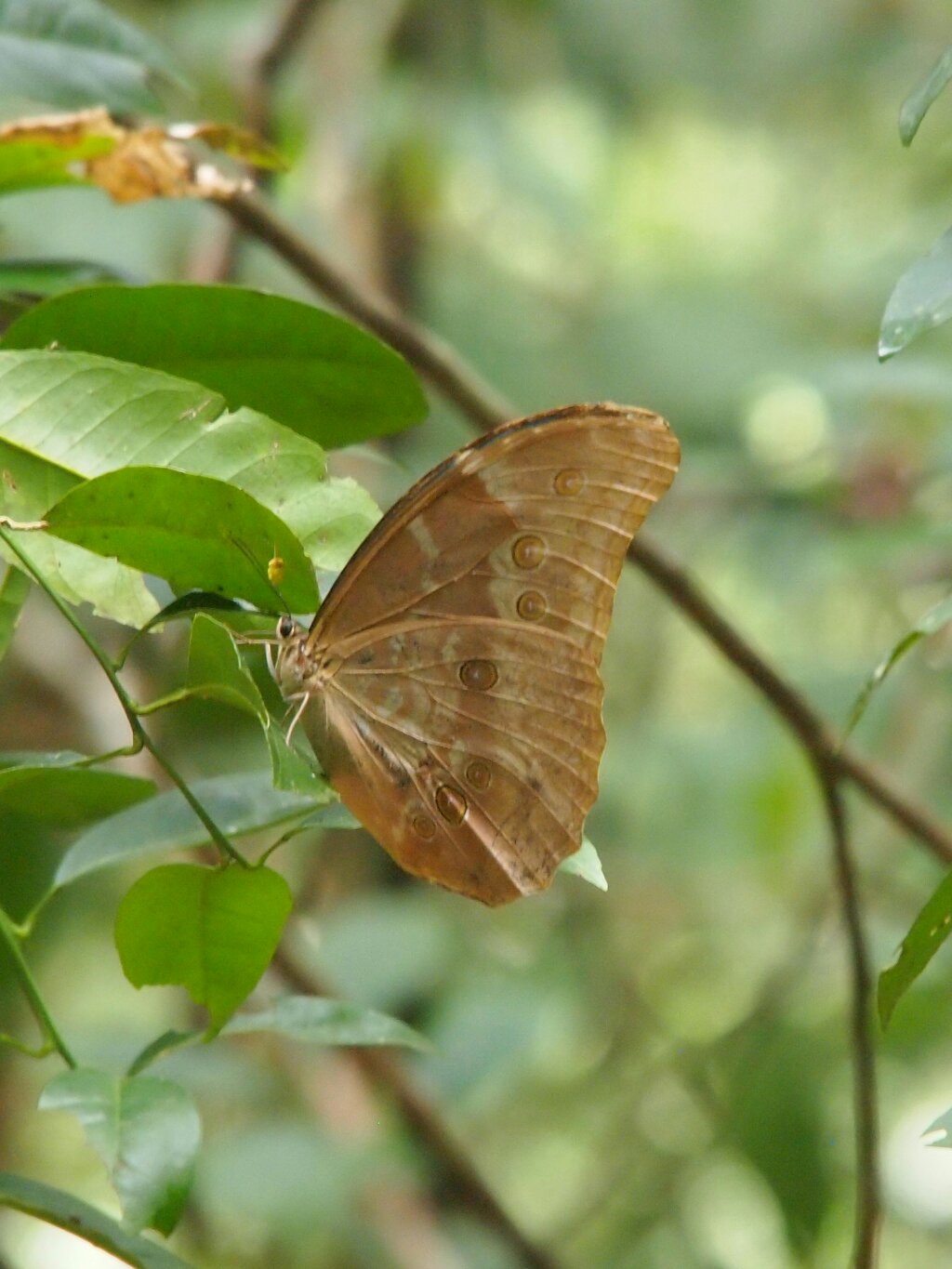
Many different butterflies dancing in the rain forest to himself, art is just only, to catch them in a quiet moment!
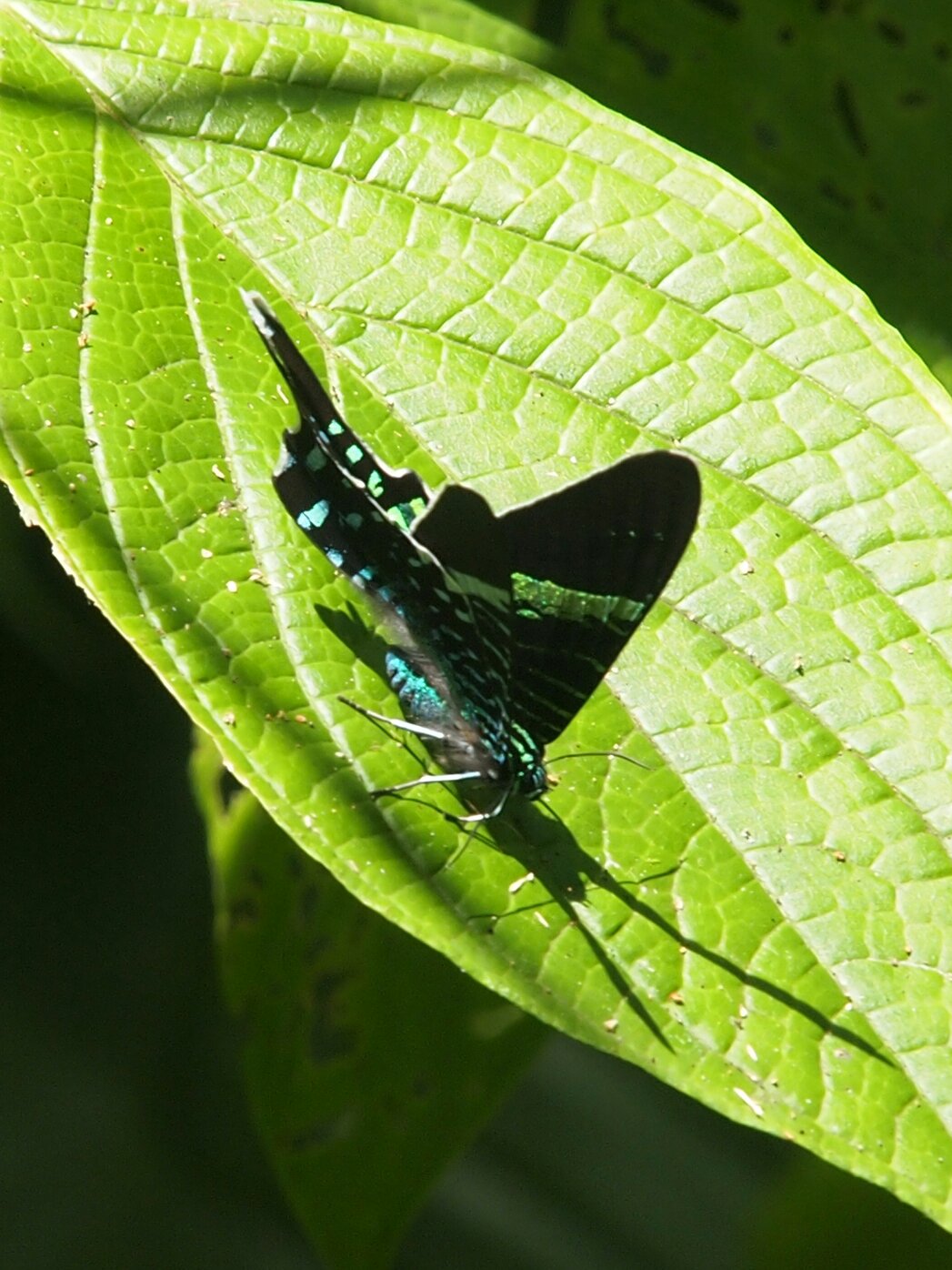
From this little monster should be best not stung, because the bloodsuckers leaves droppings in the wound, which contains bacteria that can cause even the death of the bitten person up to 20 years later. Thanks to our effective insect spray but no animal dared already ran on a radius of 3 meters to us.
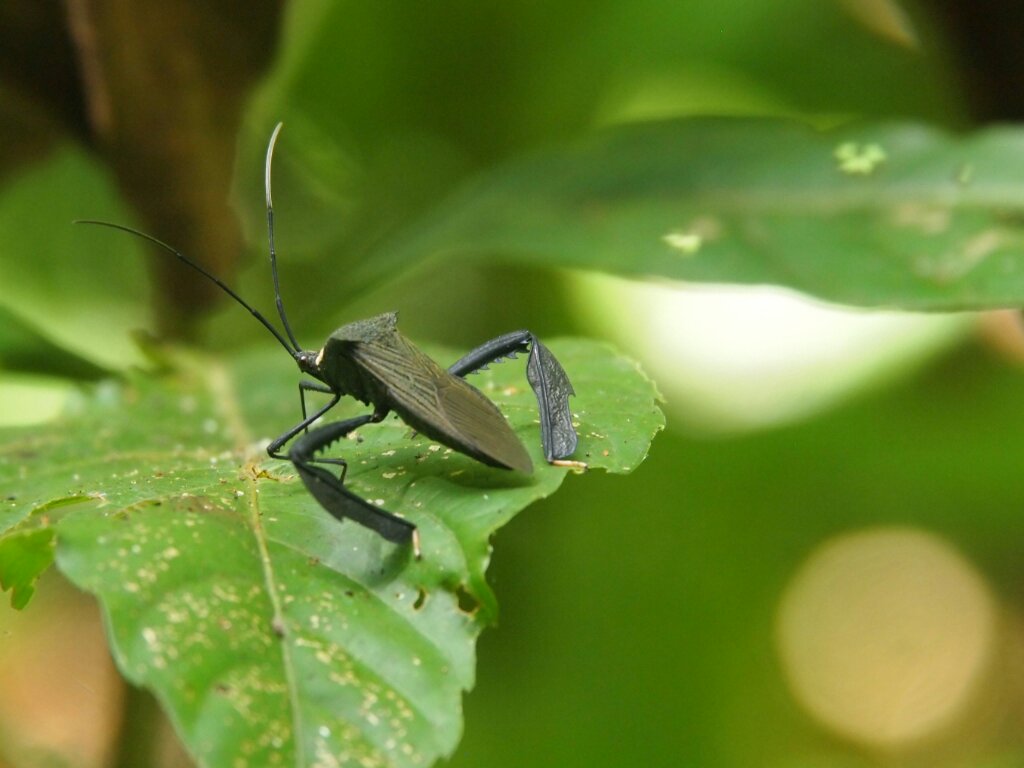
As one can see on the following photo, fall in Costa Rica even the grasshoppers slightly larger than in their home soil!
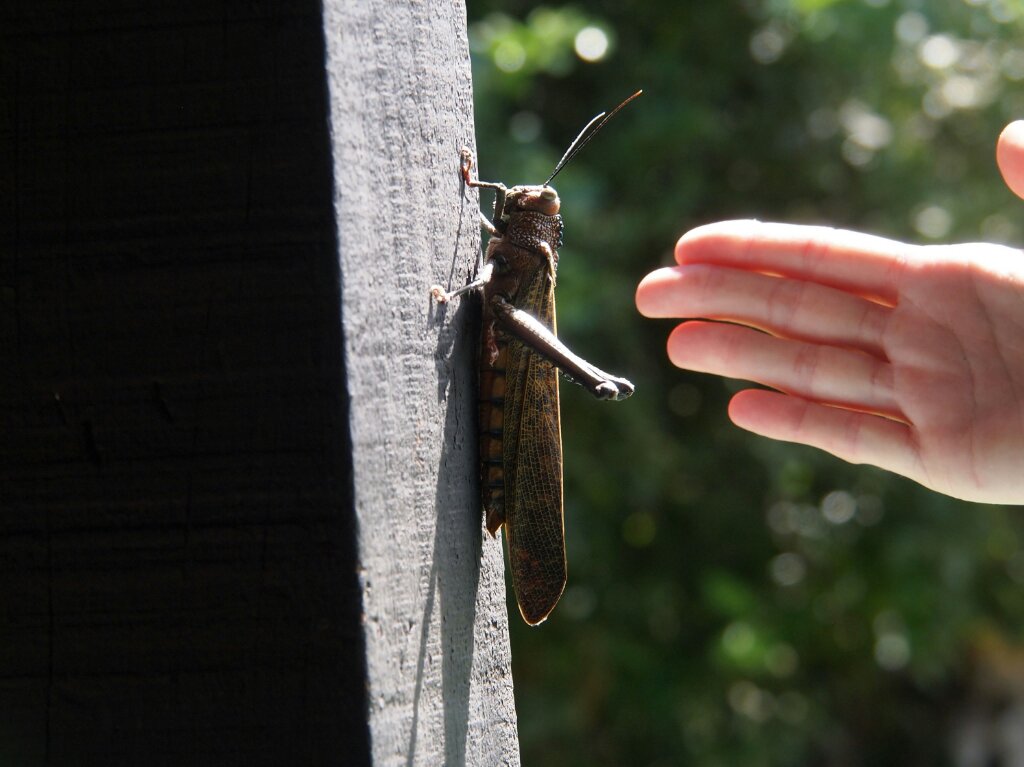
The major networks in Costa Rica anywhere to place networks of the golden silk spider are so strong and tear-resistant, they are used by the population as fishing nets. These insects are up to 4 inches tall and have a very nice drawing.
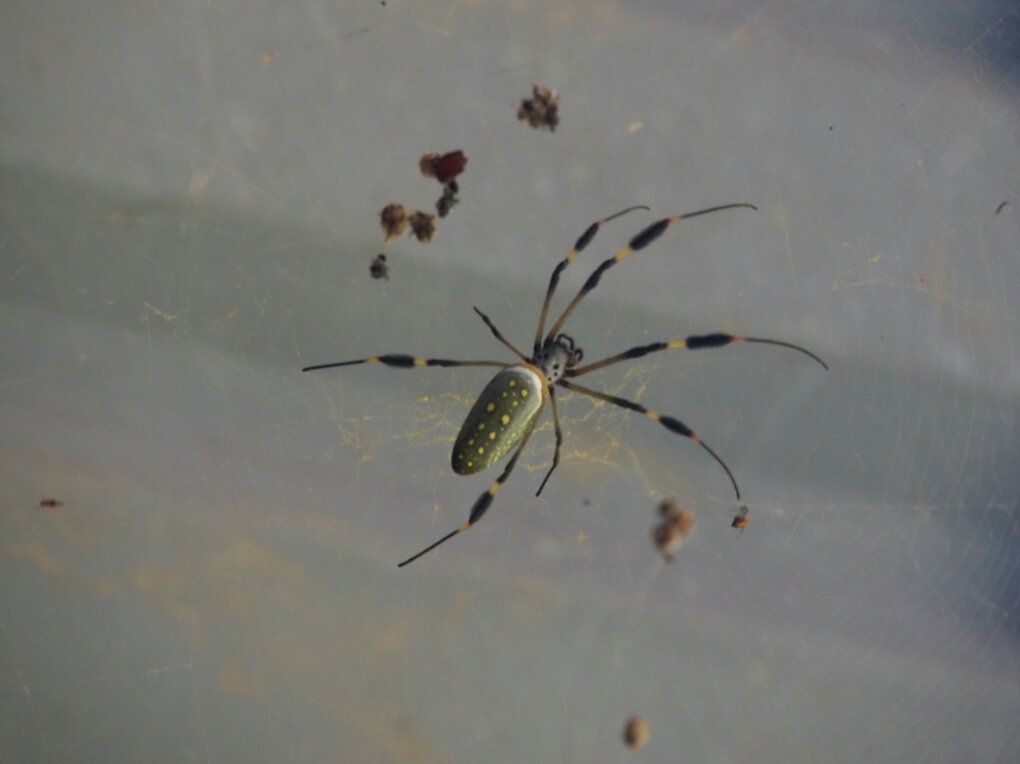
It continues now in the realm of birds that it really is also a dime a dozen here. Here a white Ibis looking for food in the river.
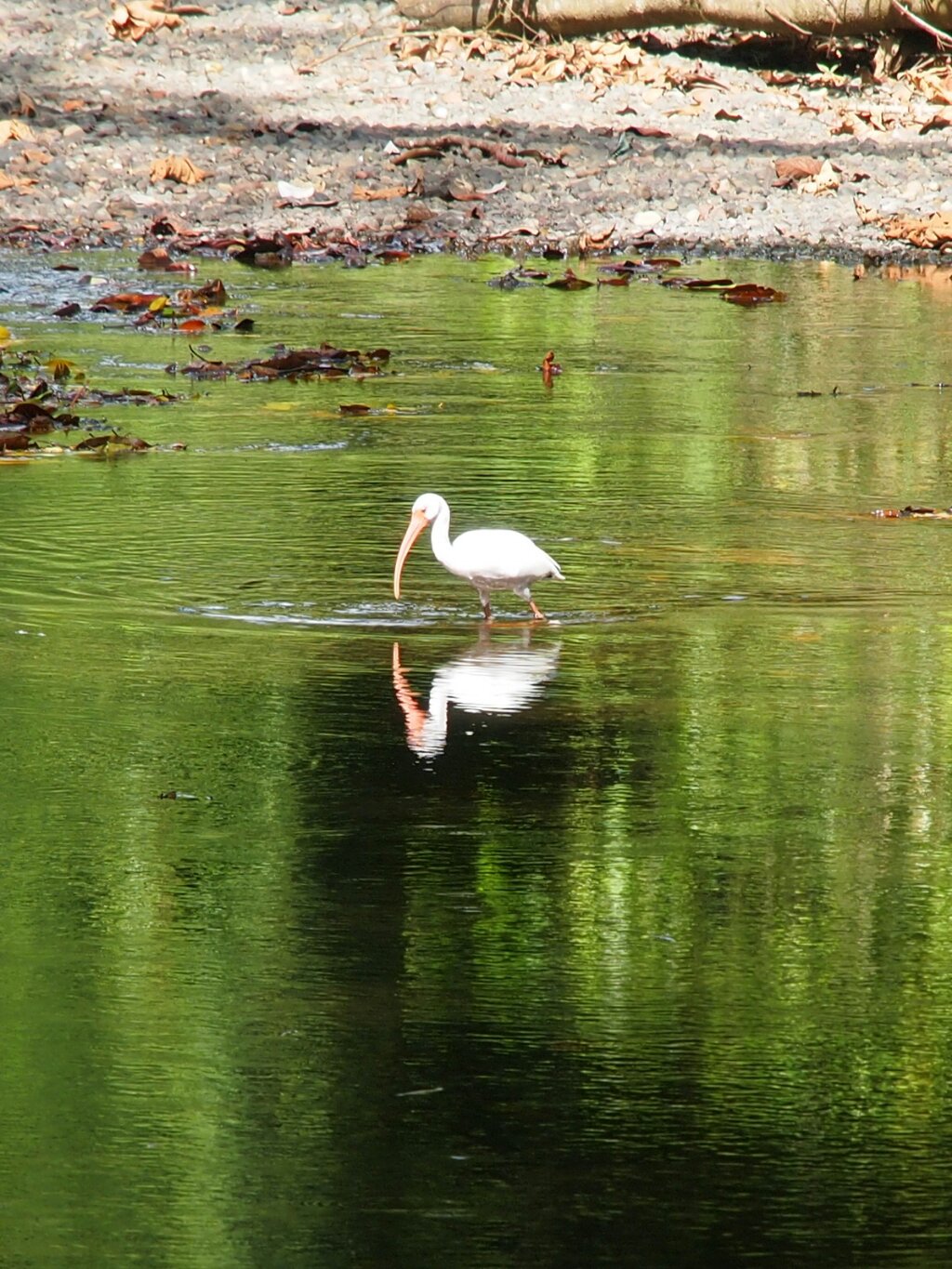
The crax rubra we noticed through his constant hum, a very beautiful bird, which is this is a male because the females are more brown.
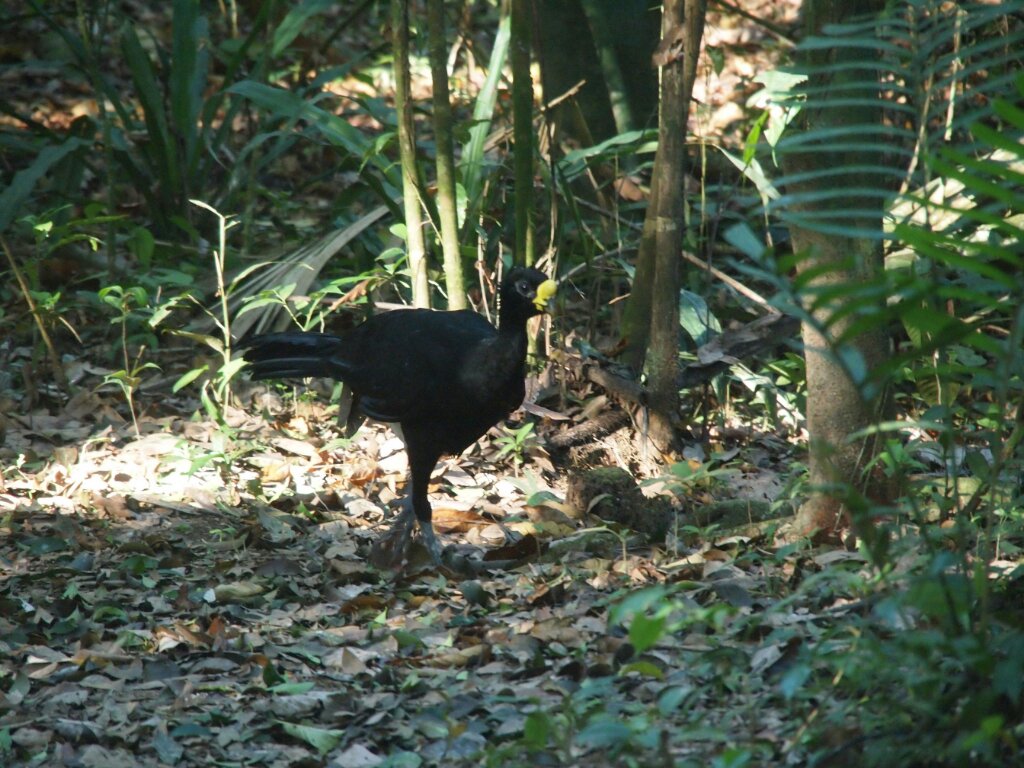
A true showpiece, this Schwarzkehltrogon, which is particularly noticeable by its striped tail.
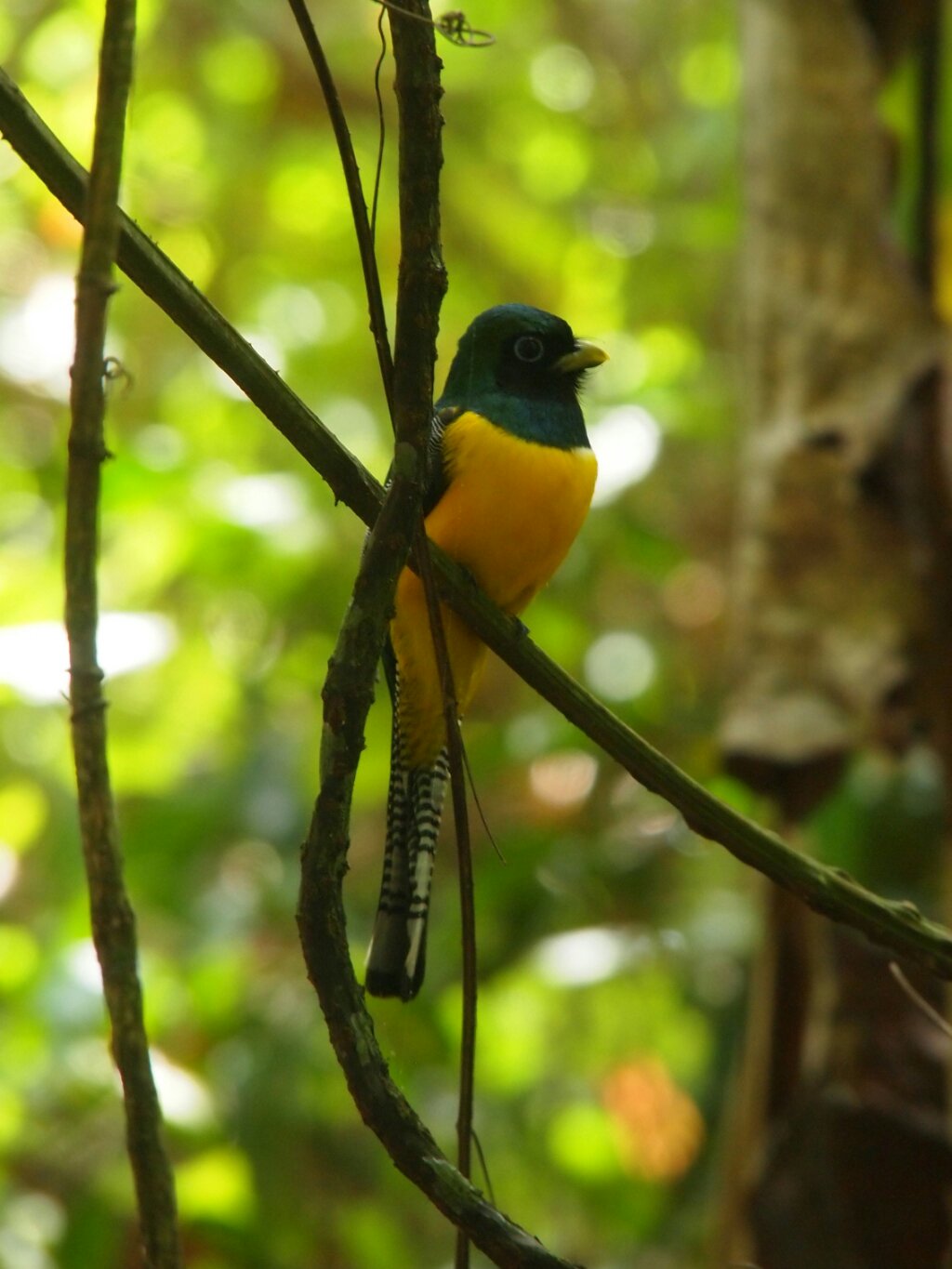
Also in this evening mood is a bird of the star who crowned night herons obviously feels due to the abundance of food in Costa Rica well.
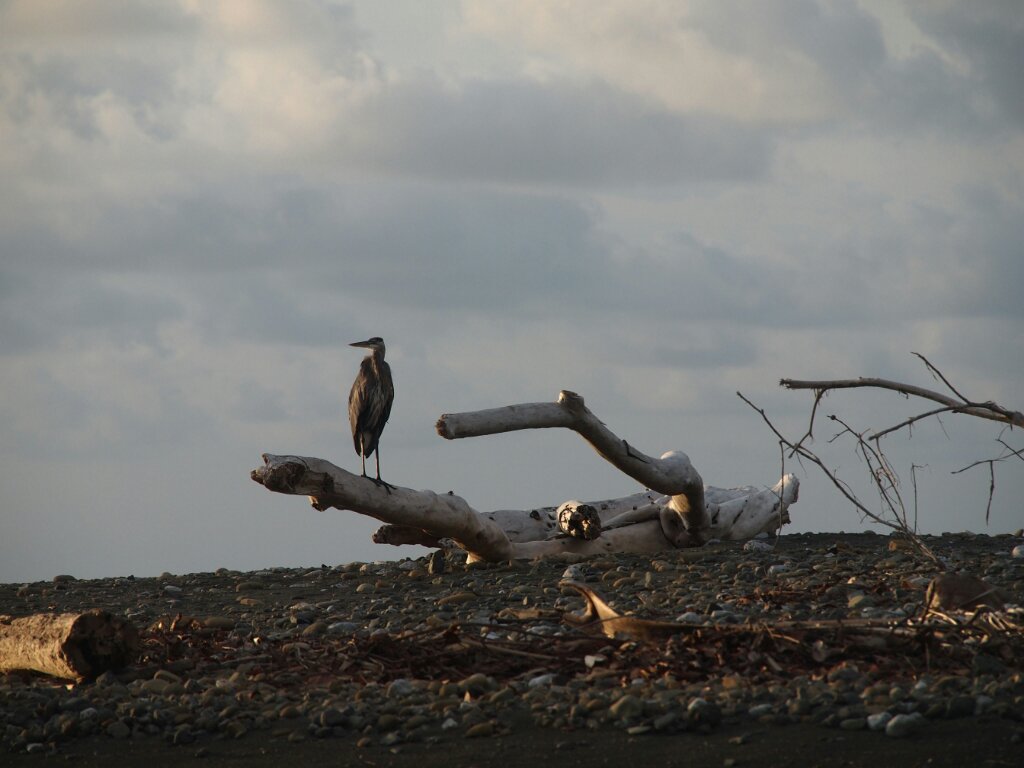
But our absolute favorite animals among birds in Corcovado were undoubtedly the scarlet macaws, one of the largest parrots in the world, which can be up to 90 cm and feed on nuts, buds and other fruits.
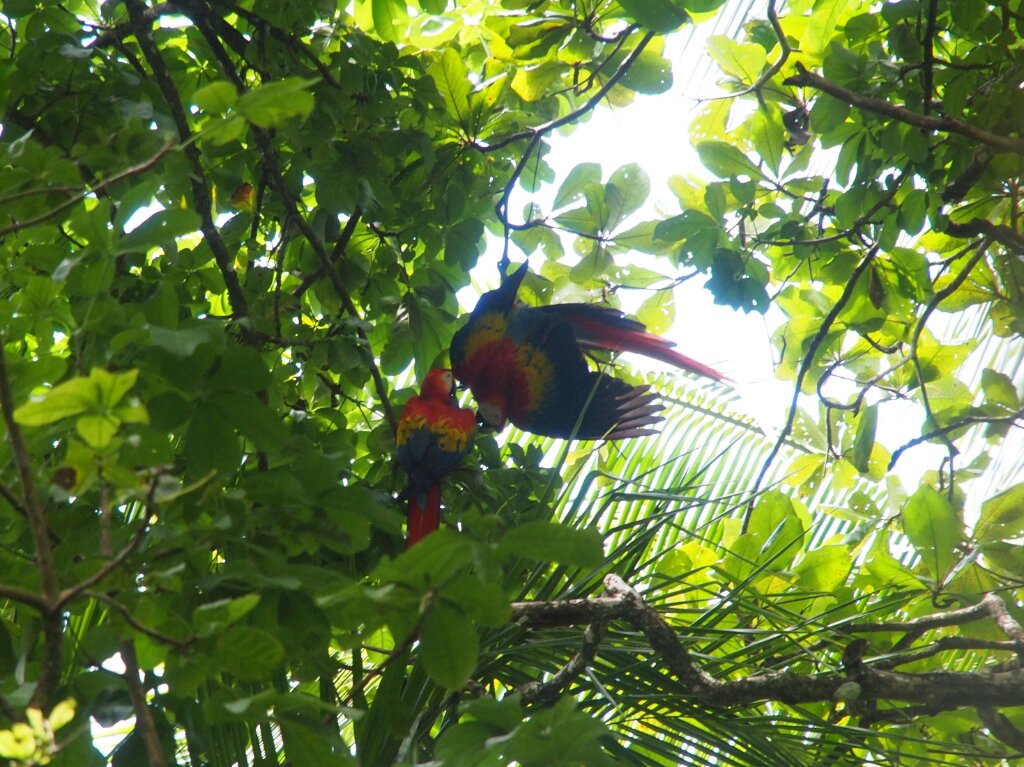
Now, however, generally one of my favorite animals, reptiles, of whom there are also teeming here. At the beginning here a harmless lined snake, which barred our way.
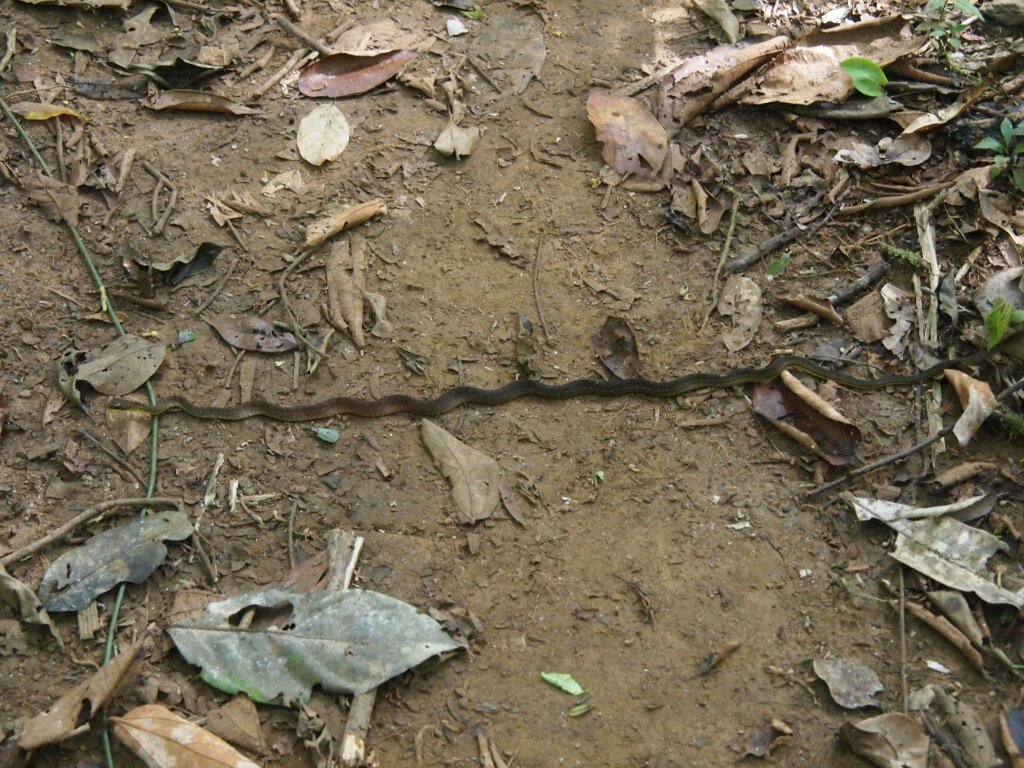
As a picture book to us this Lizard is presented, how lucky considering how fast they really are!
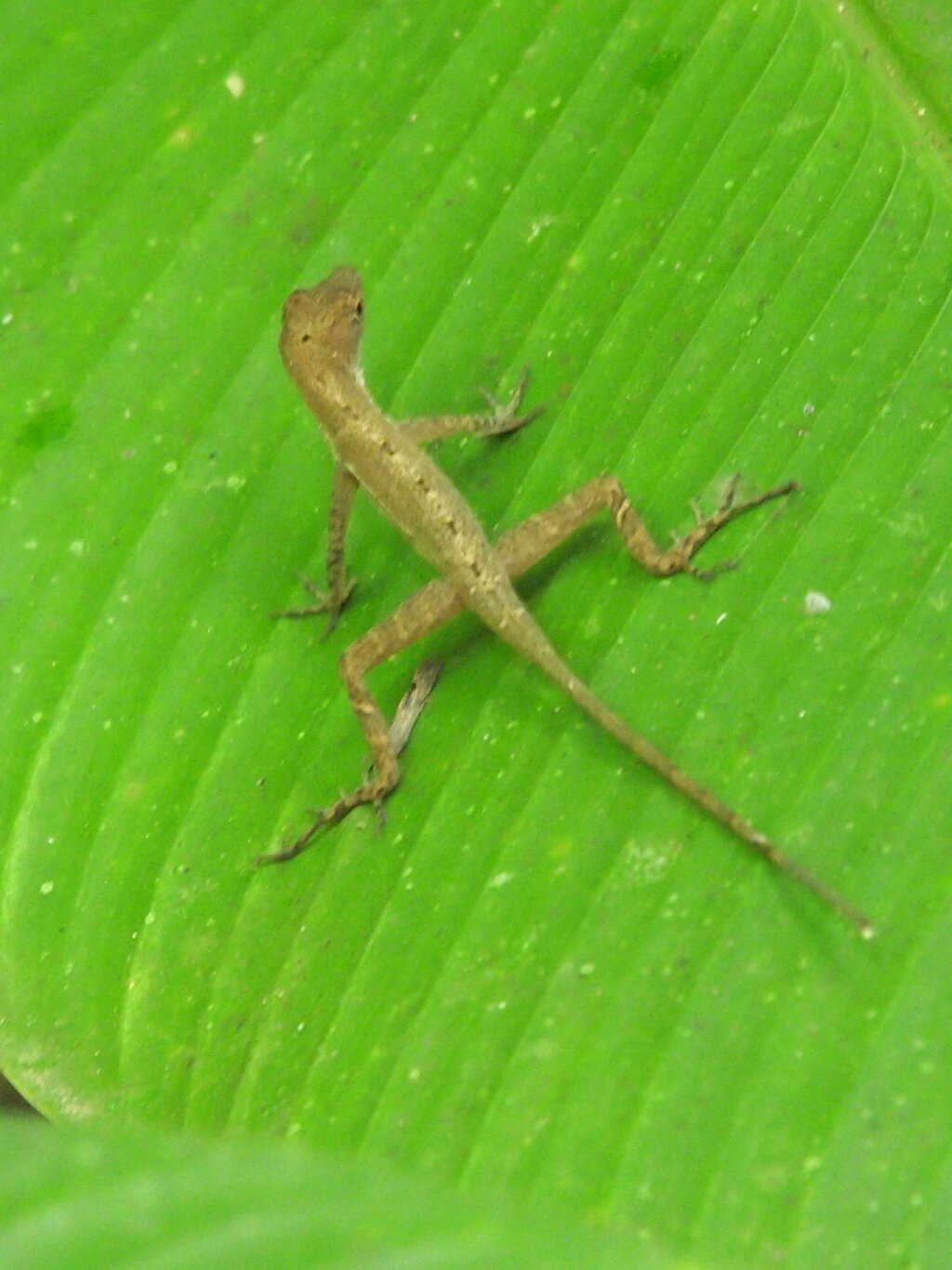
Also a very nice drawing, the Emerald Basilisk, which belongs to the genus of iguanas.
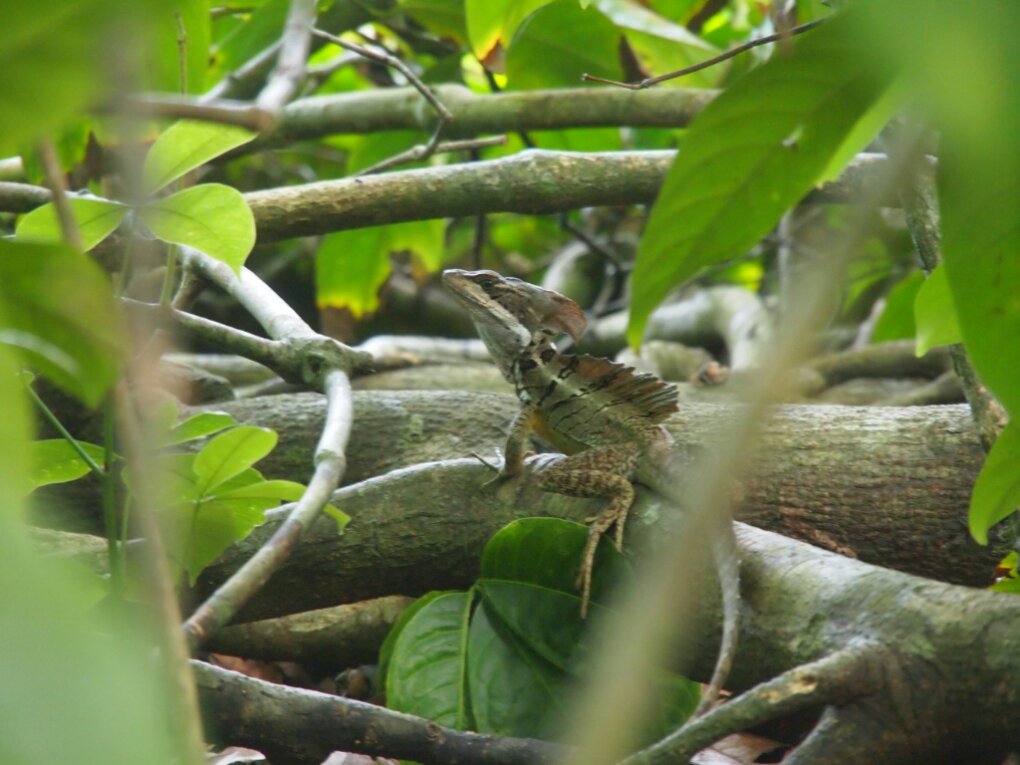
And here is the famous Jesus Christ lizards that can run across the water at a speed of 8 km / h.
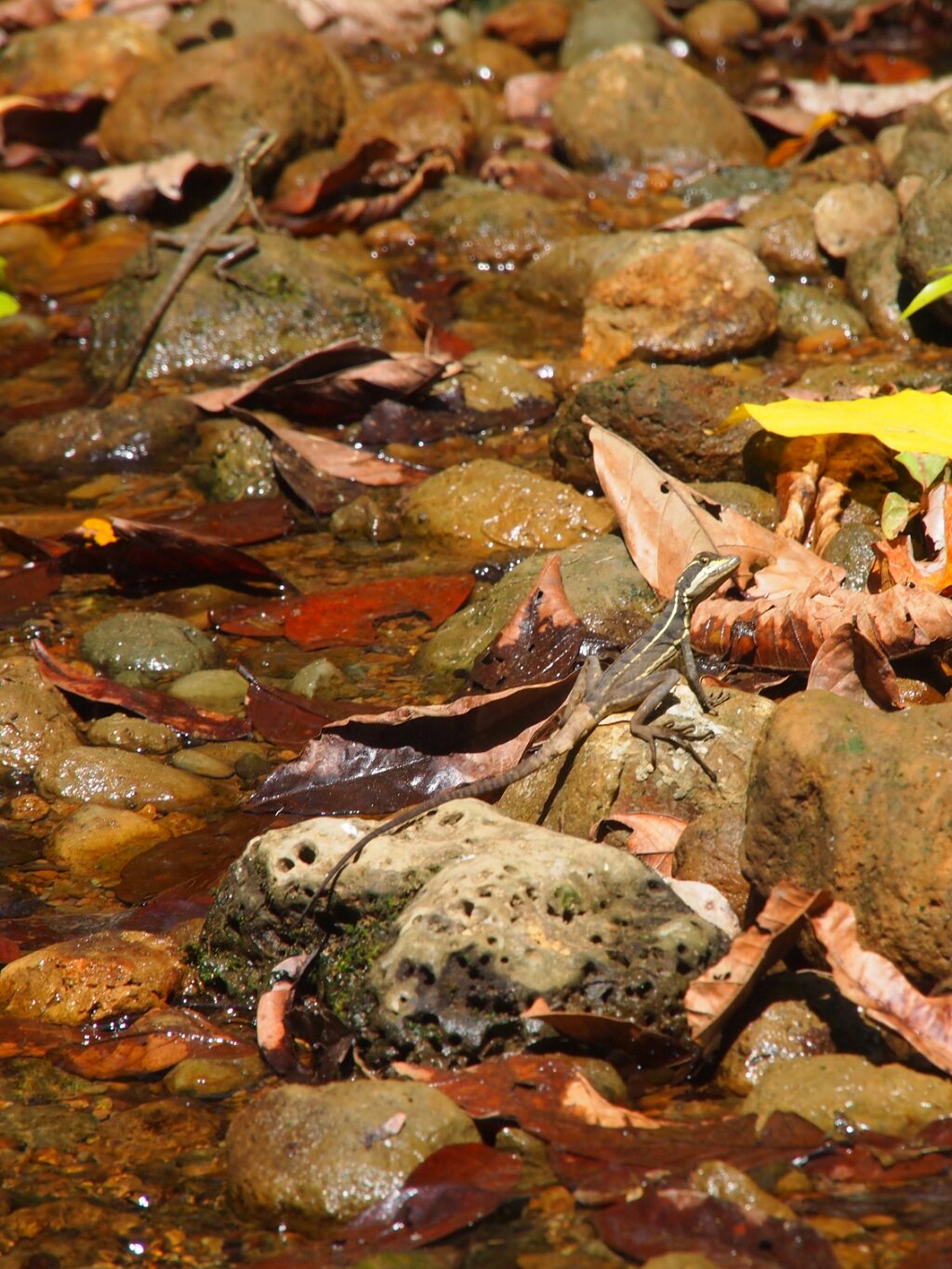
Following are a few impressions from the animal and plant world.
